We have an intense love of traveling in Italy–and after visiting Italy so many times that we’ve each spent about a year there, we have a huge collection of travel tips for Italy to share!
Italy is a delightful and fairly easy country to travel in, but it’s absolutely a world all its own.
Cultural quirks, transportation snafus, tax confusion, and how exactly to buy fruit in a supermarket are just a few of the possible challenges you’ll run into while traveling in Italy.
And, while getting out of your element is part of the fun of visiting another country, reading through these Italy travel tips will definitely make your experience a bit smoother, especially if it’s your first visit!
We have traveled Italy extensively over the course of almost a decade, covering 14 of Italy’s 20 regions, from the northern reaches of the Italian Dolomites to the beaches of Sicily.
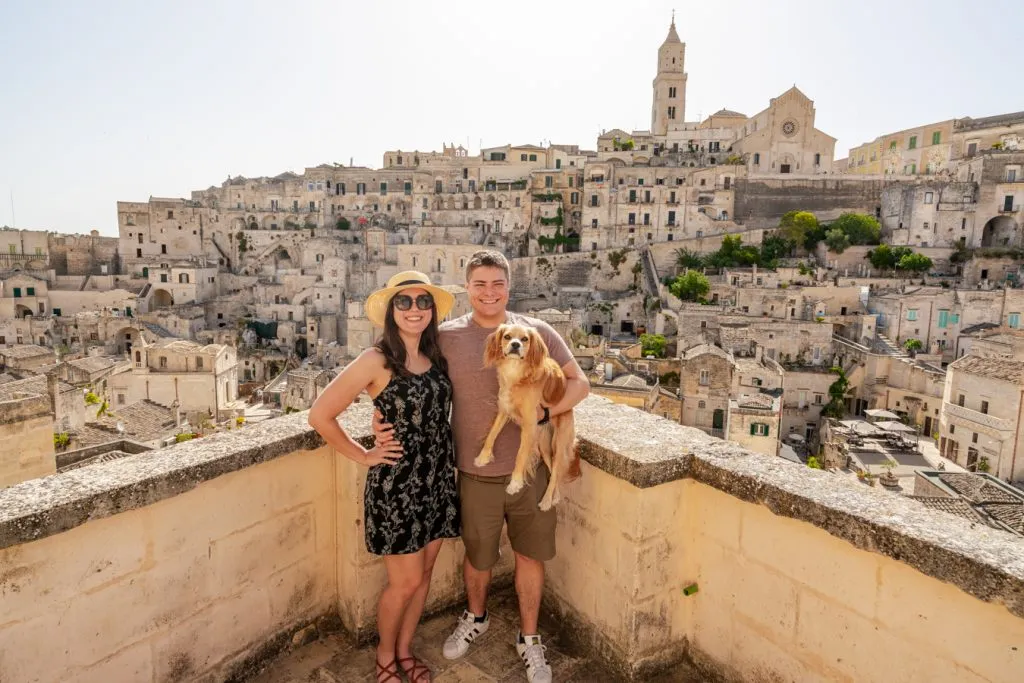
We’ve traveled by plane, train, rental car, taxi, ferry, and bus. We’ve traveled on a budget, and we’ve splashed out on luxury experiences. We’ve mostly traveled Italy as a couple, but also with friends and on multigenerational trips with family.
We’ve paused to experience certain areas more deeply at times, spending a month each “living” in Florence and Bologna, and 2 months in Rome.
In other words, we’ve seen a lot of Italy (and published 100+ Italy blog posts and counting along the way).
After all of those trips, here is our best advice for traveling Italy!
Table of Contents
- A Quick Note on Who We Are
- Advice for Staying in Hotels + Apartments in Italy
- Food-Related Tips for Visiting Italy
- Tips for Transportation and Getting Around Italy
- Tips for Paying for Things in Italy
- Logistical Travel Tips for Italy
- Advice for Avoiding Common Scams in Italy
- What to Know About Packing for Your Trip to Italy
- Other Things to Know Before Visiting Italy
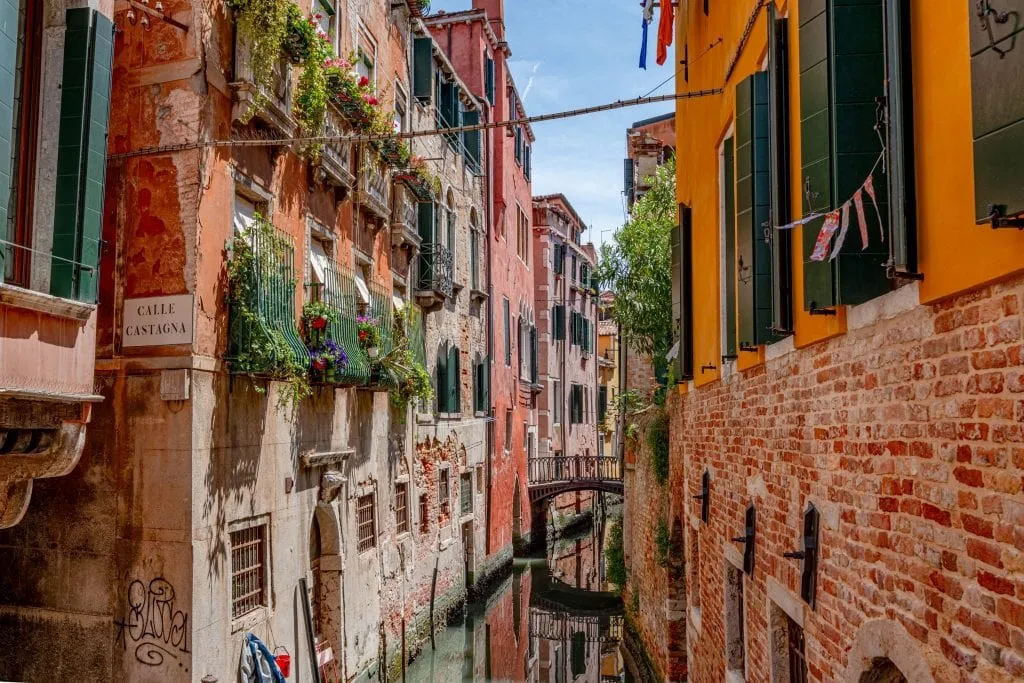
A Quick Note on Who We Are
We are Kate and Jeremy Storm, a travel blogging couple from the USA, and these tips are written from our perspective (if you’d like, you can read more about us here).
Because of this, a couple of these tips speak to cultural differences between the USA and Italy specifically.
However, the focus here is very much on Italy, not the USA, and the vast majority of these Italy travel tips will be useful for travelers coming from anywhere outside of Italy!
Consider this an Italy 101 guide for anyone planning their very first trip to Italy.
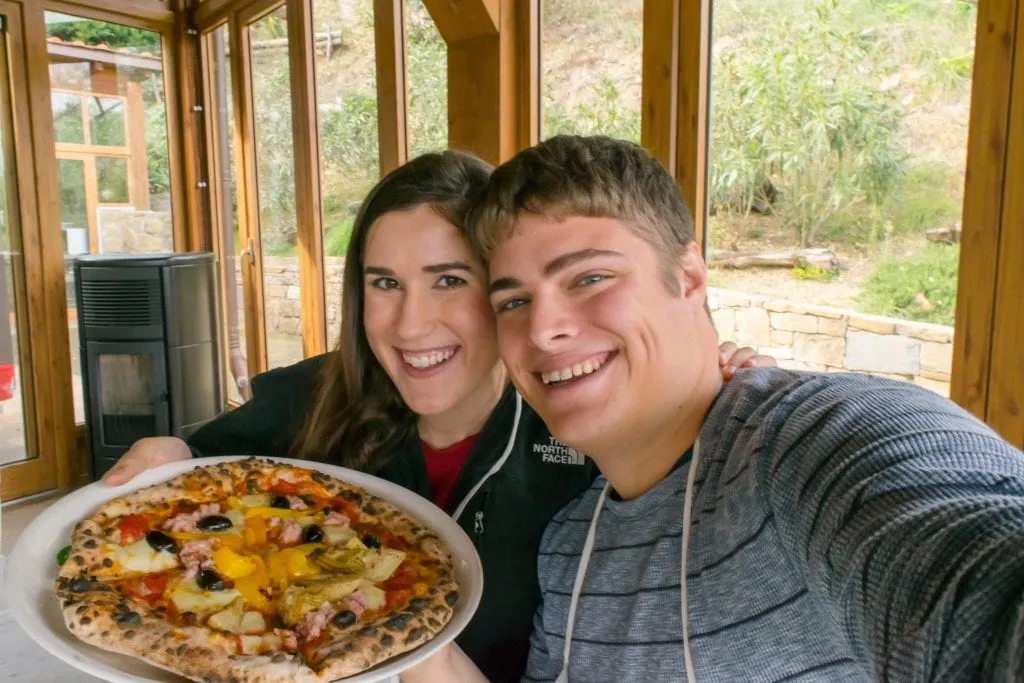
Advice for Staying in Hotels + Apartments in Italy
Hotels and Airbnbs will make a copy of your passport.
… Or take a picture, or write down the number… you get the idea.
This is done for tax purposes on their end and is totally normal, so don’t worry about it!
Leaving your room key at the hotel is common.
It’s not done 100% of the time, but it’s a very common practice in Italy to drop your key off at the front desk as you head out for the day and to pick it up when you come back to the room.
This is much more common at historic hotels, as many of them still use “real” keys!
Beds are tiny and generally don’t come with comforters.
Don’t be surprised if you find only a sheet and a very light blanket on your bed, especially if you’re visiting Italy in the summer!
Oh, and two twin beds being pushed together to make a double bed is common too, especially if you’re renting an apartment rather than staying in a hotel.
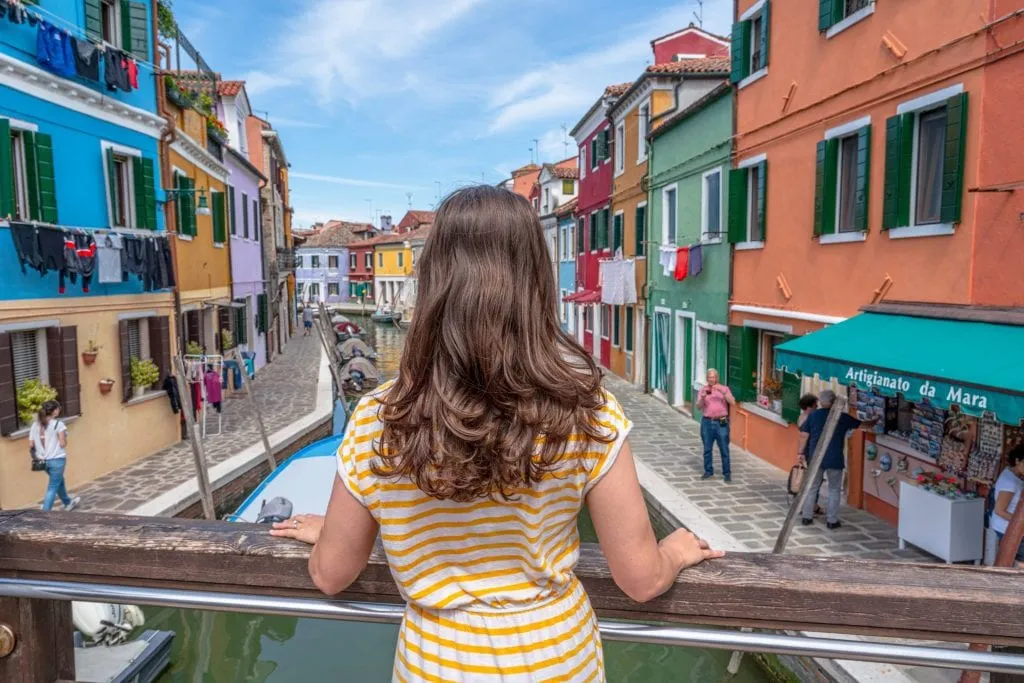
Air conditioning is not a given.
If you’re visiting Italy during the summer, double-check your hotel or apartment before booking.
Air conditioning isn’t always standard, but it’s often very necessary in our opinion!
… and if present, air conditioning isn’t turned on year-round.
While many hotels and apartments offer air conditioning these days, if you’re visiting Italy during the spring or fall, you aren’t guaranteed to have access to it.
In Italy, air conditioning is turned on “for the season” during the summer months, and exceptions aren’t necessarily made for weather.
In other words, if there’s a heat wave in April or October, you may find your hotel room a bit warmer than you’d like!
You’ll need to pay a tourist tax in each city you visit.
This is collected by your hotel and increasingly by private apartments/Airbnbs (they’re required to do so).
This fee is set per person, per night, and is usually around 2 Euros, though it does vary, and some places are more expensive.
So, for example, if you’re a couple spending 4 nights in a city with a 2 Euro tourist tax, you would owe 16 Euros: 2 Euros per person (aka 4 Euros per night for you as a couple), for 4 nights.
This tax must be paid in cash.
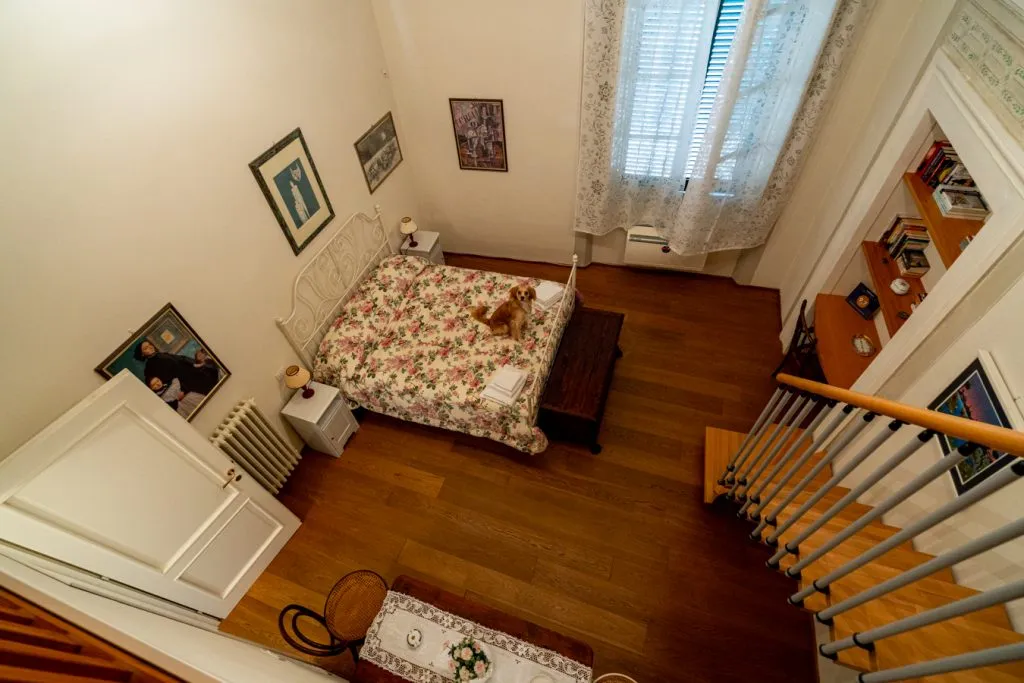
There are exceptions–some higher-end hotels will let you charge it and then handle the cash on their end–but we’ve only had that happen a couple of times.
Cash is always deeply preferred.
Hotels will generally request the tax at the beginning of the stay, but most won’t make a big deal out of having you pay anytime before check out if you don’t have cash on you at check-in.
These taxes are never paid before arrival–so even if you paid for your hotel in full through a service like Booking.com before checking in, you’ll still owe the tax.
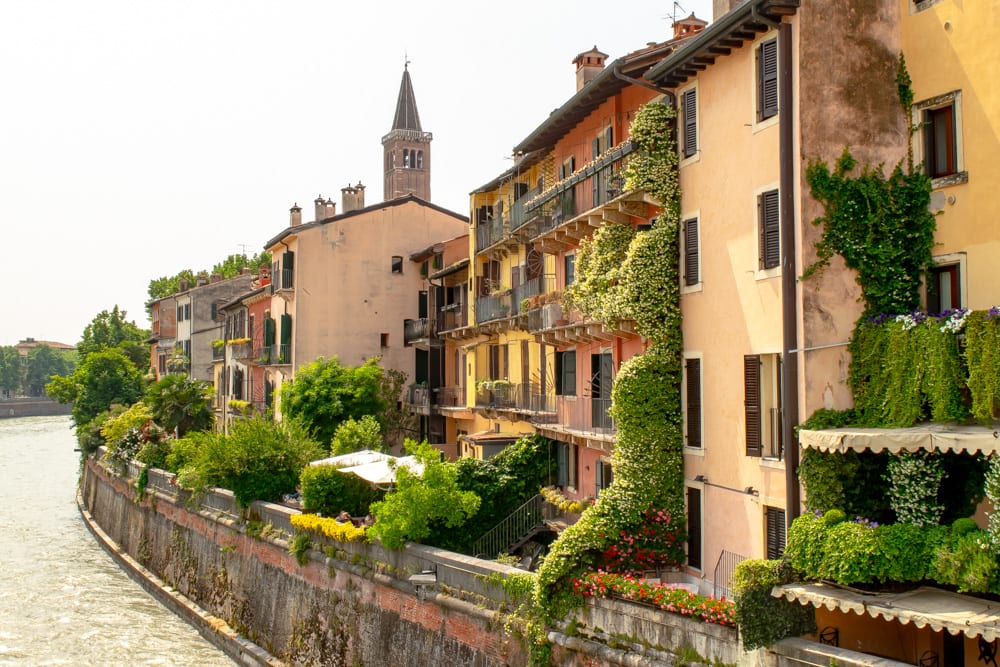
Occasionally you’ll also owe a tourist tax on day trips.
The only place we’ve run into this is the highly touristed Capri, but it does happen.
As of 2024, Venice is–finally, after years of chatter–piloting their new 5 Euro tax for day-trippers during certain days between April and July 2024.
Whether or when this becomes a more regular practice is still up for fierce debate, but if you’re spending the night in Venice, it’s nothing you need to worry about, regardless.
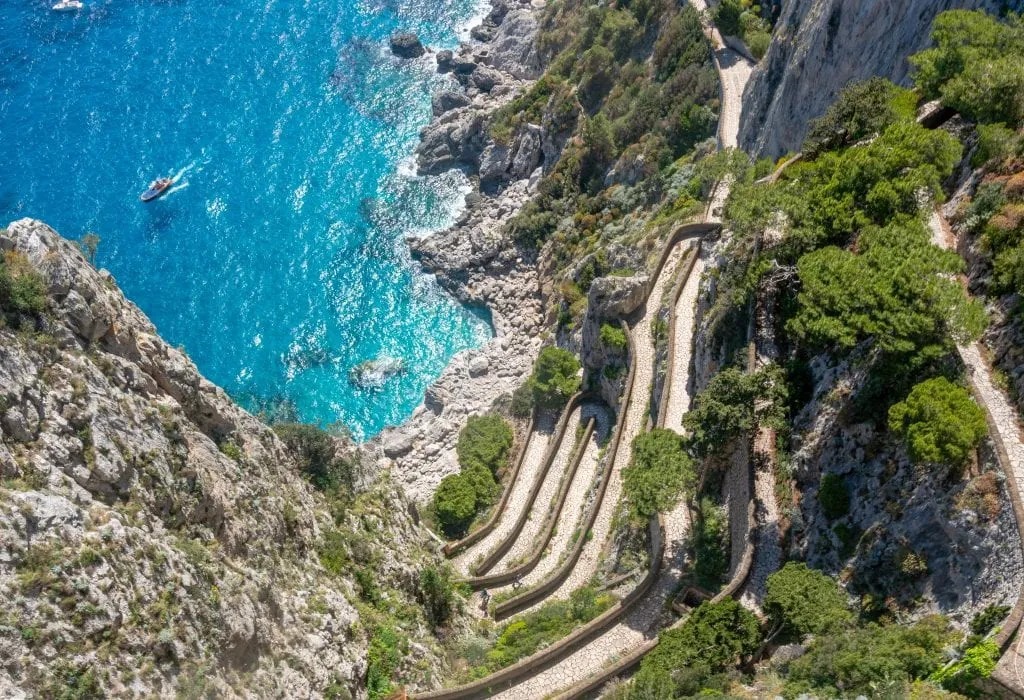
Don’t expect a clothes dryer.
Even if your apartment rental or Airbnb comes with a washer, you won’t find a dryer–but there will be a rack to line-dry your clothes on.
If you have mobility concerns, choose a place to stay carefully.
Narrow, steep staircases are very common in Italy–we’ve climbed many of them to reach apartments or hotel rooms.
Elevators/lifts are far from a guarantee, especially at small, family-run properties.
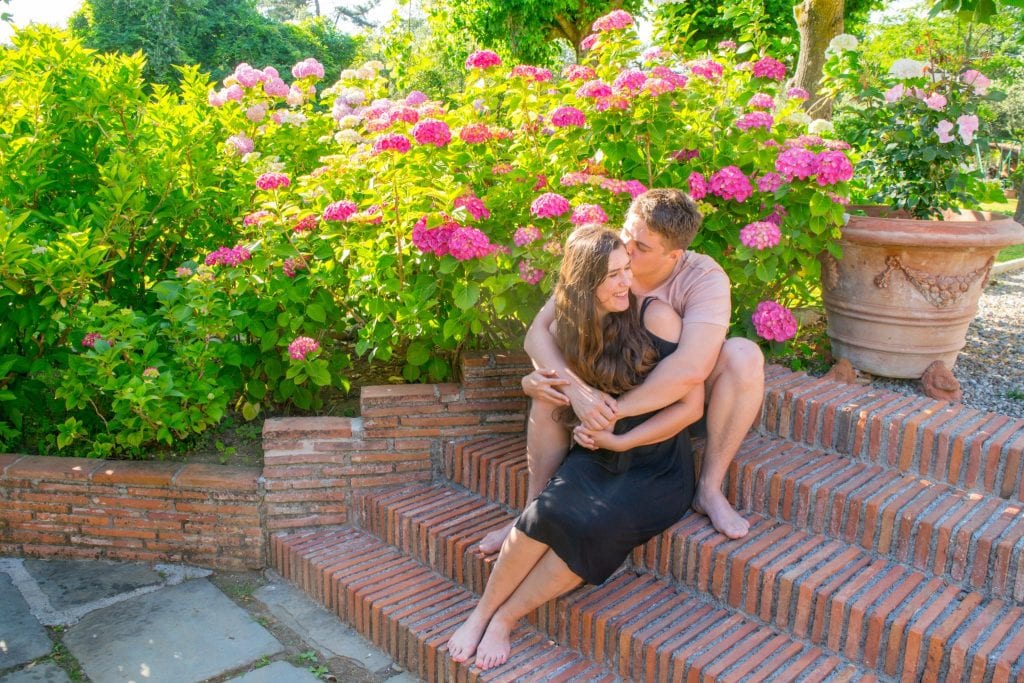
Food-Related Tips for Visiting Italy
Restaurant Tips for Italy
Food is extremely local, and you’ll eat well by sticking to regional specialties.
In other words, you won’t be likely to find great Napoli-style pizza in Rome or pasta carbonara in Sicily.
(… but since Roman-style pizza is also incredible and Sicily has its own magnificent array of pastas to choose from, you won’t miss them much, either).
Because of this, food tours in Italy are fantastic.
Everywhere you go in Italy, you can learn about new foods, dishes, and eating habits from locals–and that variety makes food tours extra special.
We love taking food tours in Italy and have taken several incredible ones.
Some of our favorite food tours include this one in Florence, this one in Emilia-Romagna, and this one in Rome!
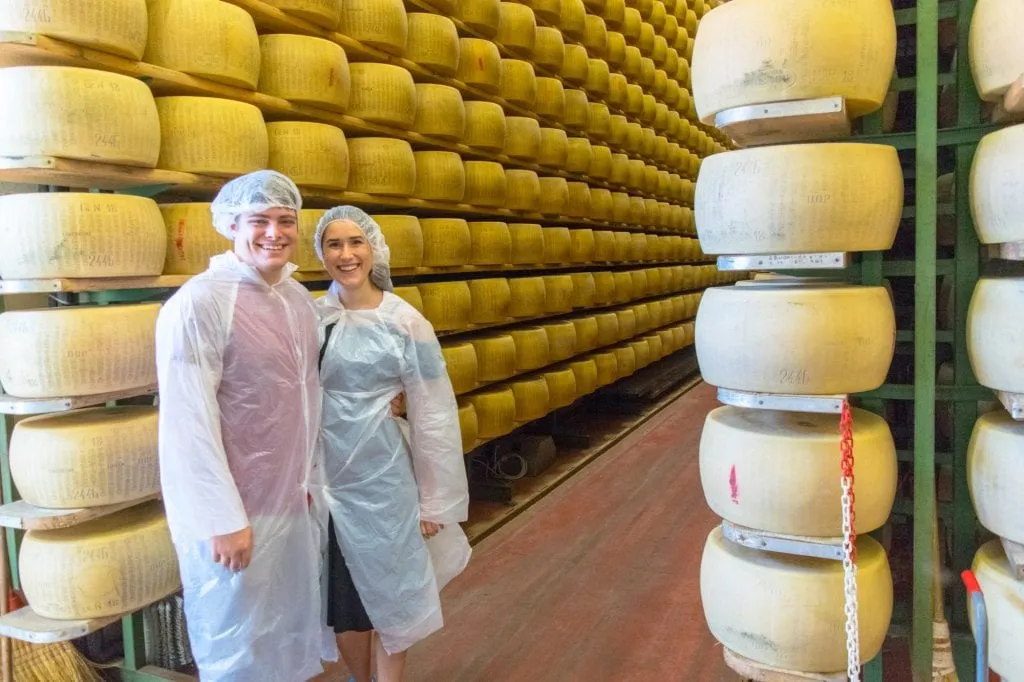
Don’t use a spoon to eat your pasta!
In Italy, this is for children.
… And don’t cut it.
It takes a while to get the hang of twirling neatly with a fork, but it’s worth it!
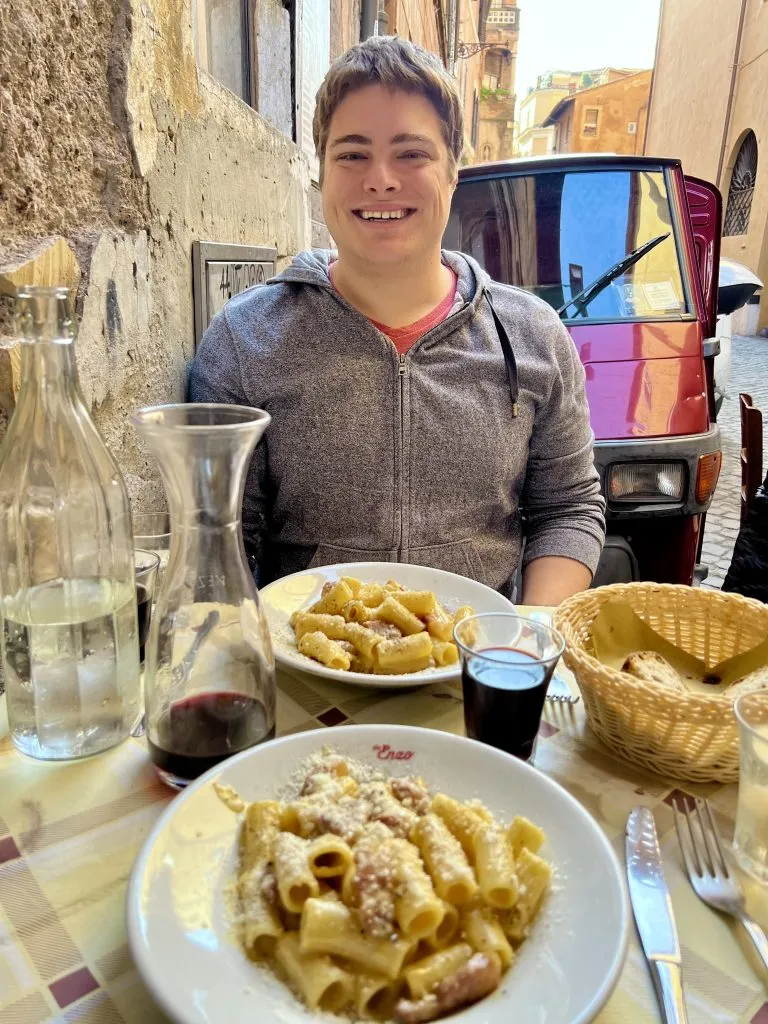
The house wine is usually delicious.
… And even if you don’t see it on the menu, there’s a 95% chance that it exists.
You just have to ask for it (vino della casa).
House wine is sold by the liter.
Generally, you’ll order a quarter, half, or entire liter, and you’ll have your choice of red (vino rosso) or white (vino bianco).
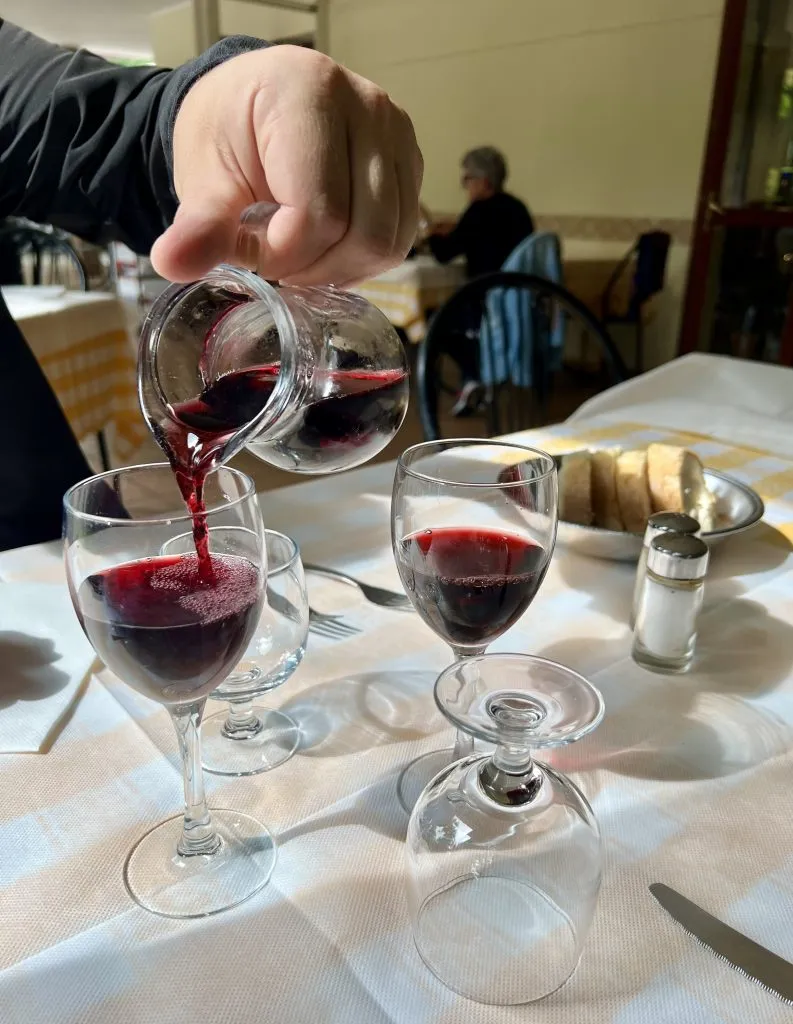
The bread is not included. Sort of.
Some restaurants will bring bread to the table before your meal, and it’s typically not “free”.
However, more often than not it’s included in the coperto, or cover charge (usually 1-3 Euros/person), so you’re likely going to pay for it regardless and might as well eat it.
If you’re not sure what the deal is, ask!
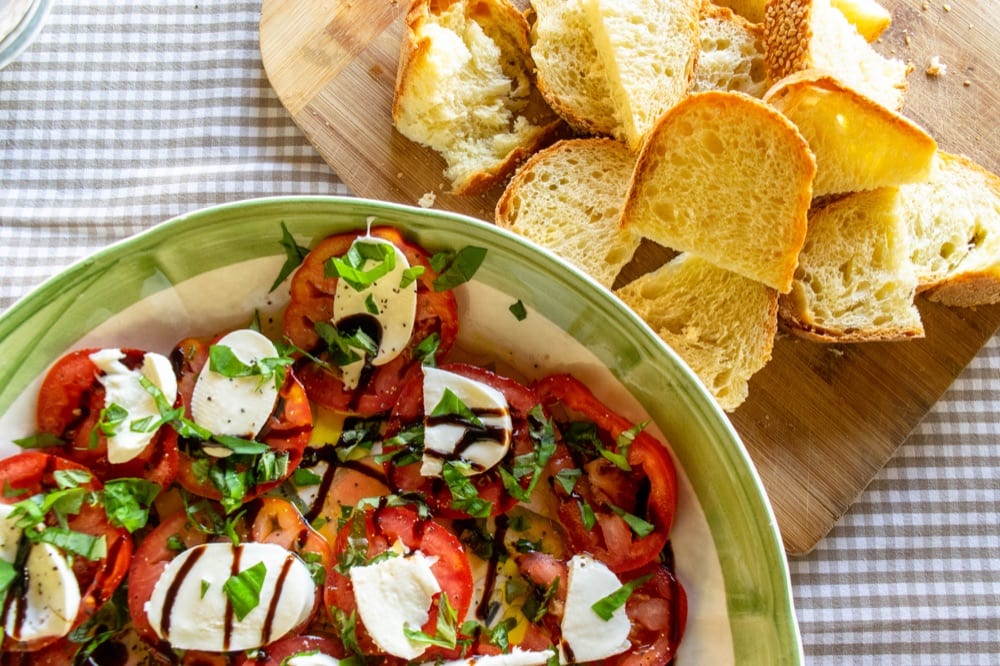
Garlic bread does not exist here.
It is merely a delicious American delicacy.
… And neither does fettuccini alfredo, or chicken on literally any kind of pasta.
Italian-American food is tasty, and we eat plenty of it at home, but it’s not Italian.
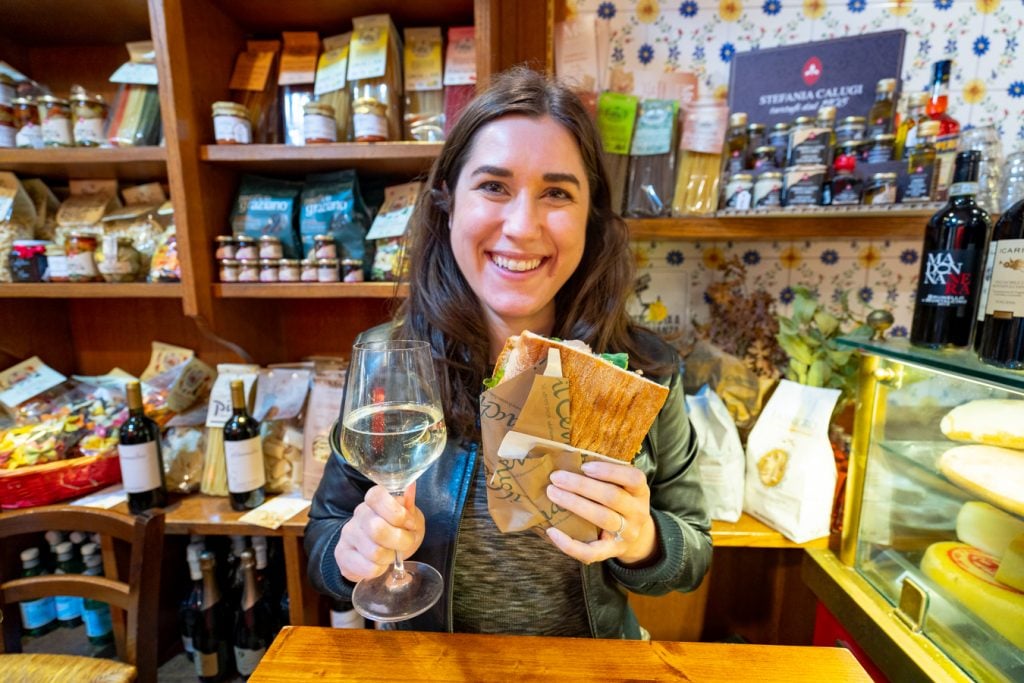
Cappuccino is a breakfast drink.
The reason for this is digestion–everything about eating in Italy revolves around digestion, and frothy milk in the afternoon?
Not great for digestion, as the local thought goes.
Obviously, you can order it–Jeremy does–but if you’re a “when in Rome” sort of traveler, stick to espresso after about 10:00 AM.
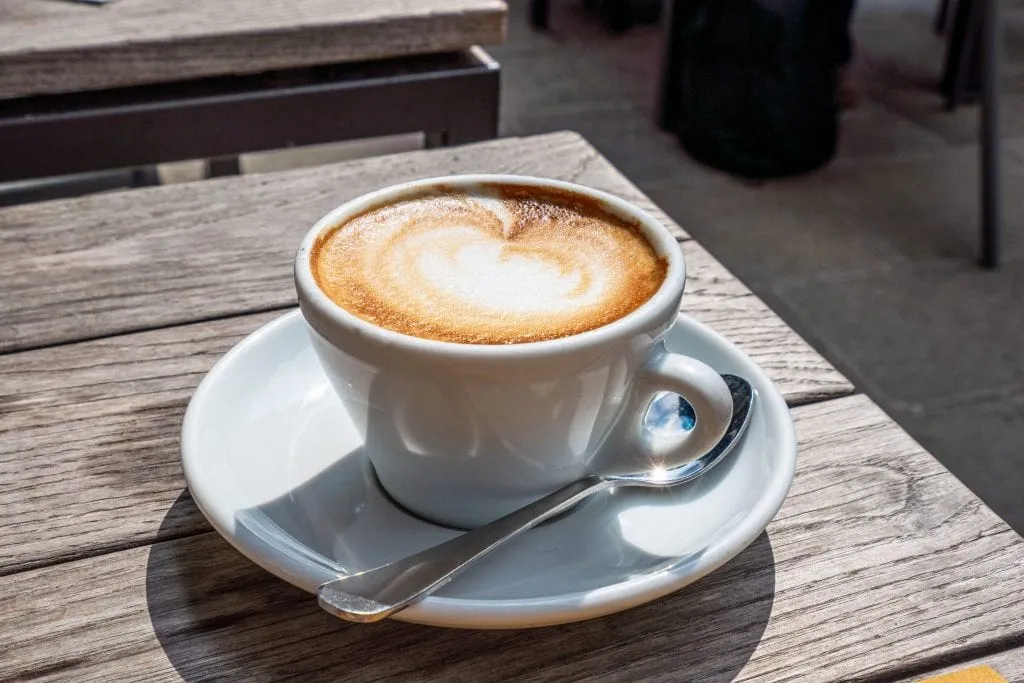
Coffee is espresso, and it’s not called espresso.
If you order un caffè (sometimes clarified to un caffè normale if they want to confirm you’re not looking for an Americano/if you know how to order coffee Italy), you’ll be given espresso.
We have a full Italian coffee culture guide here to help you parse the specifics!
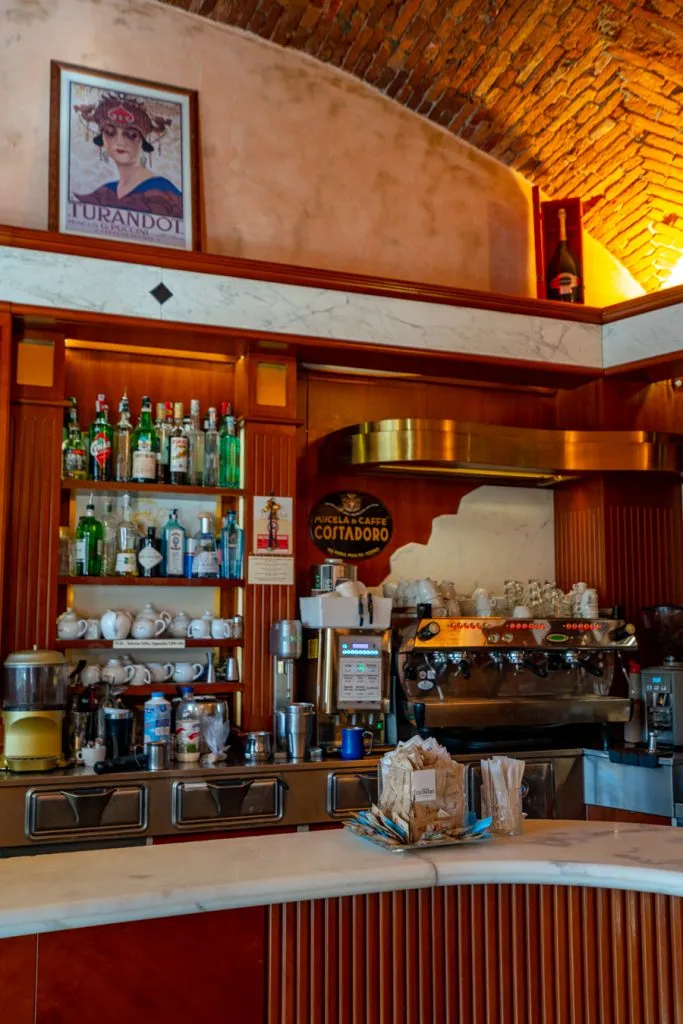
… And it is considered great for digestion.
Coffee is typically served after a meal, even dinner, and though I can’t fathom being able to handle that much caffeine at night, it’s a very common practice!
If you want to stick with the ritual but also sleep, you can request decaf, or café déca (the locals won’t, though).
If you see an omelet for sale in Italy, you’re at a tourist restaurant.
Italian breakfast consists of coffee and maybe a pastry (a cornetto cioccolato is a delightful treat, take advantage of it), consumed standing at the bar and not sitting down at a table.
Here’s our full guide to Italian breakfast culture!
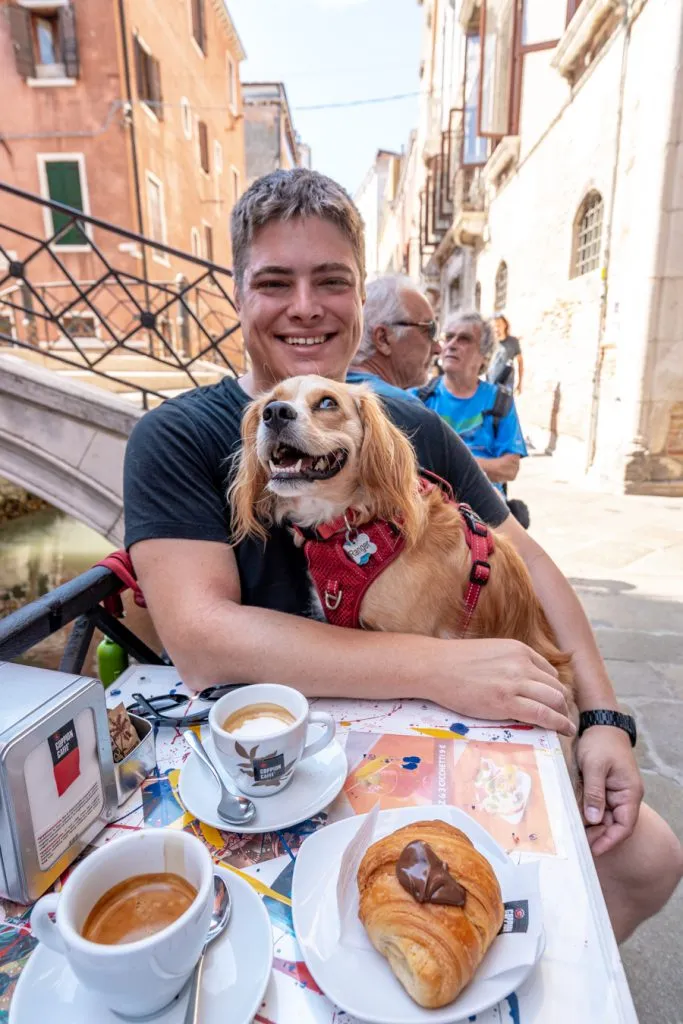
Italian sparkling wine is generally prosecco.
Prosecco, like French champagne, comes specifically from the prosecco region of Italy (it’s up north in Veneto and makes a great day trip from Venice, if you’re interested).
Prosecco is delicious, and if you like sparkling wine, you need to drink some while in Italy!
Bars are not just for the evening.
Italian bars serve alcohol, yes, but they also serve coffee and pastries.
Think of them like a coffee shop + bar hybrid! You’ll go here to get your breakfast… and then also to get your aperitivo in the evening.
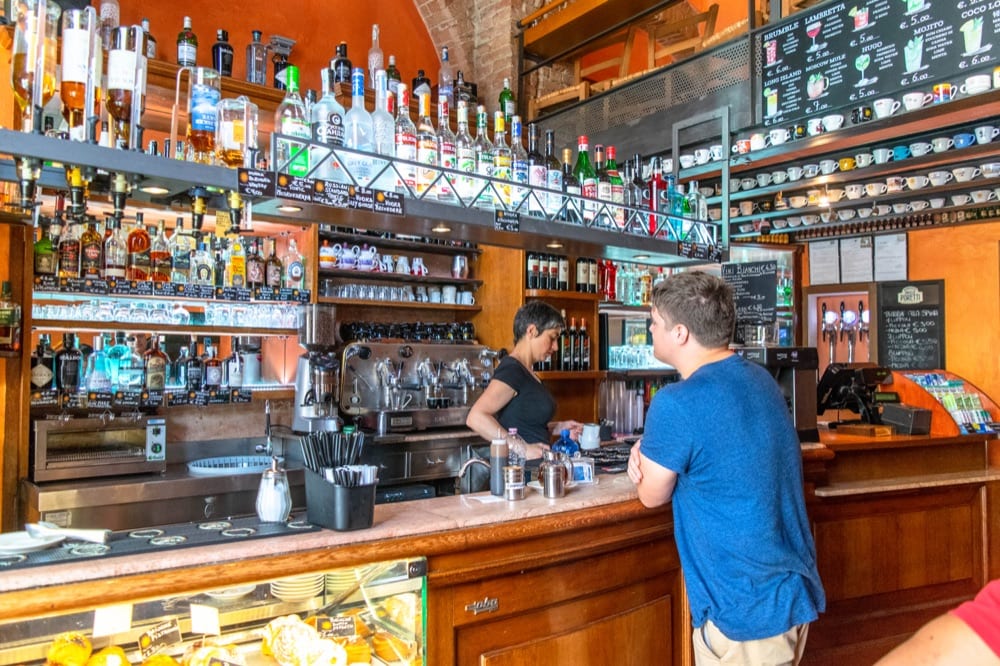
Get your stomach on Italy’s schedule.
This varies a bit by region, but it’s something to consider: the best restaurants don’t stay open all day!
Here’s a vague schedule to keep in mind:
Breakfast of coffee and pastry at the bar when you wake up (pretty flexible, the bars will stay open through the day, though the best pastries can go early-ish).
Lunch is between 12-3. Aperitivo is between 5-7.
Restaurants open for dinner at 7:30–occasionally 7. They’ll really start to fill up around 8:30-9.
We go into this and many more Italian dining habits in our guide to eating in Italy!
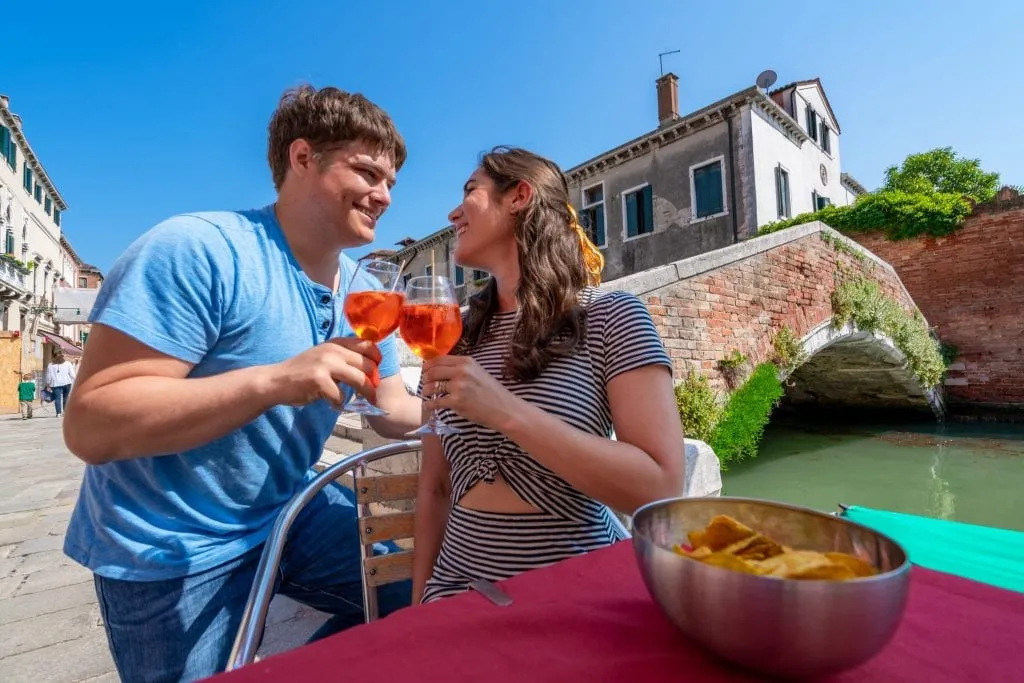
Reservations matter.
If you want to eat at a particular restaurant, especially in a major city like Rome, make reservations!
Your hotel concierge can help with this if you like, but many restaurants have an online reservation option as well.
For a casual neighborhood trattoria, making a reservation can be as simple as stopping by during lunch to reserve a table for dinner.
Specify what kind of water you want.
Acqua naturale is flat, and acqua gassata is carbonated.
They’re both generally the same price and will come in a bottle.
You can also usually request an acqua grande, or big water, which is typically one liter to share amongst the table.
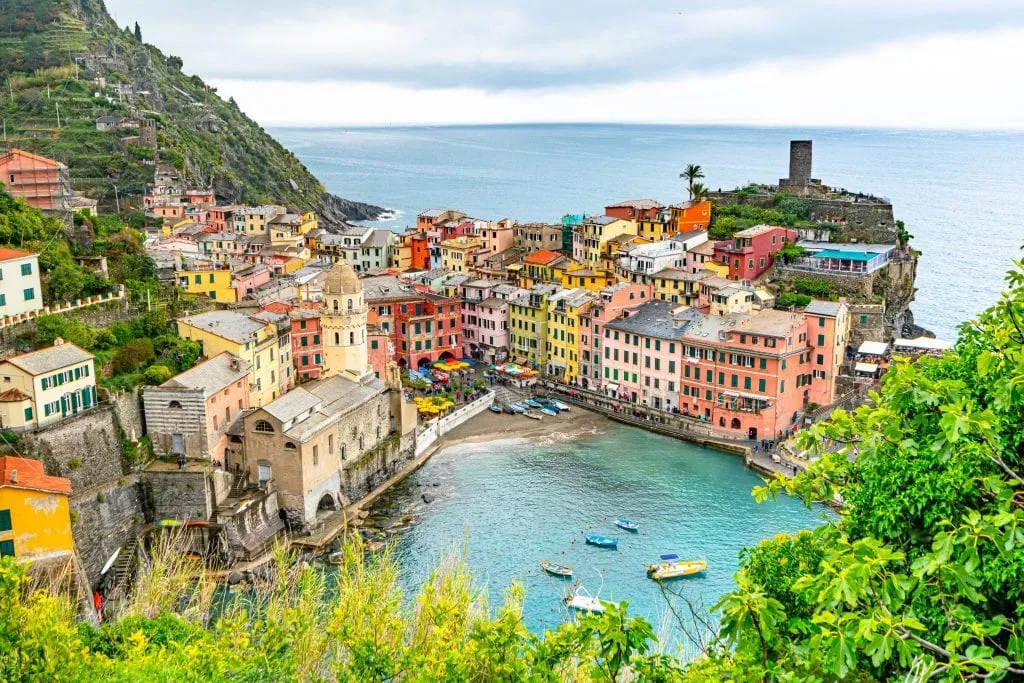
Don’t dip your bread in olive oil.
A small amount of olive oil drizzled over fresh bread? Delicious.
Dipping your bread in oil and letting it get soaked? Too heavy–according to the Italians, anyway.
My American self still loves it (but I generally save that indulgence for home).
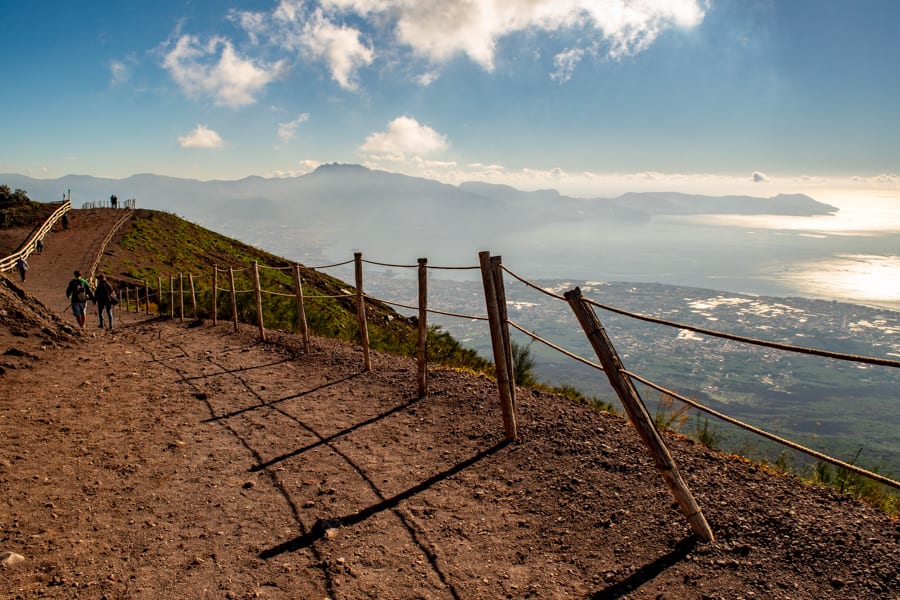
Pasta noodles are not interchangeable.
Pasta shapes don’t exist for fun–they’re designed to be served with certain kinds of sauces, and what you order matters!
Don’t special order different noodles with a dish (in fact, as a general rule, avoid special ordering in Italy unless it’s due to dietary restrictions).
If you have your choice of noodles and sauce, ask which is the best noodle for the dish you’re after.
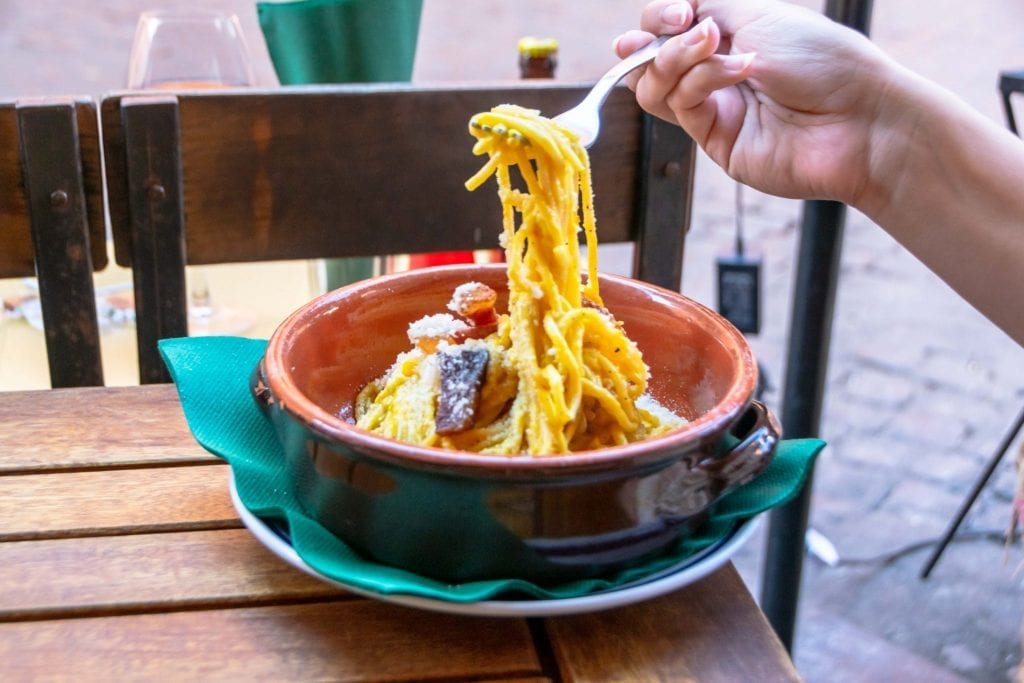
Slow service doesn’t mean bad service.
Courses aren’t rushed in Italy, and your waiter will never bring your check until you ask for it.
If you want to pay by card, ask for the card machine when you ask for the check.
Your waiter will bring the machine right to the table and run the card in front of you.
In Italy, and in Europe overall, it is considered a major faux pas to ever remove a credit card from the sight of its owner!
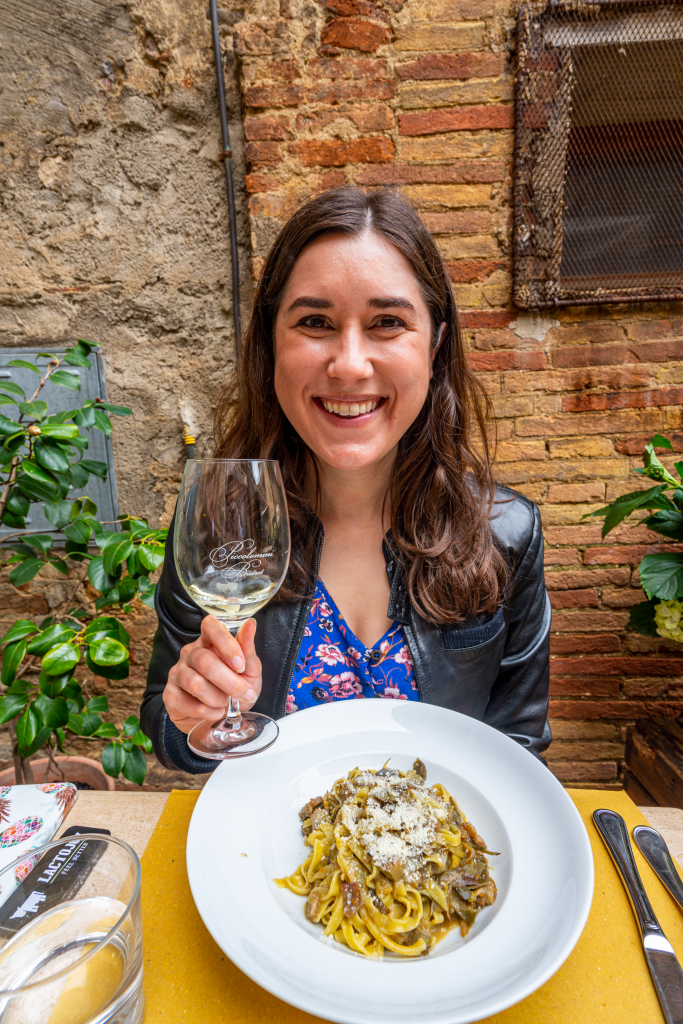
If you order pepperoni on your pizza in Italy, you’ll receive a pizza with peppers.
The closest approximation to American-style pepperoni pizza in Italy is a diavolo, which is served with cheese, salami, peppers, and sometimes olives.
We go into more specifics on typical Italian pizzas and toppings in this pizza guide!

Travel Tips for Grocery Shopping in Italy
The most common supermarket brands in Italy are Spar, Carrefour, and Conan.
You’ll find at least one of these in any given Italian city.
Size varies dramatically, though, from giant supercenters in the suburbs of major cities to tiny “express marts” that are barely more than a corner store.
Use plastic gloves when handling produce in the supermarket.
I’ve found that this one varies by region, but when in doubt, look and see what the other shoppers are doing, and choose whether or not to use gloves accordingly.

You’ll weigh your produce in the supermarket yourself.
In the USA, you’ll bag your produce and then it will be identified and scanned at the register–but in Italy, that’s your job.
When browsing, you’ll notice that each type of produce will be marked with a number.
Take the number to the nearby scale, place your bag of produce on it (one type at a time, obviously), and press the respective number.
A sticker will automatically print with a barcode, weight, and price.
This is the opposite of what happens in markets.
In markets, the vendors will select your produce, though you can sometimes point to a particular piece if you want a certain apple or orange.
Vendors do not take kindly to people, say, rooting through their pile of apples.
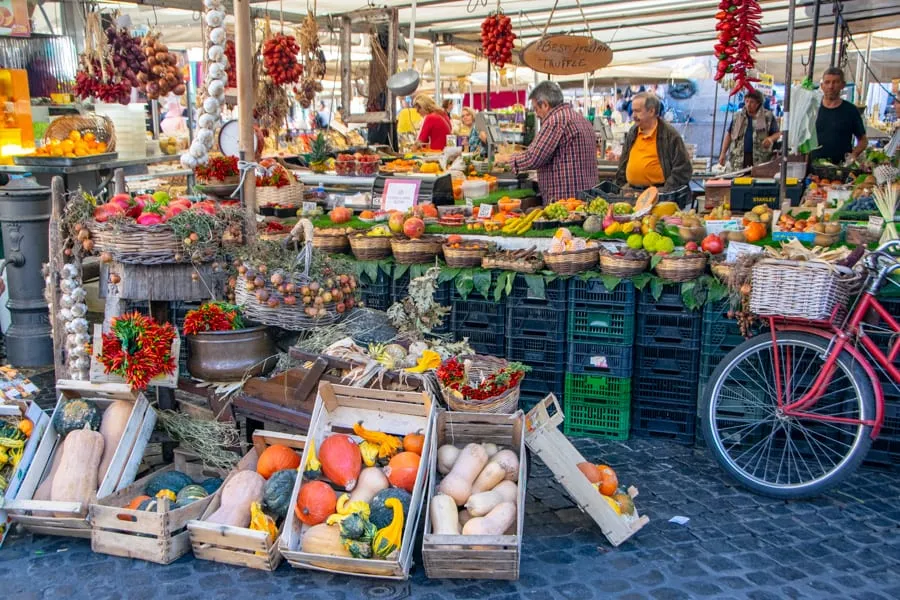
If you love Italian wine, go to the grocery store.
… And delight at finding what would be a $30 bottle in the USA for a mere 5-10 Euros!
Consider buying produce at the market.
You’ll often find better quality produce for less money than the supermarket, especially in smaller towns.
Major supermarkets often stock fine produce, but the smaller stores, not so much.
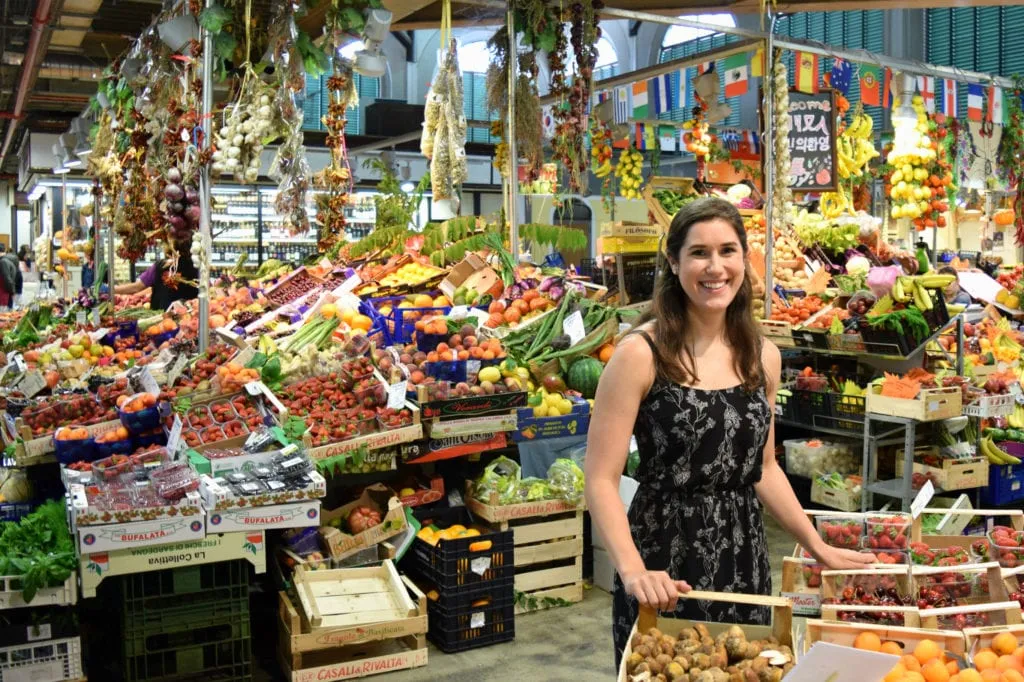
Don’t expect free plastic bags to carry your groceries in.
Plastic bags come with a small charge in Italy.
They’re available at the register in the supermarket, and you’ll either place however many you need on the conveyor belt yourself, or, if they’re stored under the register, the cashier will ask you how many you want (if any).
Of course, the best thing to do is to bypass this problem entirely and bring a reusable bag!
We love our tote bag and have been using it to buy groceries in Italy (and for a myriad of other things) for years.
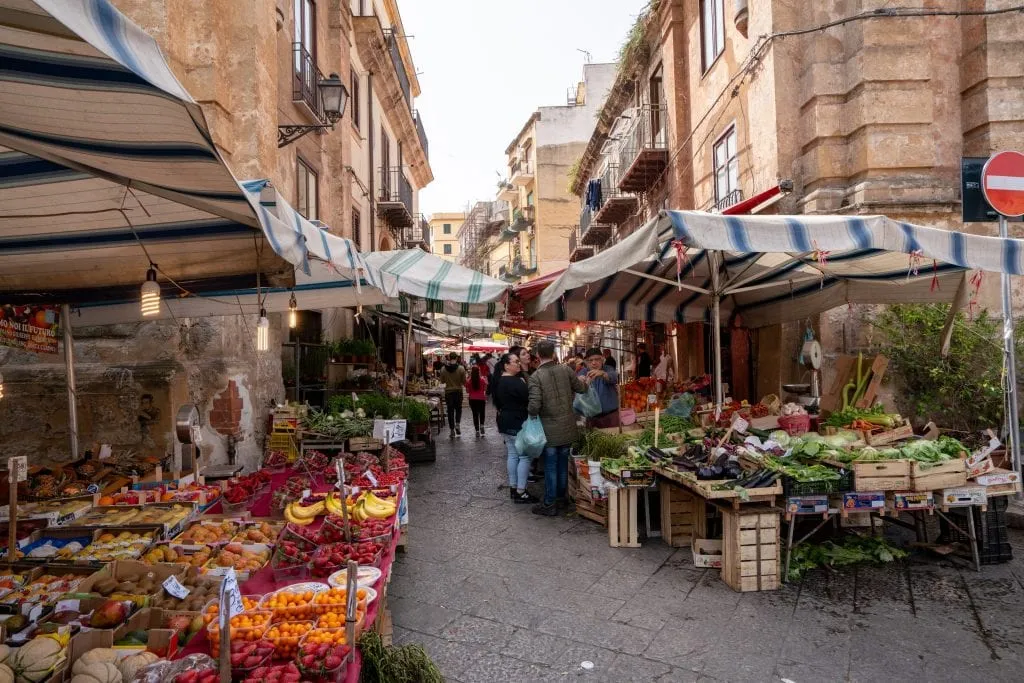
Tips for Transportation and Getting Around Italy
Tips for Driving in Italy
Your normal car insurance company may not cover car rentals in Italy.
Be sure to double-check before renting a car!
It’s important to make sure that they cover Italy specifically, not just some places in Europe.
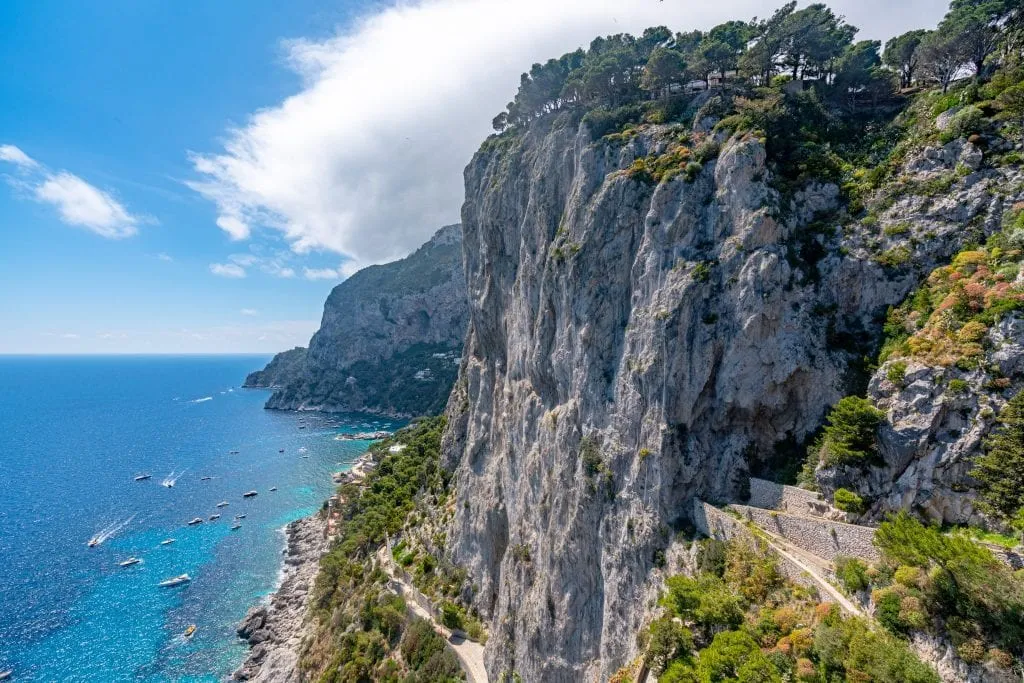
You may not know if you get a ticket while driving.
Tickets are often given out by mail based on violations caught on camera, so you may come home to an unexpected bill!
It’s forbidden to drive into most historic centers.
These are called “ZTL zones” and it is imperative that you avoid them when driving except under very limited circumstances (like having permission to park your rental car at a specific hotel).
… If you accidentally violate that rule because you’re lost, you may come home to one of the tickets mentioned above.
Ask us how we know…
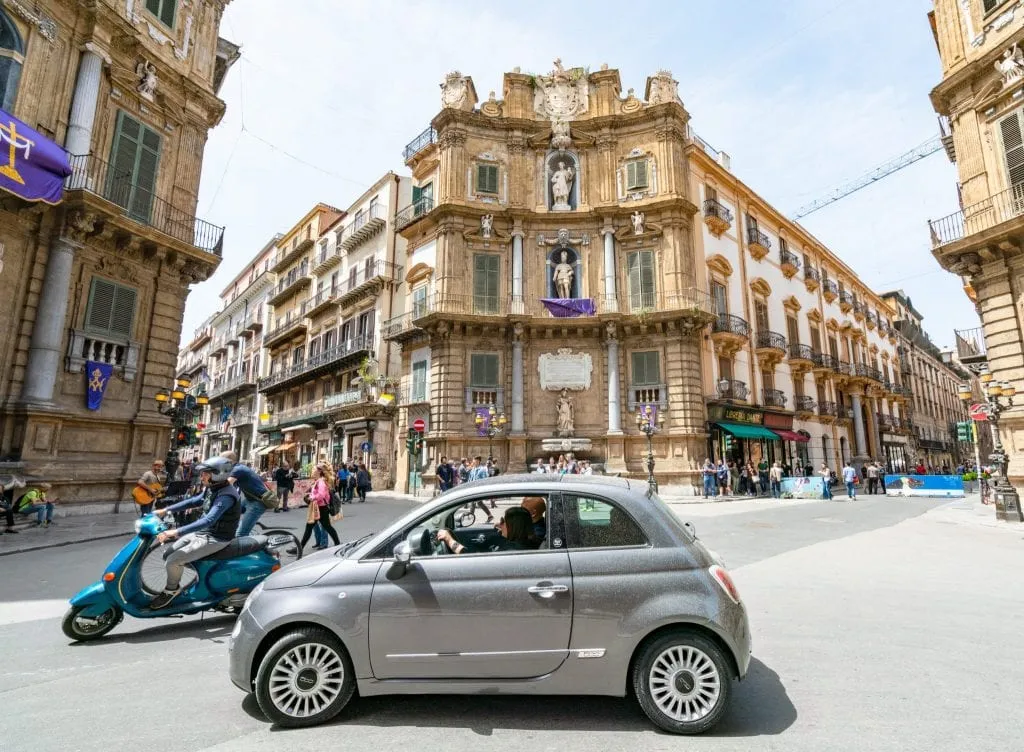
You need an International Driving Permit to rent a car in Italy.
The rental company may or may not ask you for it, but the last thing you want is to be pulled over by a police officer and not have one.
International Driving Permits translate your license into local languages, and the official ones (the only ones that count) must be arranged for before your trip.
We usually obtain ours through AAA.
International Driver’s Licenses, offered for a fee by various online services, are not the same thing and don’t fulfill the requirement.
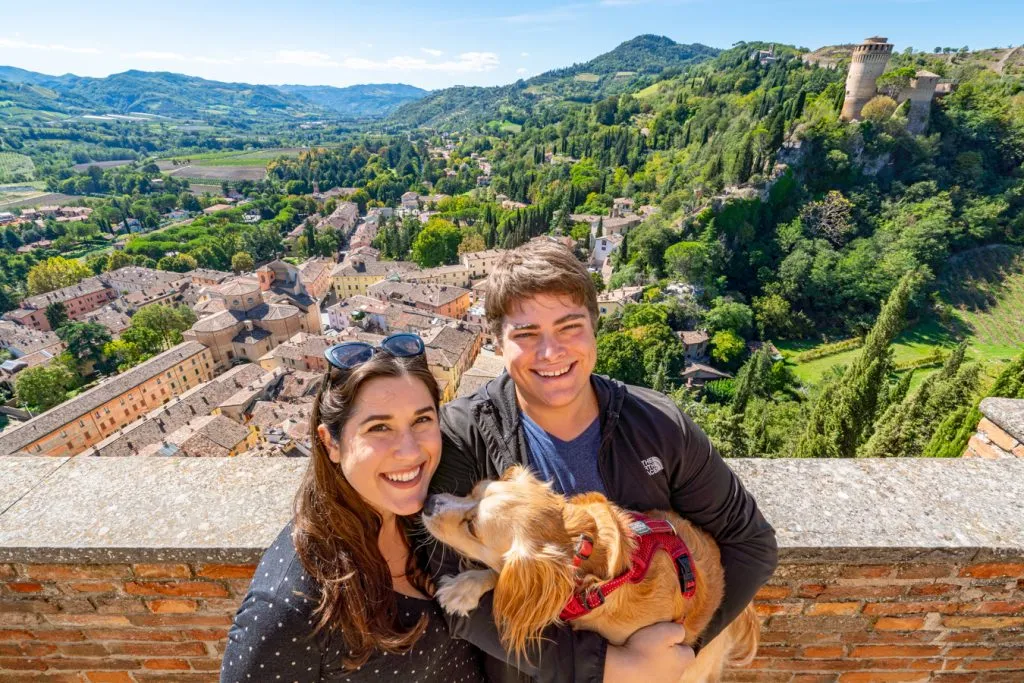
Rent the tiniest car that you can fit your belongings into.
Italian roads, parking spaces, and vehicles are all much smaller than their North American counterparts.
It’s a simple but essential piece of advice for traveling in Italy that life will be much easier if you’re driving a small car!
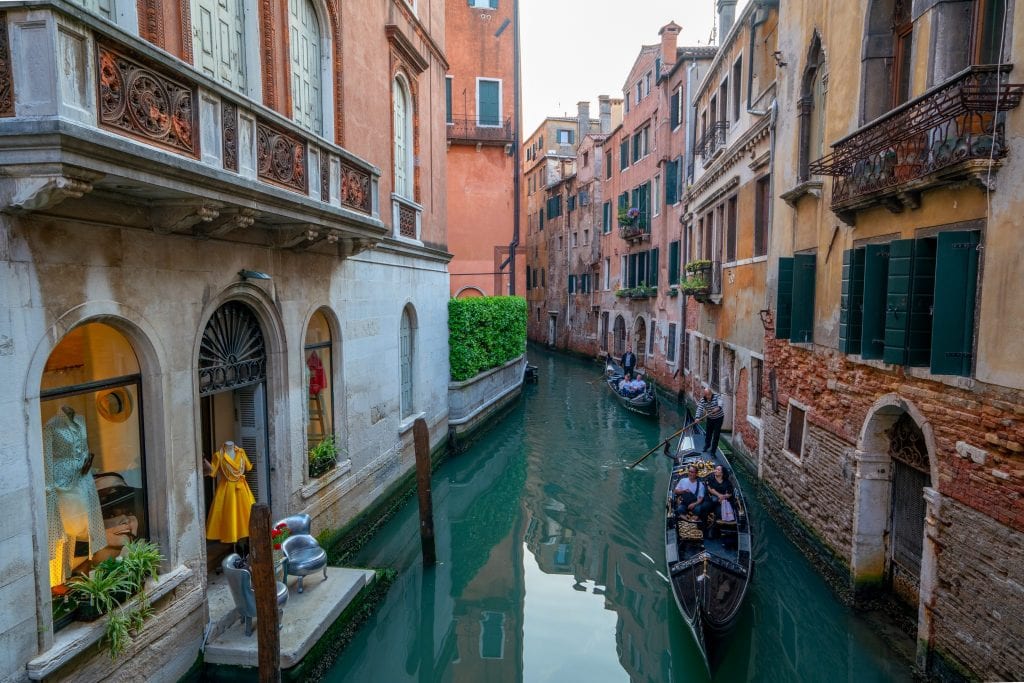
Knowing how to drive a manual will make life simpler.
Most car rental companies keep a few automatics on hand for international visitors, but manual cars are standard in Italy (and all over Europe).
You’ll pay much less–and have much more vehicle choice–if you can drive a manual.
Pay attention to the color of your parking space.
Generally speaking, white parking spots are free to use, blue spots are paid (look for the nearby meter), and yellow spaces are to be avoided.
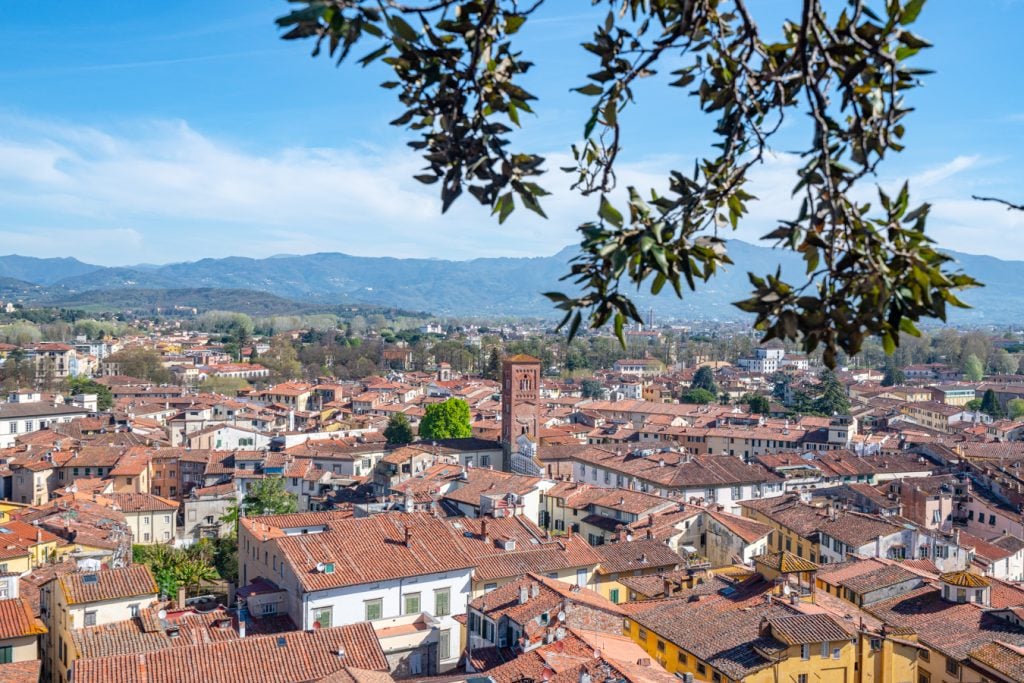
Train Travel Tips for Italy
Trenitalia is the most prevalent train company in Italy.
This is Italy’s national train company.
They have the most routes, and in our experience, typically the best prices.
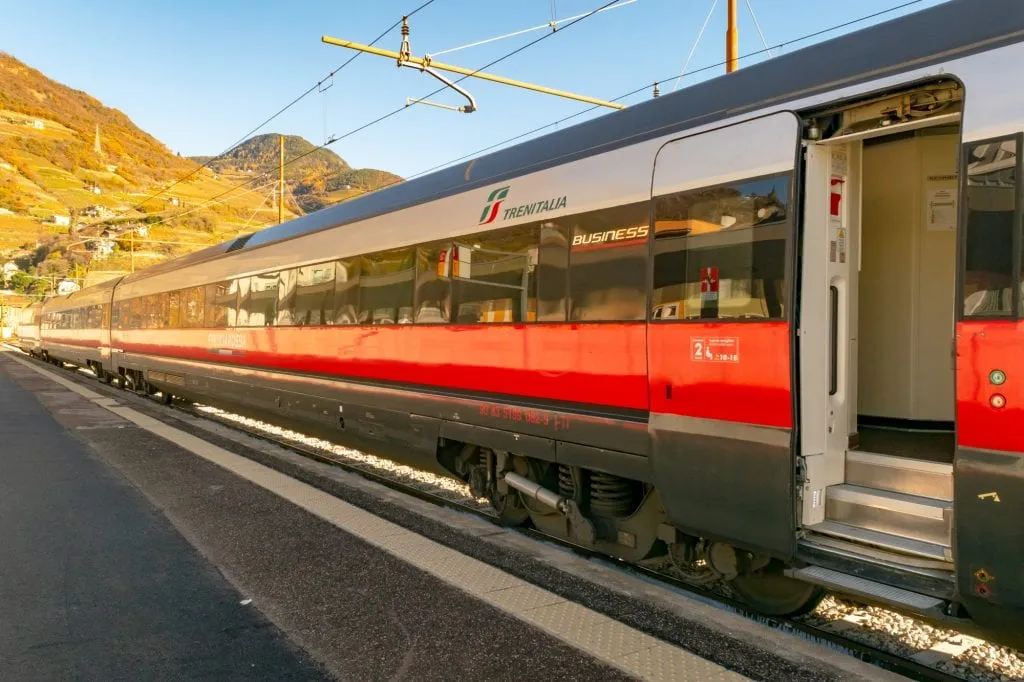
You’ll also see Italo trains and (rarely) Trenord trains in Italy.
Italo is a private company that operates some routes in the country, especially high-speed ones.
Trenord is similar, but much more limited in scope.
You can expect to find these trains in Lombardy, such as around Milan and Lake Como.
Omio is a great place to plan train travel in Italy.
Omio is a transportation aggregate that simplifies planning transportation routes in Italy (and beyond).
You can check prices and compare rates, schedules, and more on Omio to ensure you’re getting the best deal on train (or bus) travel in Italy.
We use Omio regularly throughout Europe and have always had good experiences with it.
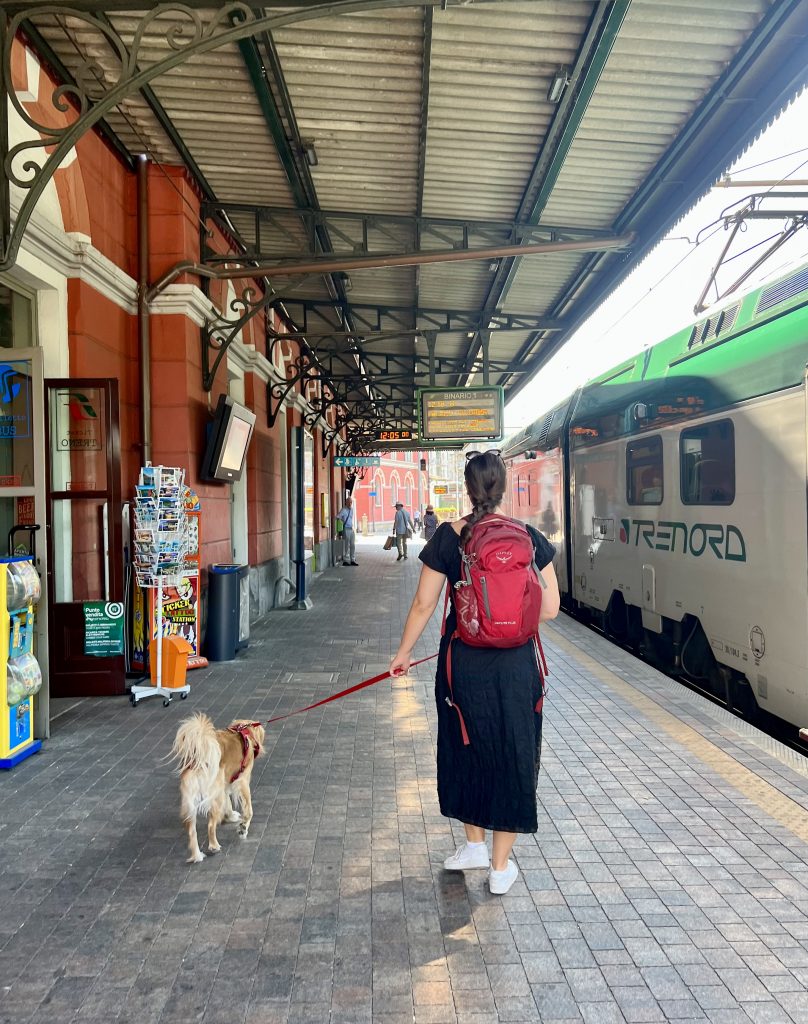
You must validate your train ticket!
… If you have a paper ticket, that is.
Instead, consider downloading the Trenitalia and/or Omio app.
This will allow you to purchase train tickets on your phone, and the conductor will then be able to easily scan your ticket from there–no validation required.
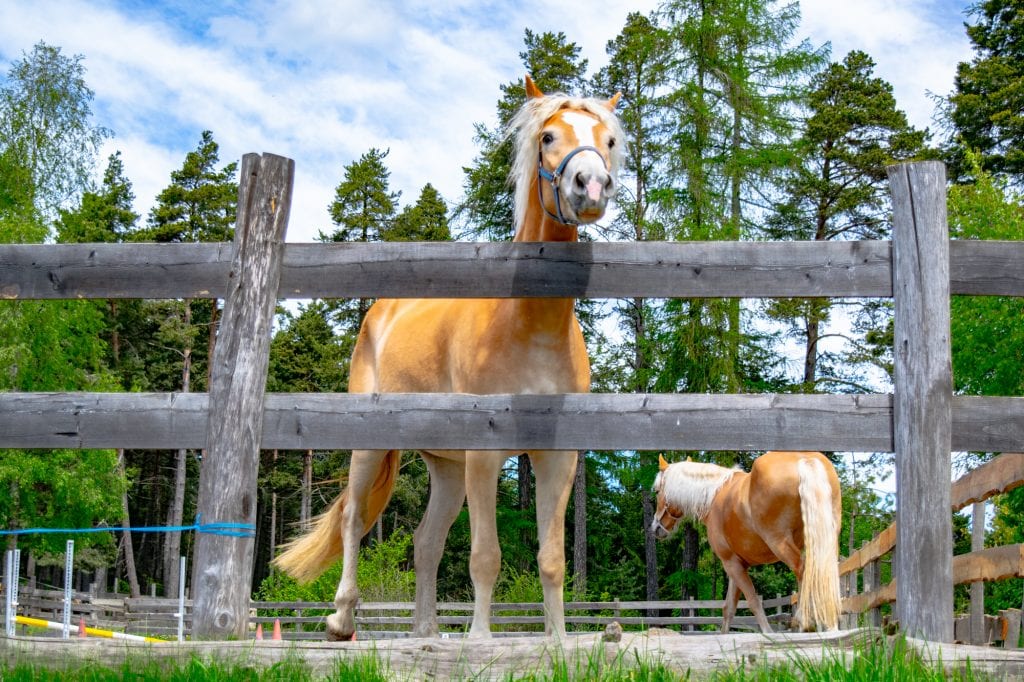
However, you’ll need to download or screenshot your tickets immediately after purchase.
Without an Italian tax ID number, you’ll need to use the Trenitalia app as a guest, and therefore your tickets won’t be saved within the app itself.
This sounds more intimidating than it is, but it’s something to be aware of.
You can buy regional train tickets whenever you want.
These are the “slow” trains, and their prices are set by the government.
For example, if you want to travel from Florence to Bologna on the slow/regional train, you can simply show up and buy your ticket that day, and no advance planning is required.
If you wanted to take the high-speed train though (for this route, roughly 30 minutes of travel versus an hour), booking in advance would yield the best price.
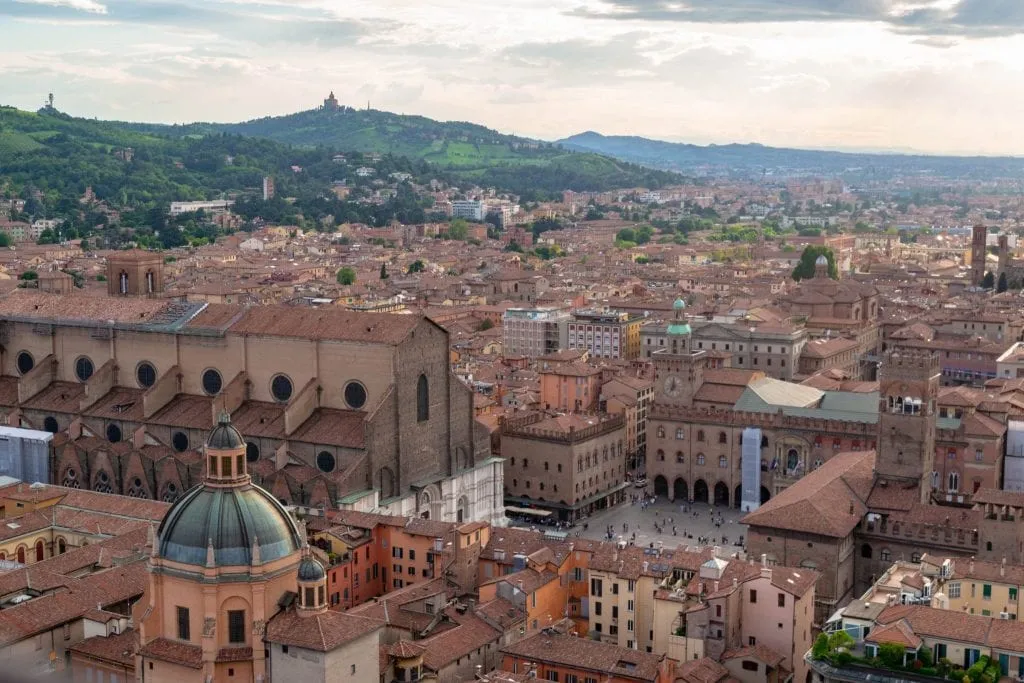
However, high-speed rail tickets must be purchased ASAP.
These tickets escalate in price as the date of travel gets closer.
So, for example, if you want to travel from Florence to Venice, it helps to plan ahead!
Fast trains are called AV (or Alta Velocità) trains.
You’ll most commonly see them marketed as Frecciarosa, Frecciabianca, or Frecciargento, depending on what region you are in.
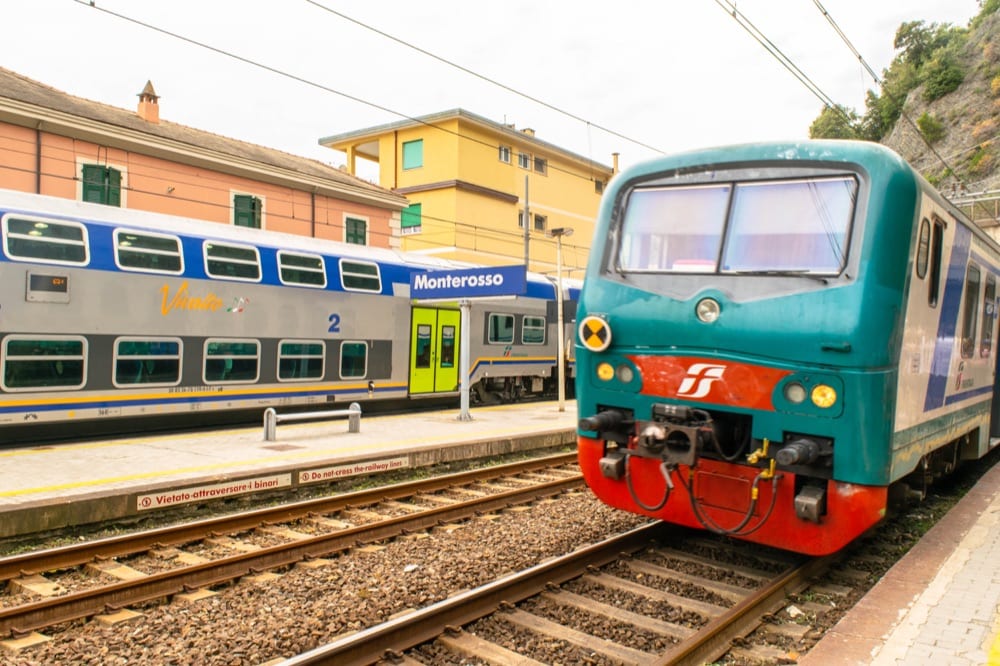
Bus Travel Tips for Italy
Tabacchi are your friends.
An Italian tabaccheria (aka tobacco shop) sells cigarettes, but also bus tickets.
… And lotto tickets, and sometimes SIM cards, and usually snacks. Think of them like gas stations in the USA, but you know, without selling gas.
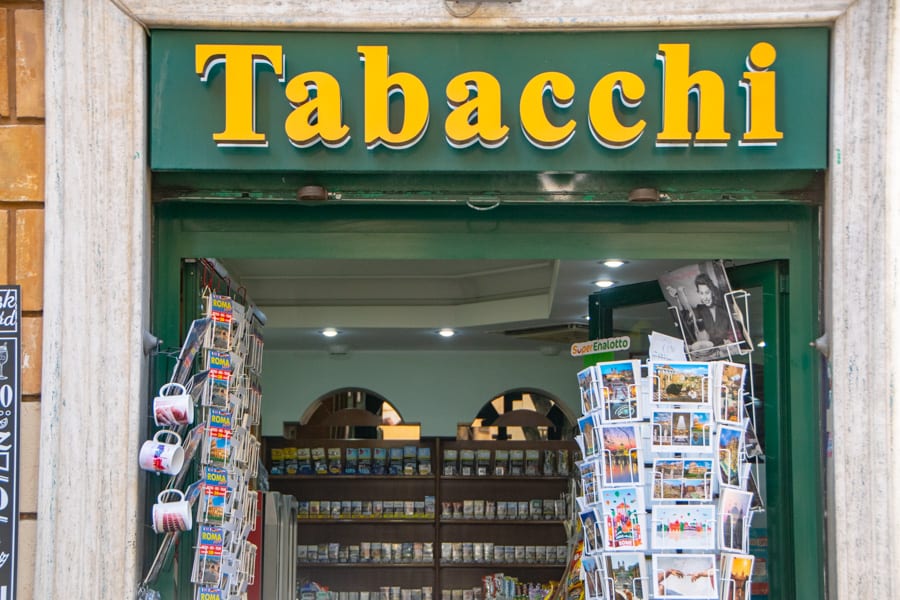
… This is important because not all Italian buses sell bus tickets.
Looking at you, Rome.
Before boarding a bus in Italy, it’s best to always have a ticket in hand–and don’t forget to validate it once you board!
Make sure you have enough bus tickets for Sunday.
Since many tabacchi and other small shops are closed on Sundays, you might not be able to buy more.
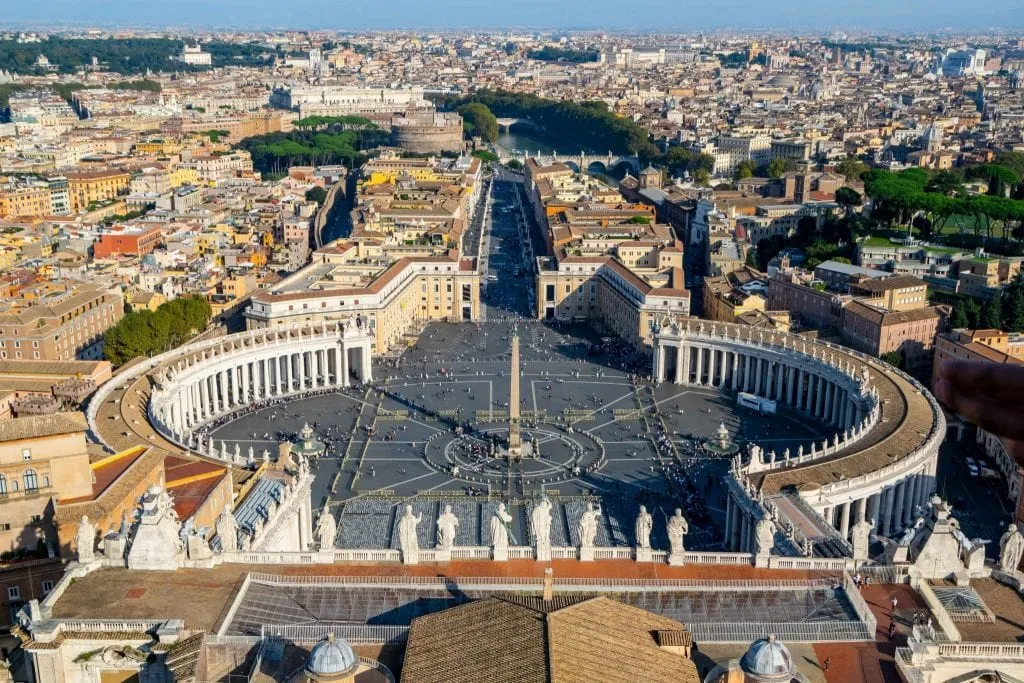
For inter-city travel, check Flixbus.
The low-cost budget carrier has quite a few routes in Italy, and if you’re trying to visit Italy on a budget, it might be the cheapest way for you to get around.
Flixbus tickets are also available through Omio.
Tips and Advice for Flying in Italy
Double-check your airports.
Many budget airlines fly to airports just outside of major cities, so be sure you’re headed to the right place before packing your bags!
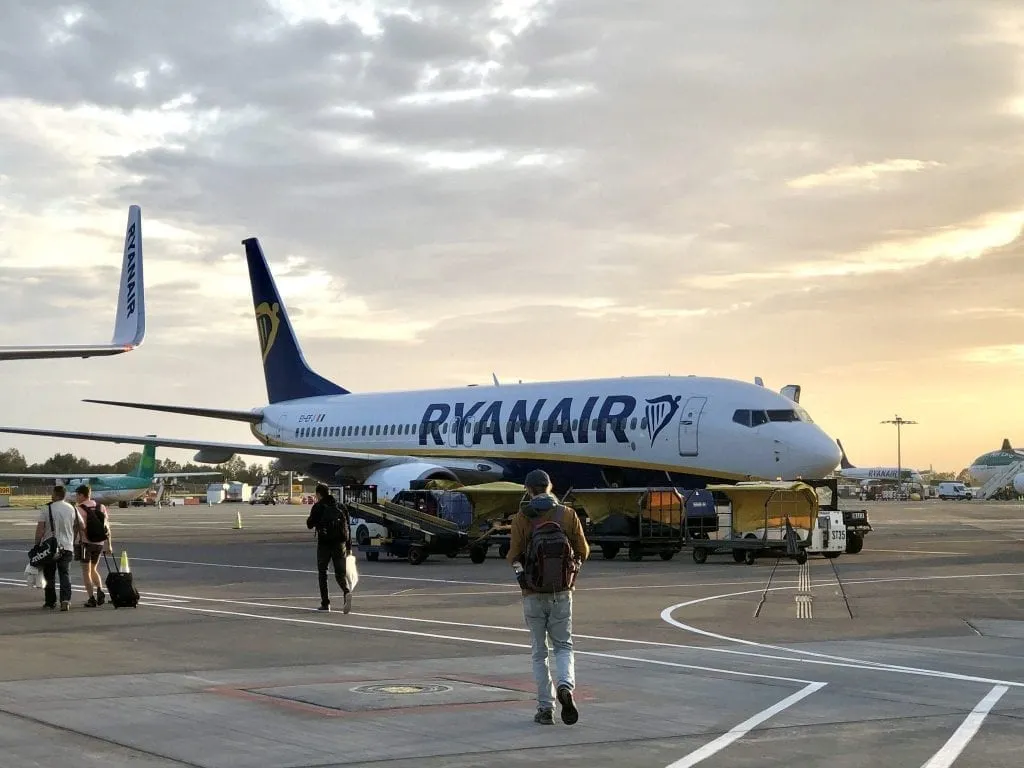
… And also your prices.
It’s not great for the globe, but from an economic standpoint, it can often be less expensive to fly domestically in Italy than take the (fast) train.
If you’re on a budget, check both (plus buses) before booking anything.
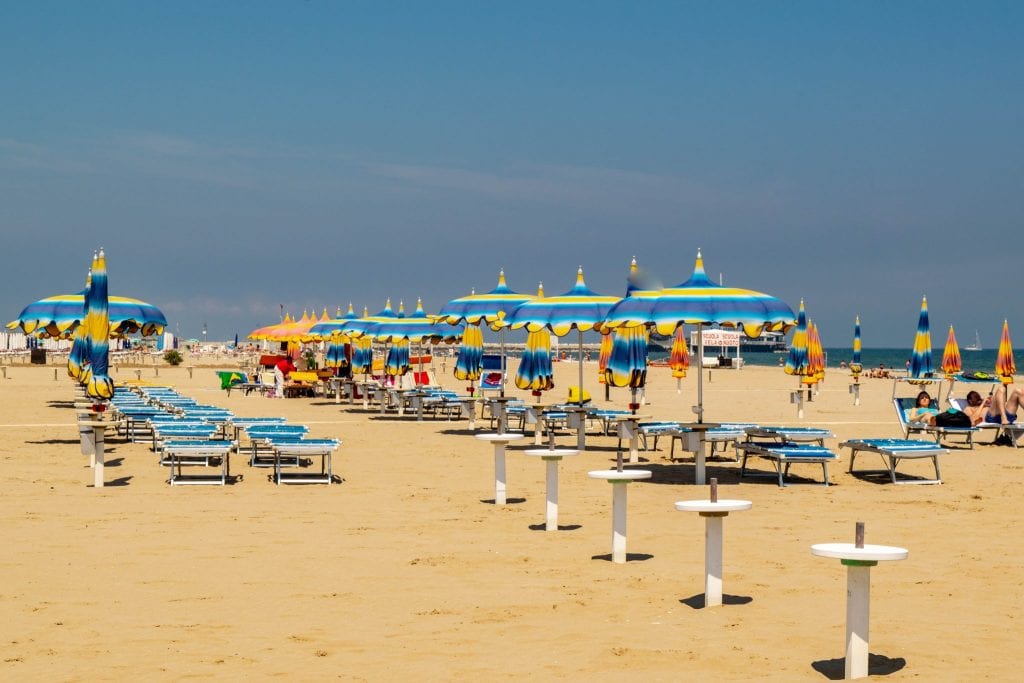
Don’t bother showing up at the airport more than 2 hours before your flight.
If you have to check bags, the counter won’t take them, and you’ll be stuck outside security until the 2-hour mark.
This actually goes for most of Europe, not just Italy, but it’s a huge change as compared to flying in the USA!
Other Tips for Getting Around Italy
Train and bus strikes are common in Italy.
Be sure to leave yourself plenty of extra time to get around on important days (like when catching a flight).
Luckily, Italians schedule their strikes in advance, so if you’re worried about a particular date, ask around to see if anything is coming up.
This isn’t an everyday thing–I think we’ve run into it about 3 times in all of our time spent in Italy–but it’s far from unheard of.
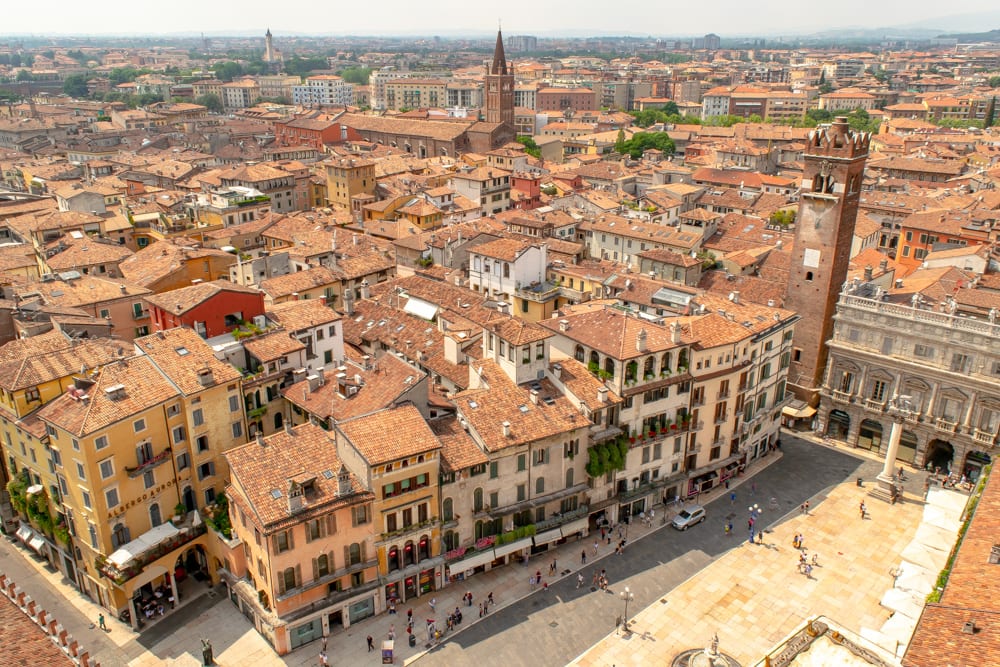
Taxis are notorious for ripping people off.
Not just an Italy problem, of course, but you definitely need to be aware of it.
The FreeNow app–sort of a local Uber that connects to local taxis, if you will, can help with this, and you can then use a credit card to pay through the app.
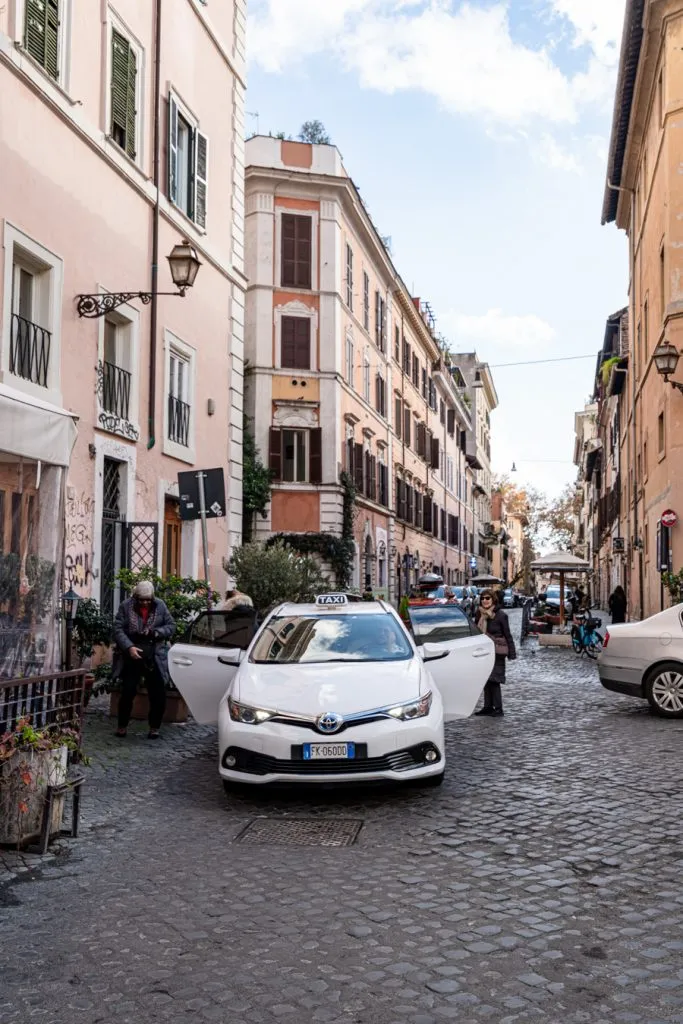
Have a transportation plan before leaving the airport.
Train, bus, taxi?
Know exactly how you’ll be getting from the airport to the hotel before you arrive, and your day will be much easier for it.
If you’ll be taking a taxi, look up and see if there’s a flat/set fare to get to the city center from the airport–there usually is, and it’s government regulated.
However, that won’t always stop drivers from telling you that your hotel isn’t in the center (it probably is).
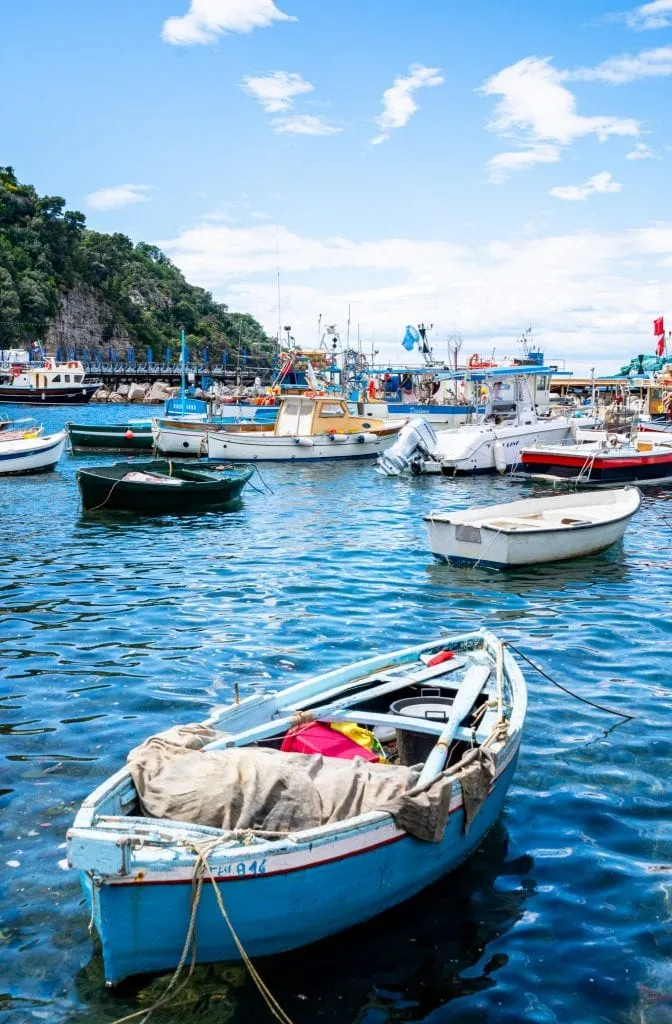
Bags may cost you.
Everyone knows that you have to pay for luggage on airplanes, but in Italy, luggage can also cost you on the bus or in a taxi.
This is another thing to confirm with your taxi driver before getting into their vehicle!
Uber only exists in a very limited form in Italy.
Currently, the only form of Uber that exists in Italy is Uber Black, and it only has a presence in Rome and Milan.
Uber has been engaged in back-and-forth legal battles in Italy for years, but as a general rule, don’t count on using Uber in Italy.
FreeNow is a great alternative and is what we use in Italy (and in many places throughout Europe).
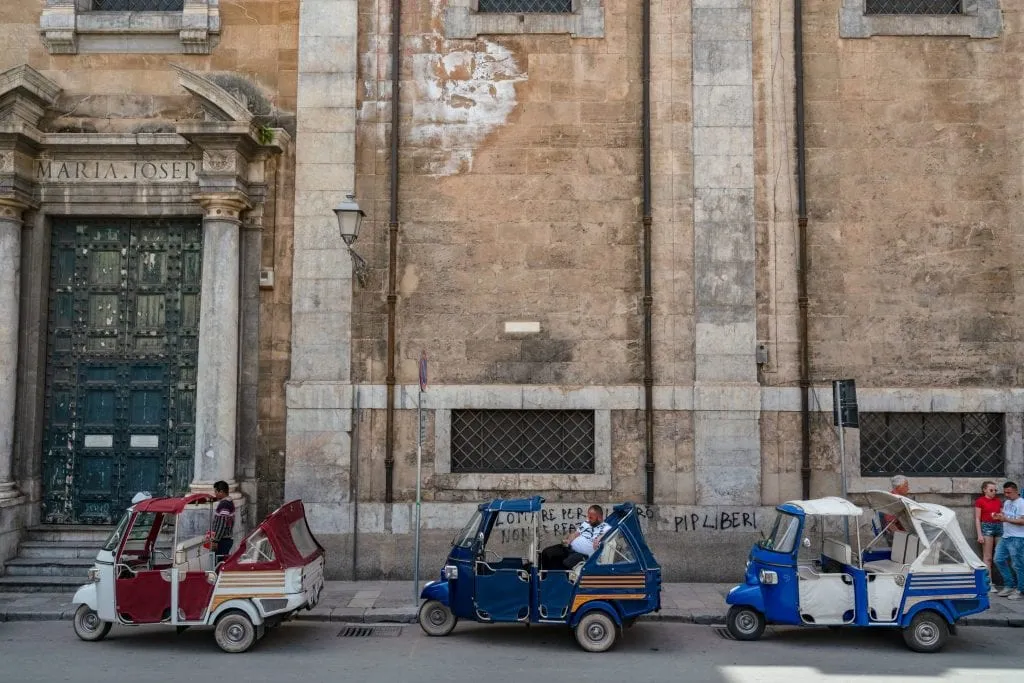
Tips for Paying for Things in Italy
Card payments are increasingly prevalent in Italy.
You’ll be able to use your credit card regularly to purchase meals, groceries, train tickets, etc.
However, don’t use a card for small purchases.
For small items like gelato or coffee (both very important parts of any trip to Italy), it’s best to have cash on hand.
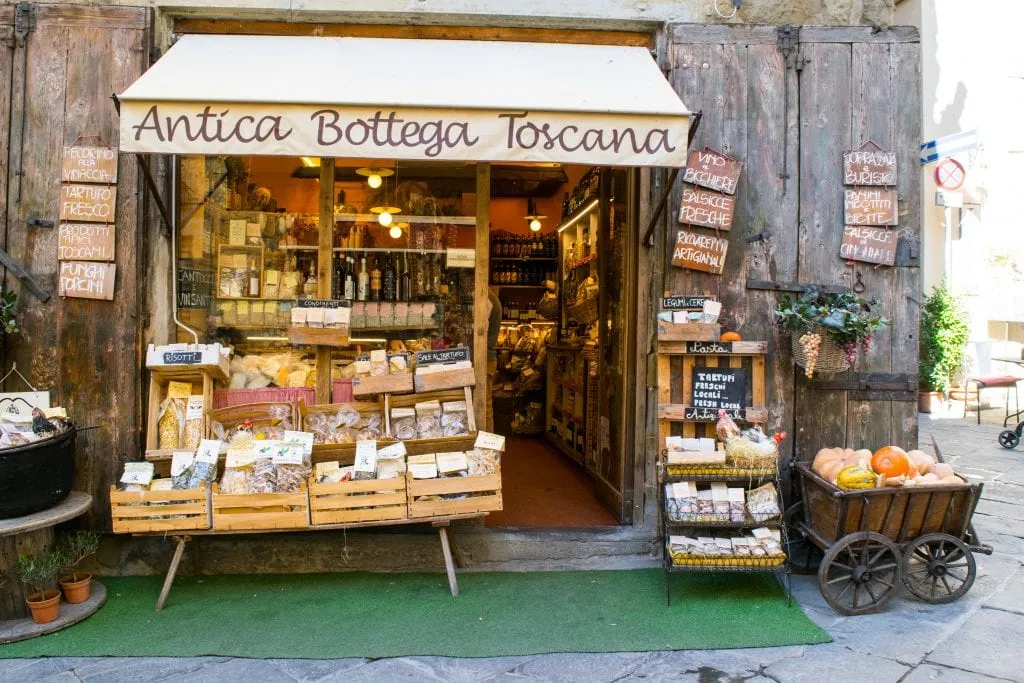
In fact, always have Euros on hand.
You never know when you’ll accidentally walk into a cash-only restaurant.
Bring a Visa or Mastercard to Italy.
Discover, Diners Club, and American Express are not as commonly accepted.
… And ideally one with no foreign transaction fees.
Credit cards with no foreign transaction fees are so common these days that it’s a shame to use anything else when visiting Italy!
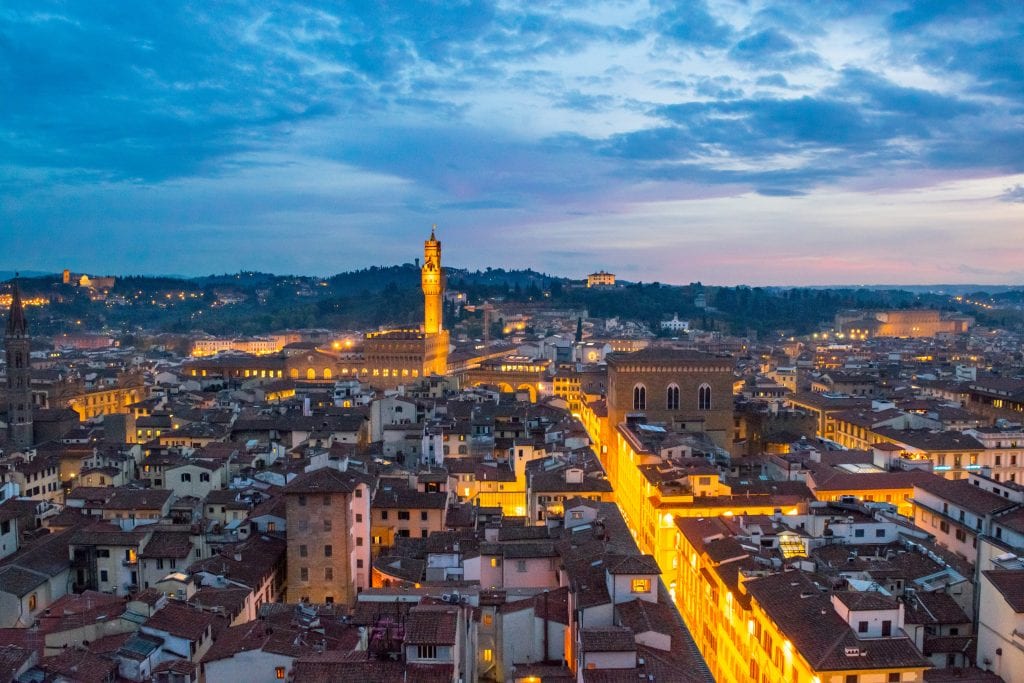
ATMs are the best way to get Euros in Italy.
If you’re from the USA like us, we love having our checking account with Schwab for this reason!
They refund all ATM fees worldwide, making getting cash from ATMs in Italy a breeze.
Even if you do have to pay an ATM fee, though, the ATM (or bancomat in Italian) is still the simplest way to get cash in Italy.
Avoid Euronet-branded ATMs.
Euronet ATMs are all over Europe, generally in very convenient places, and their exchange rates and fees are absolutely abysmal.
Instead, look for ATMs at the branches of local banks.
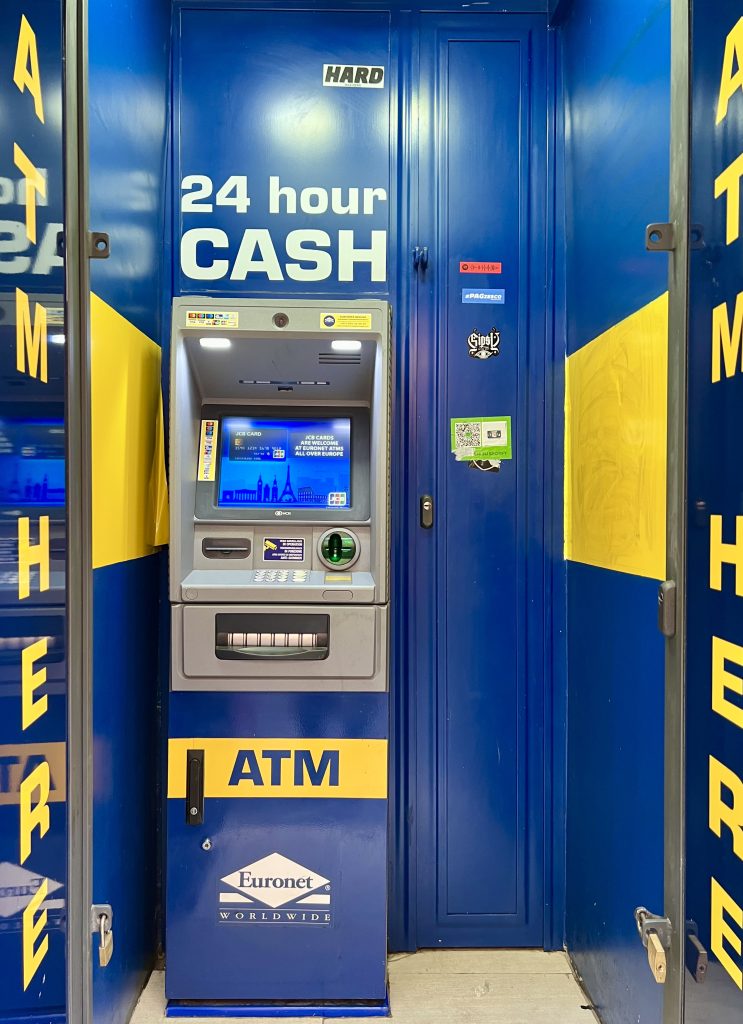
Logistical Travel Tips for Italy
Strongly consider purchasing a SIM card in Italy.
They are very inexpensive, can be put into any modern unlocked phone, and having data will make your trip to Italy infinitely easier.
We usually use TIM, but Vodafone is also popular.
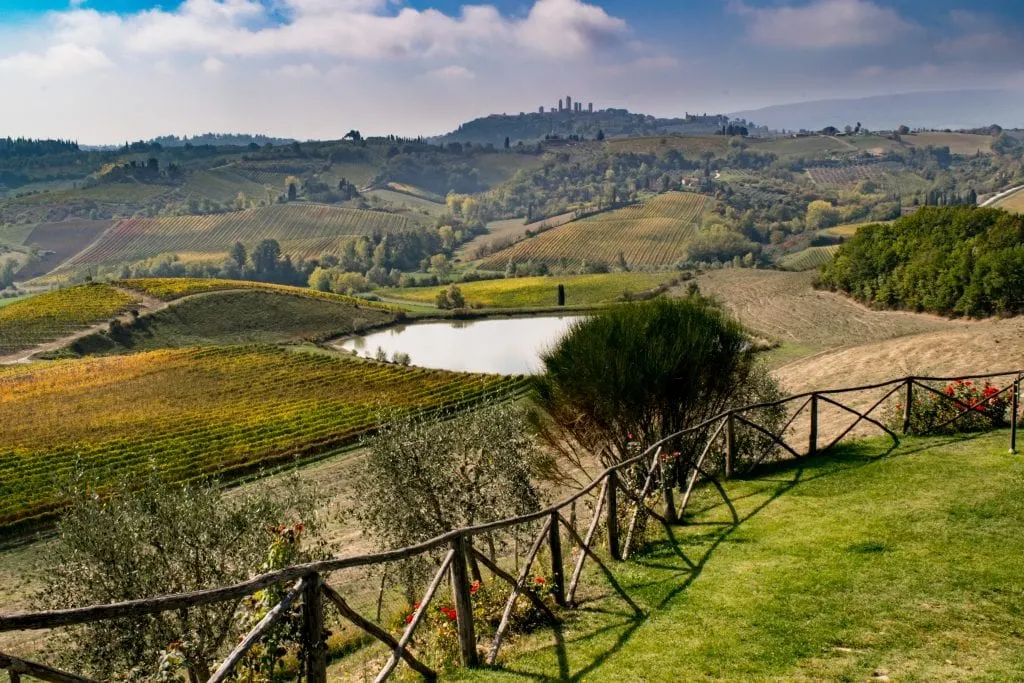
Bathrooms aren’t always free.
Half a Euro for a restroom is a good price. One Euro is acceptable. More than that, find somewhere else.
If you have a tiny bladder like me, planning ahead for restroom use is one of the most important travel tips for Italy (or at least it’ll feel that way when you’re wandering around Rome and can’t find a public bathroom).
Make a habit of visiting the restroom in any places you visit that have one included–this includes restaurants, bars/coffee shops, and museums.
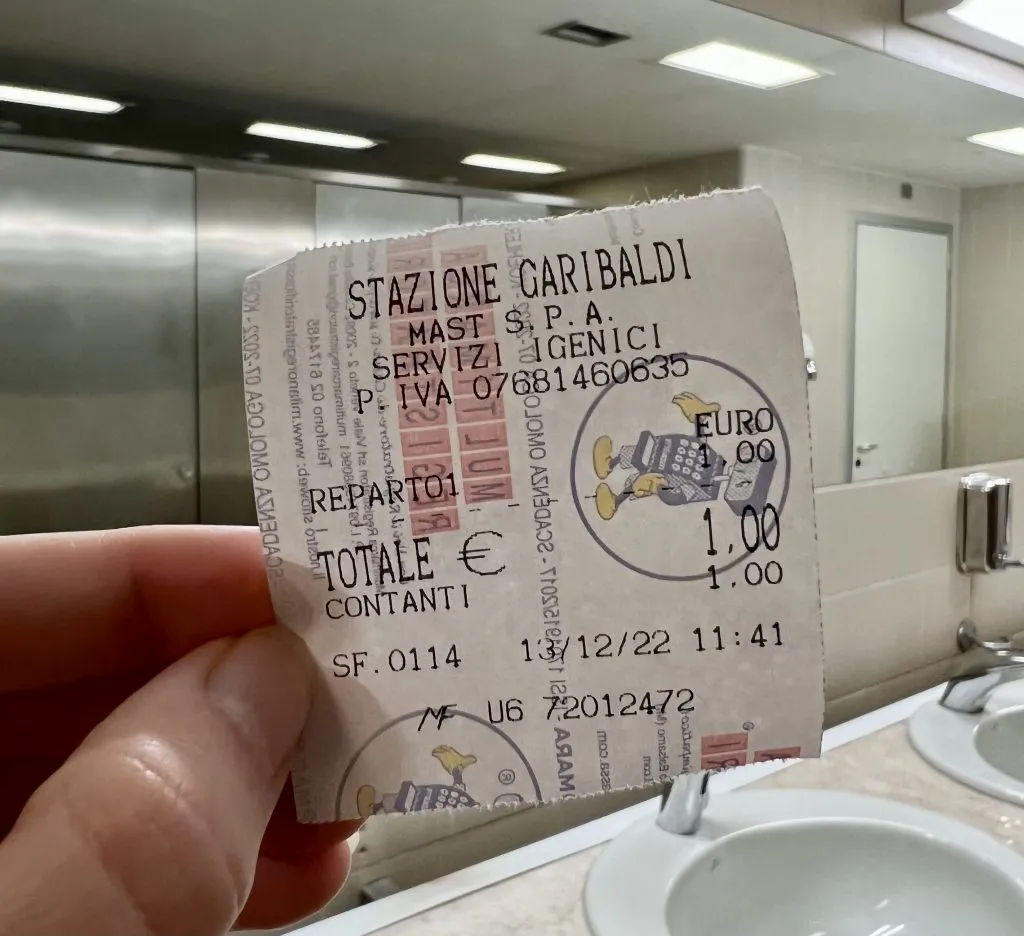
Squat toilets exist in Italy.
They’re not incredibly common, but the first squat toilet I ever saw in my life was in a Tuscan train station!
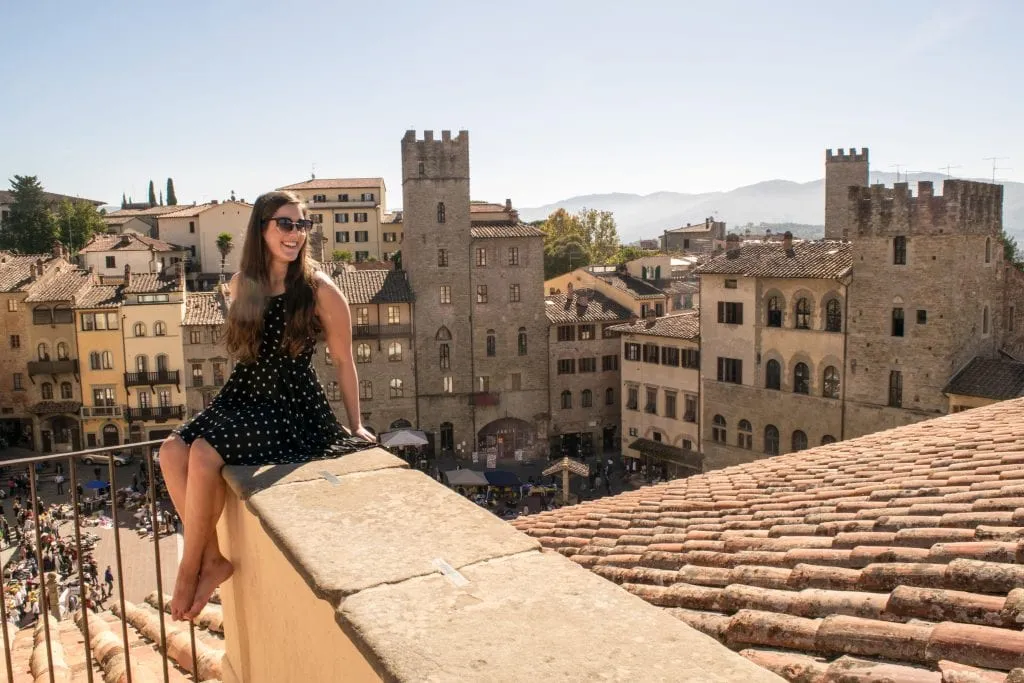
Carry a small pack of tissues, just in case.
Finding a restroom in Italy that is out of toilet paper is far from uncommon.
I usually carry a pack of these around in our day bag, as well as a small bottle of hand sanitizer.
Be prepared for the Italian riposo.
This is Italy’s answer to the Spanish siesta, and you’ll find some shops closed in the mid-afternoon for this reason.
You won’t notice it as often in major cities in northern and central Italy, but in smaller towns and in southern Italy, it’s very apparent.
The exception is restaurants–you’ll see a riposo at restaurants just about everywhere.
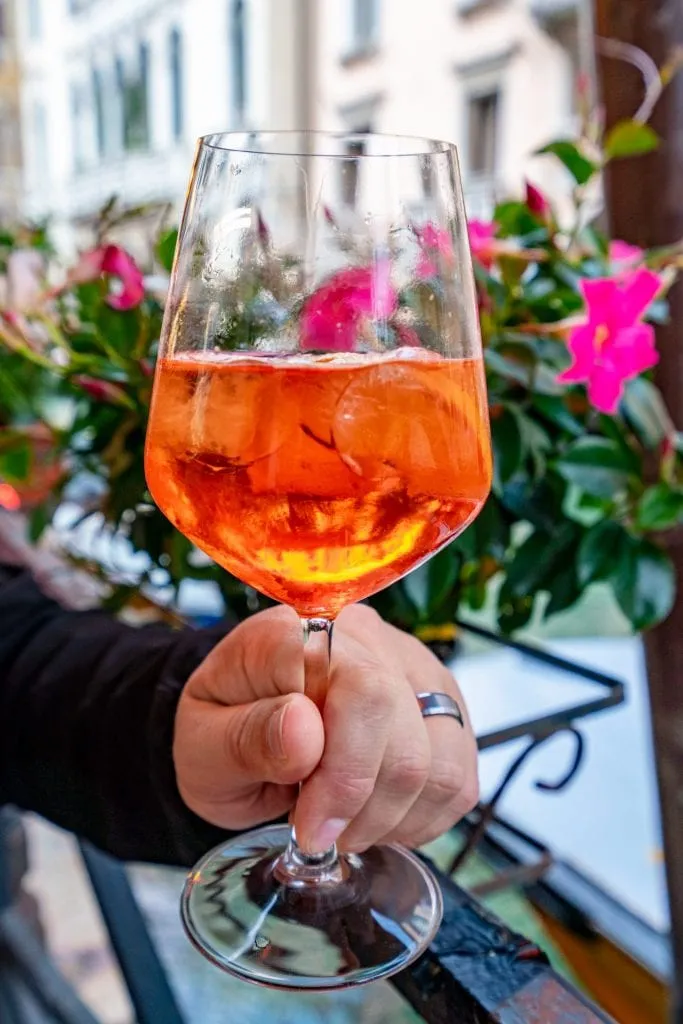
Seek out lesser-known piazzas in Italy.
Every city in Italy has its famous, central piazzas, from Piazza Navona in Rome to Piazza San Marco in Venice and beyond.
These places are beautiful and historic, of course, but they are also–inevitably–the most expensive place to enjoy a coffee or aperitivo in the city.
However, each city in Italy also has many piazzas to choose from (here are 15 of the best piazzas in Rome, and that’s just a small sample of what the city has to offer).
By heading to a smaller, lesser-known piazza, you’ll pay far less, be in a much more laid-back (and often local) environment, and get to indulge in just as much people-watching.
We love Campo Santa Barbara in Venice’s Dorsoduro neighborhood, for example–but there’s no limit to the number of charming piazzas you can find in Italy!
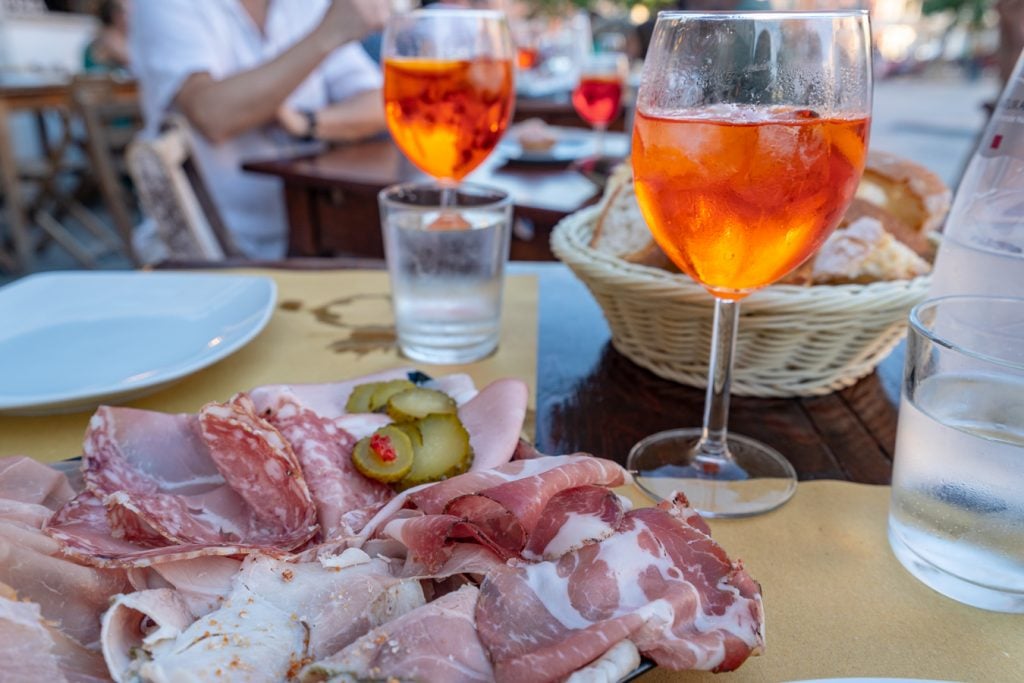
Monday is generally a terrible day to visit museums in Italy.
This is a very common day for museums to be closed, including the Uffizi Gallery in Florence, the Borghese Gallery in Rome, and the Galleria dell’Accademia in Florence.
The Vatican Museums are, unsurprisingly, closed on Sunday instead of Monday.
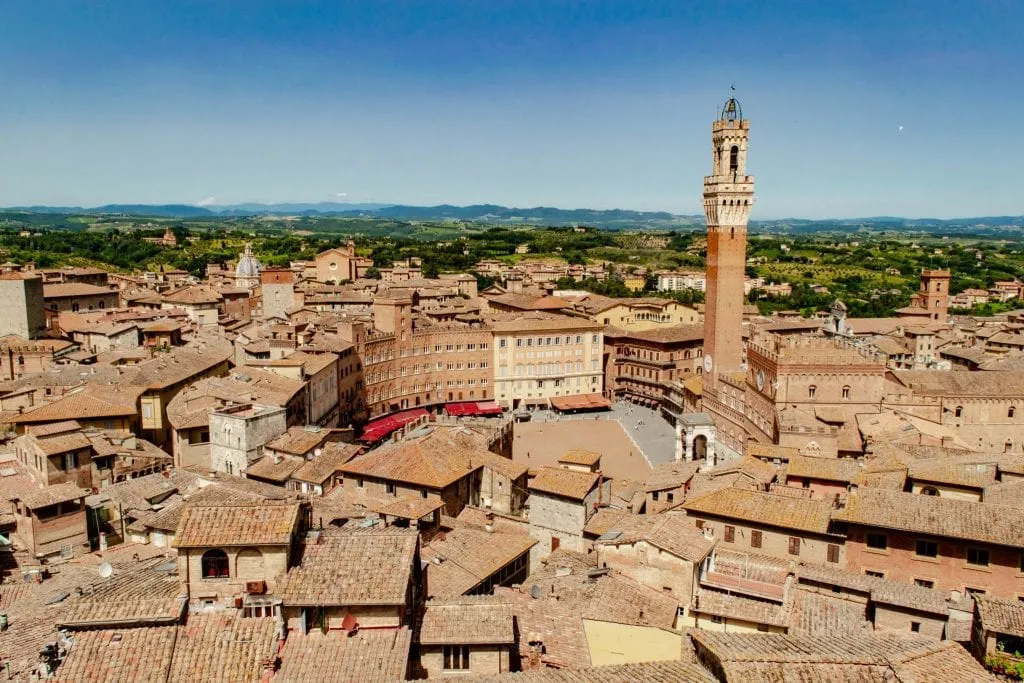
Take advantage of skip-the-line tickets at all popular attractions.
They’re generally available for a small upcharge (sometimes even no upcharge!) and will make your visit to Italy so much smoother.
We book all of our tickets for major Italian attractions like the Uffizi Gallery, Colosseum, Vatican Museums, Doge’s Palace, etc, on Get Your Guide.
You can drink from the fountains.
The small, pretty fountains found all over Italian cities?
That water is potable, and you can absolutely take a swig or even refill your water bottle there.
We love taking advantage of these fountains every chance we can and always miss them when we’re traveling in cities outside of Italy (and our dog Ranger is an even bigger fan than we are).
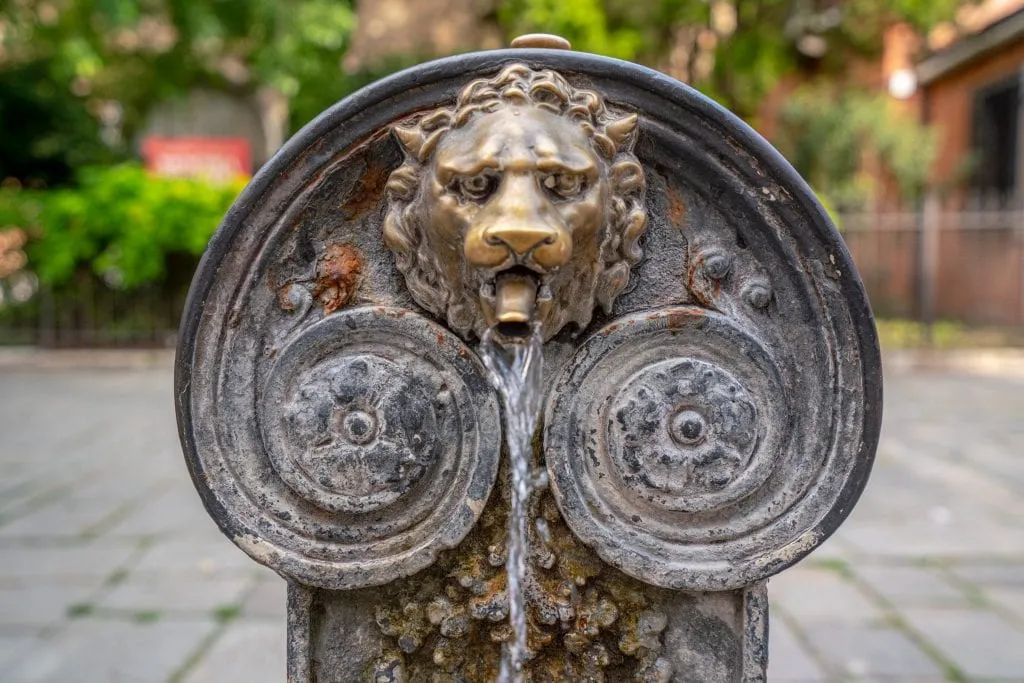
Fall is the best season to visit Italy.
Unlike many of these travel tips for Italy, this one isn’t objective truth but only our opinion!
Fall brings cooler weather (though still decently warm in most parts of Italy in September and October), the harvest, lessened crowds, lower prices, and plenty of crisp, sunny days.
There is nowhere on this planet I would rather spend the month of October than central Italy.
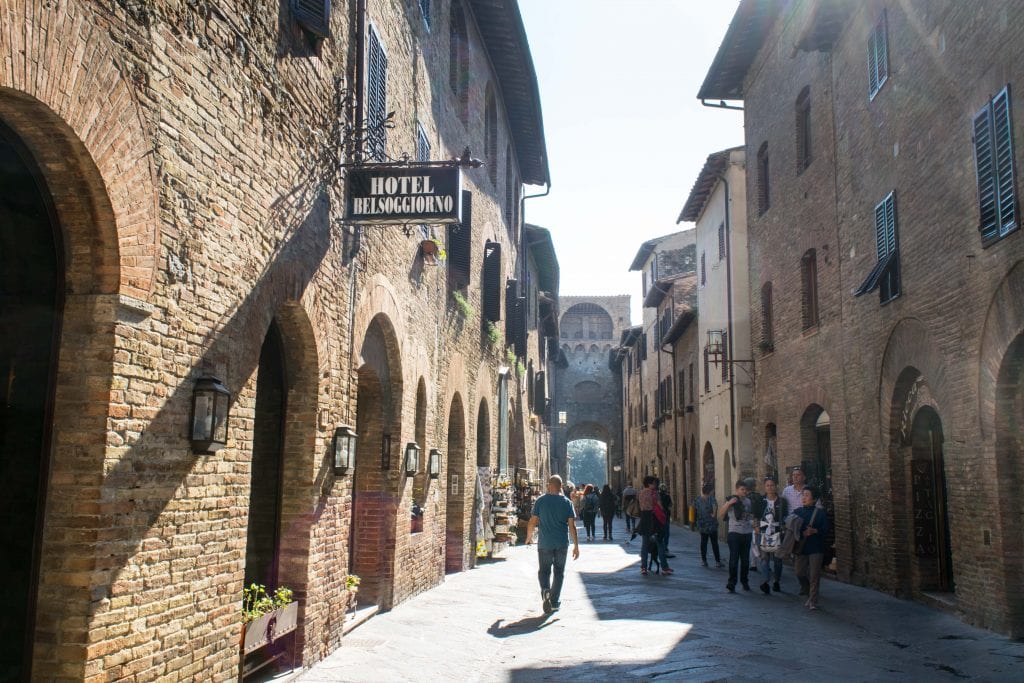
Winter also has its perks!
One of our favorite travel tips for Italy is to consider traveling in the offseason–it is both peaceful and lovely!
If you’re visiting Italy on a budget and want to see the country’s classic attractions for cheap, winter has a lot to offer.
We are often downright shocked at how empty the cities are in winter, and they’re still lovely to visit.

… But don’t expect great Christmas markets.
Those are more of a Central Europe thing.
The closest you’ll get to “real” Christmas markets like what you’ll find in Austria or Germany is in Bolzano, which is home to the oldest Christmas market in Italy, and the smaller South Tyrolian towns that surround it.
… No big surprise, since the area was Austrian until 1918!
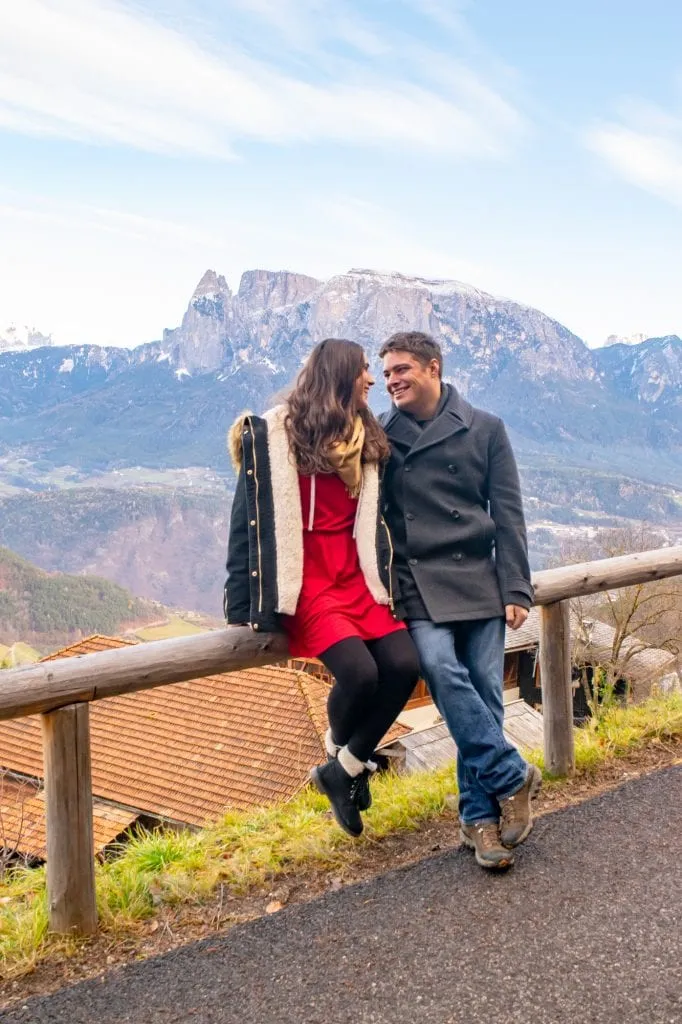
Be prepared to carry your luggage for decent distances.
This is especially prevalent in city centers, where transportation may not be able to deliver you all the way to your door.
If carrying your luggage sounds terrible, you might be able to hire a porter!
They’re especially common in places like Venice and Cinque Terre, and many hotels offer the service.
If you try to politely stand back in a line/queue, your turn may never come.
… And this becomes more and more prevalent the further south you travel in Italy.
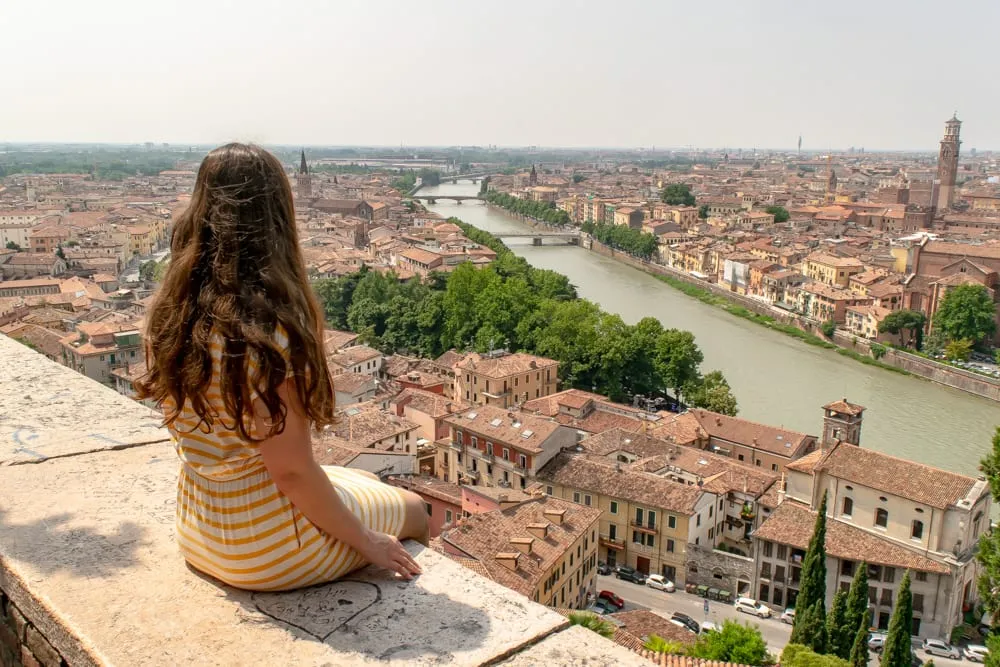
English is the international language of tourism, and that includes Italy.
… So don’t worry about being fluent, especially in large cities and particularly touristy areas (like hotels and big tourist attractions).
However, everyone in Italy does not speak English.
You should absolutely learn at least a few basic Italian phrases before coming to Italy!
Here are a few to keep in mind.
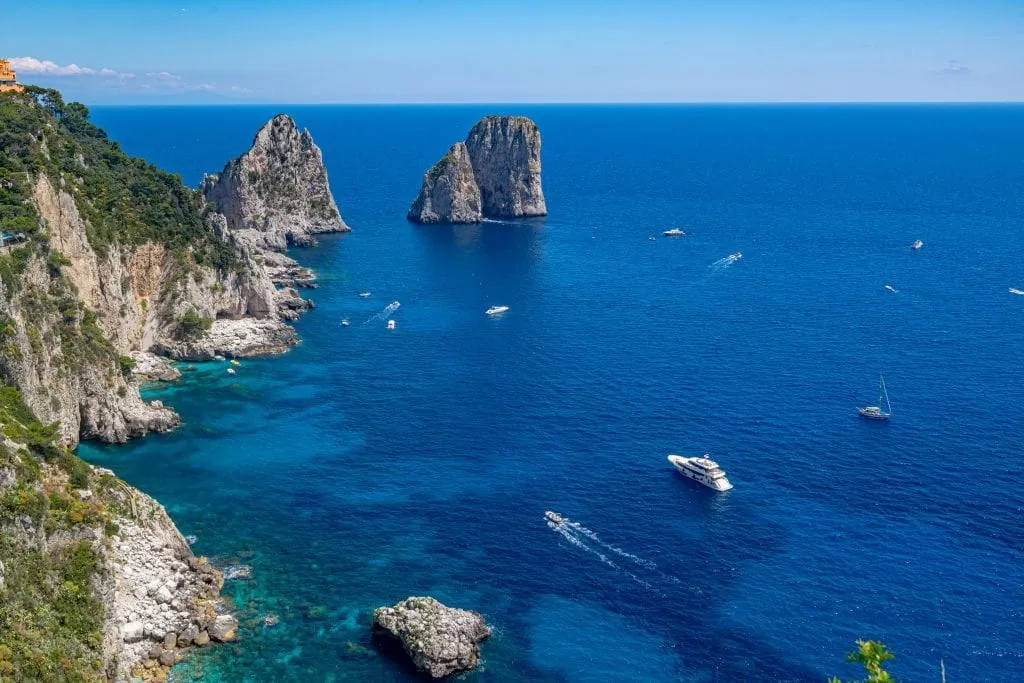
Basic Italian Phrases
Buongiorno. — Good morning.
Buona sera. — Good evening.
Ciao. — Hello/goodbye. (More casual than above.)
Per favore. — Please. (When requesting or accepting something.)
Grazie. — Thank you.
Prego. — You’re welcome, or please. (When offering something–as in, “Please, have a seat.”)
Non capisco. — I don’t understand.
Parla inglese? — Do you speak English?
Il conto. — The check. (In a restaurant.)
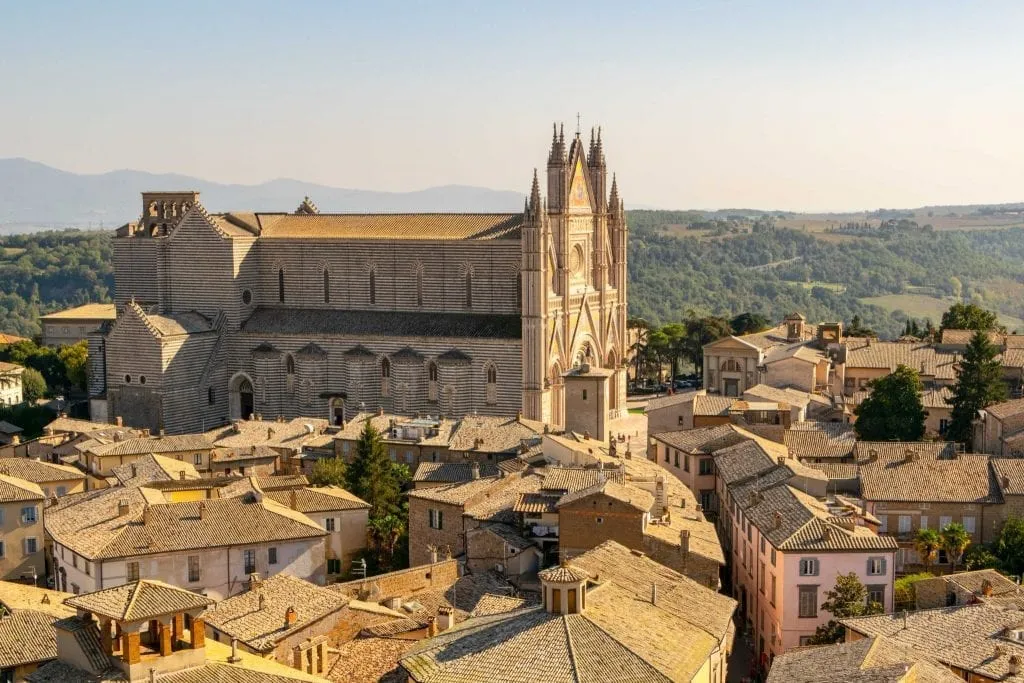
Advice for Avoiding Common Scams in Italy
Sign no petitions.
I don’t care what they say it’s for, pay attention to this Italy travel tip: sign nothing. Smile and walk away.
Take no flowers.
This is a very common scam throughout Europe and seems to be particularly prevalent in Venice.
If someone hands you or your partner a flower, they will try to extort money from you for it.
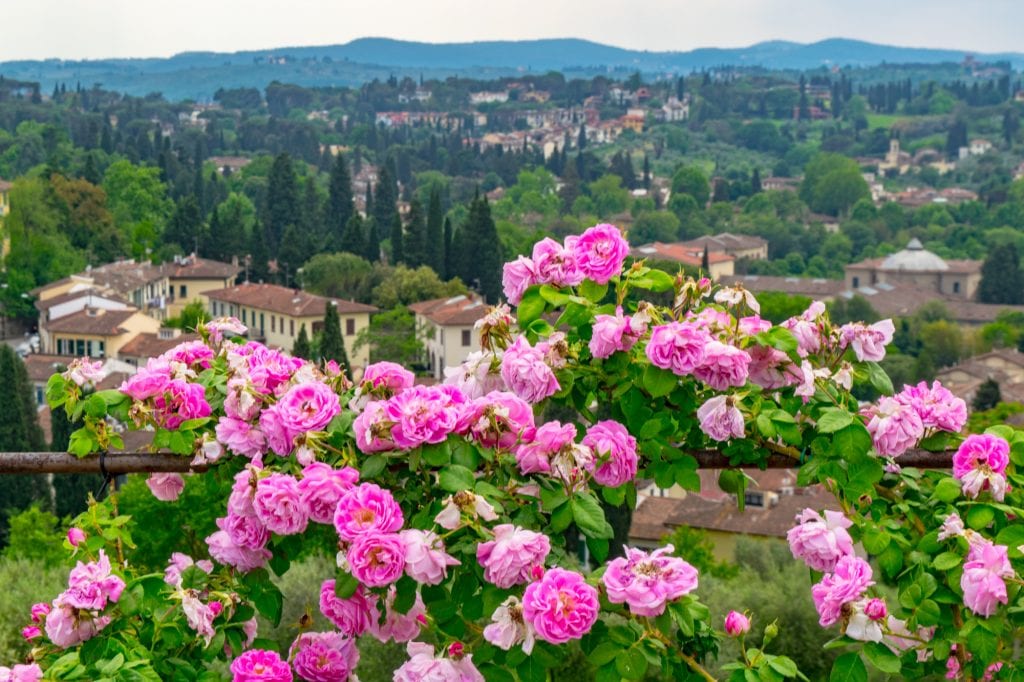
Don’t let anyone give you a friendship bracelet.
Yet another common scam in Italy–the friendship bracelet.
Someone will approach you to offer a “free” friendship bracelet.
As soon as it’s tied to your wrist, it’s not free anymore.
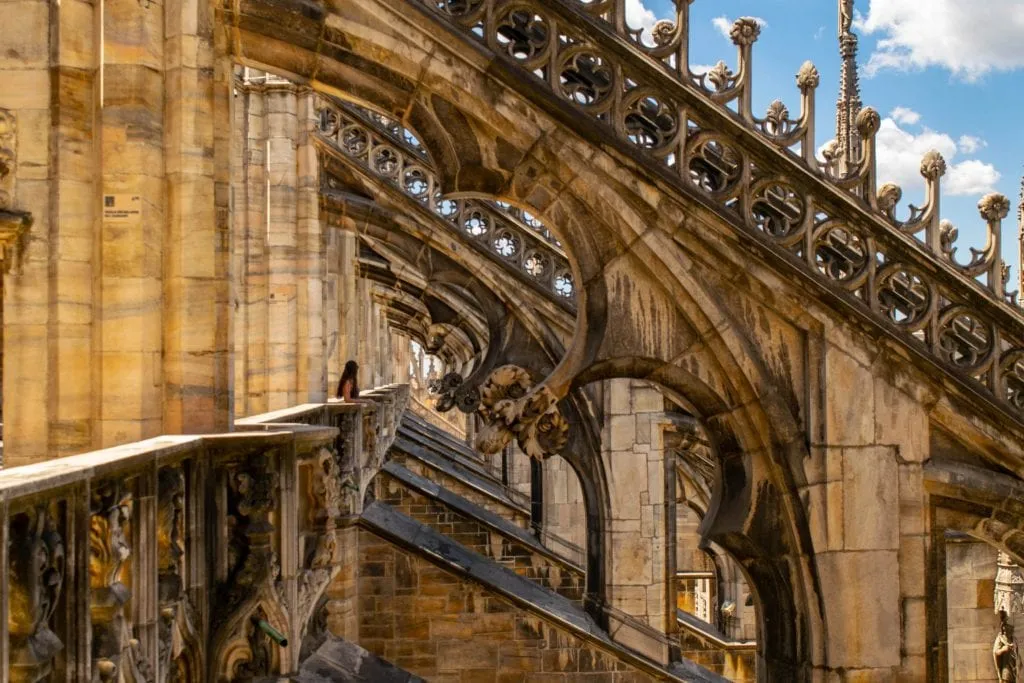
Keep an eye out for pickpockets.
This goes double in busy train stations, on crowded buses and trains, and in highly touristic areas like near the Colosseum, St. Mark’s Square, Duomo di Milano, etc.
Naples and the surrounding area, especially the Circumvesuviana train, are particularly packed with pickpockets (the Circumvesuviana is the only place we’ve ever knowingly seen someone get pickpocketed!).
If you’re particularly concerned or not used to watching your belongings in a crowded urban area, you might want to consider using an anti-theft backpack or a money belt for a little extra security.
Now, to be perfectly clear–all pickpockets know to check for money belts, and we no longer choose to use one ourselves.
That being said, they do offer a bit more protection than a normal pocket!
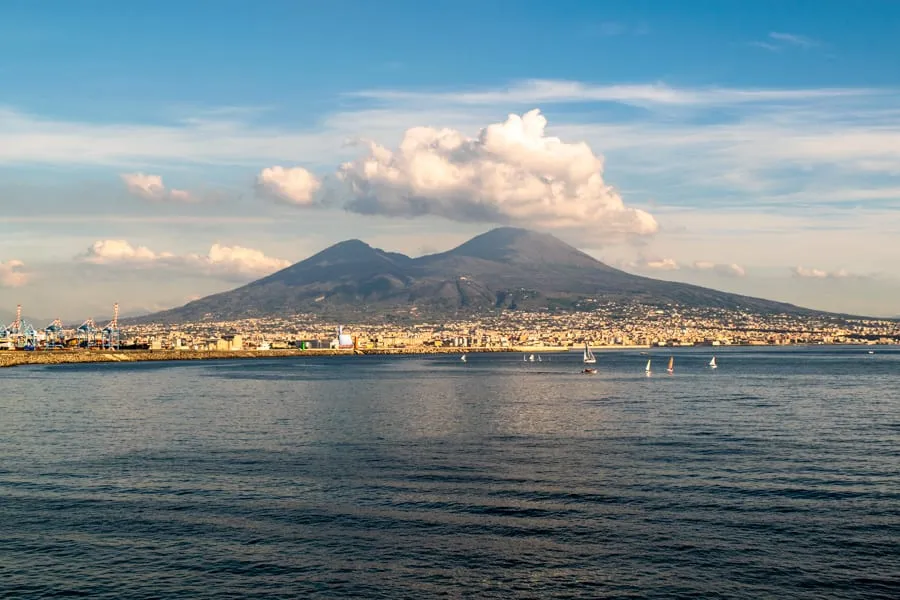
What to Know About Packing for Your Trip to Italy
You’ll need European travel adapters for Italy.
We recommend purchasing travel adapters for Italy before you arrive, though you can find them on the ground in Italy as well.
Leave your hair tools at home.
The voltage, not just the plug, is different in Italy.
To use your hair tools, you’ll either need a converter (which is both heavier and more expensive than an adapter) or a dual-voltage device.
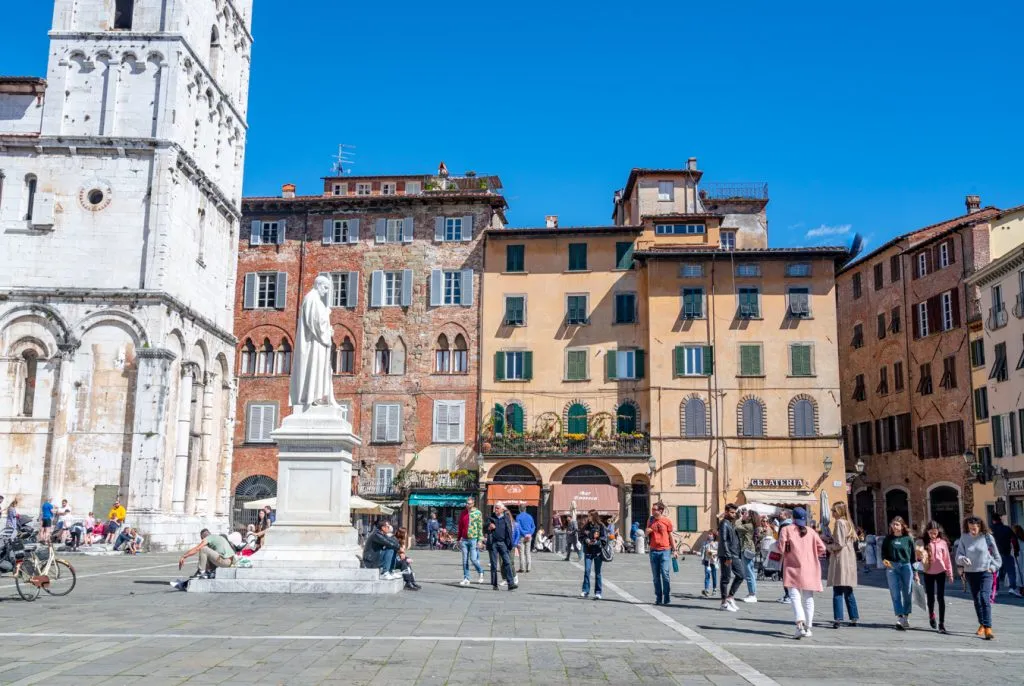
However, most hotel rooms will have a hairdryer.
So you won’t be left completely without styling tools if they’re important to you!
Bring at least one church-appropriate outfit.
That means no knees (men can usually get away with shorts that hit at the knee), no shoulders, and no cleavage.
Trust me–it’s not fun being turned away from a religious site!
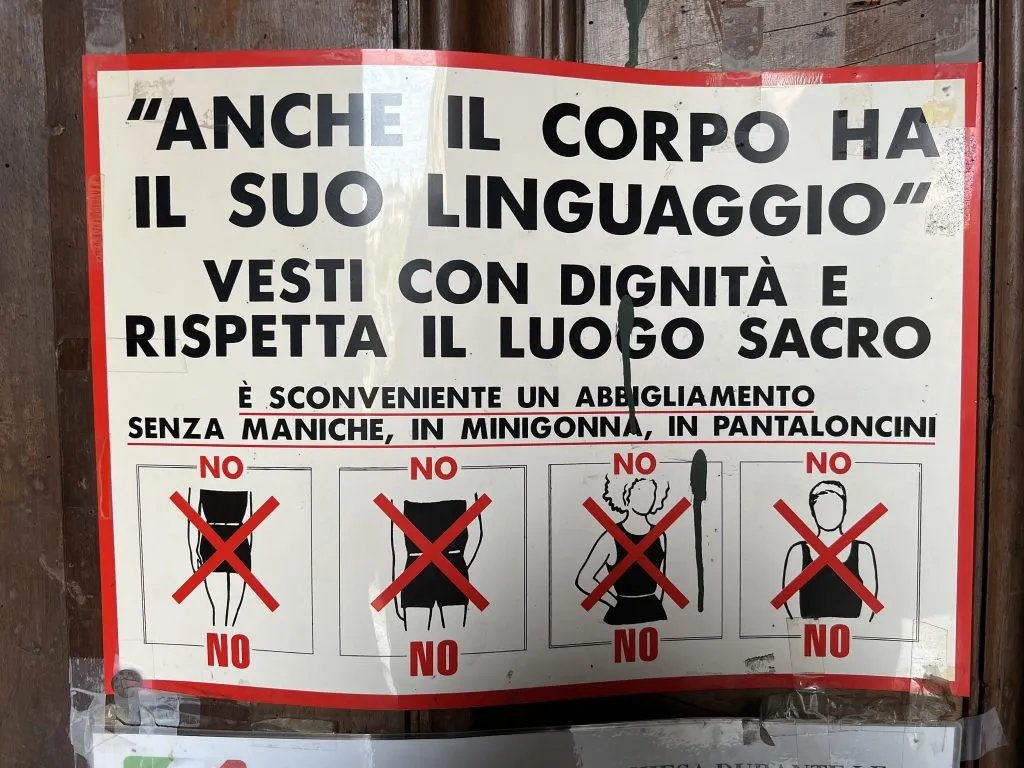
Bring (or buy!) a scarf.
Not only are scarves fashionable year-round in Italy for both men and women, but it’s also a cheap and easy way to make a church-ready outfit in a jiffy during the hot summer.
You won’t always be hot in the summer, though, so bring a jacket.
When Italians turn on the a/c, they really turn it on.
If you tend to get cold like me, definitely follow this Italy travel advice and bring a jacket–otherwise, you might be freezing in a train or museum.
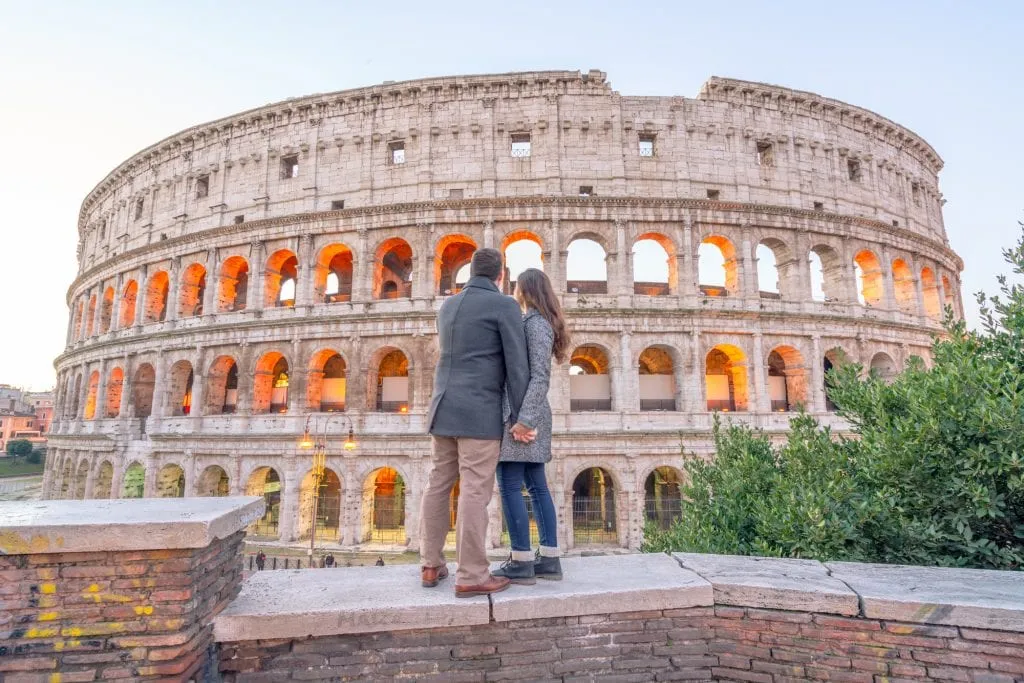
Other Things to Know Before Visiting Italy
There are two countries inside Italy.
Everyone knows about Vatican City, but are you familiar with San Marino?
Located in the eastern part of Italy between Emilia-Romagna and Marche, this tiny country styles itself as the oldest republic in the world!
It’s also incredibly beautiful, and definitely worth visiting.
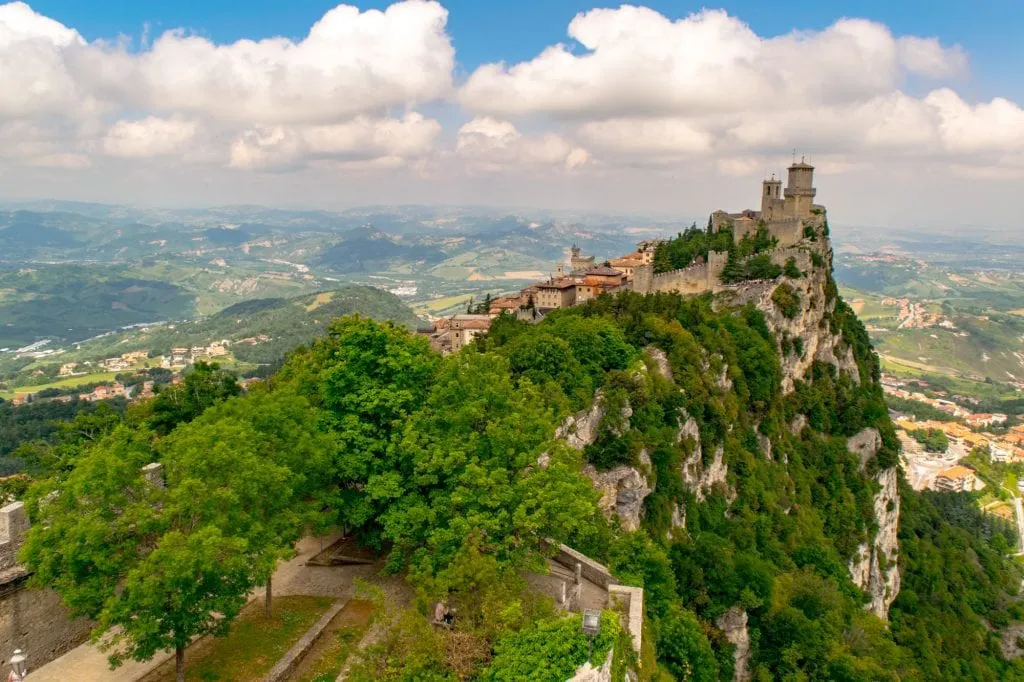
The emergency phone number in Italy is 112 (the equivalent of American 911).
Hopefully you’ll never need it, but it’s good to make a note of it just in case.
The northern, central, and southern portions of Italy are very distinct.
Everyone talks about the stark difference between the north and south when discussing travel tips for Italy, but central Italy has its own flavor as well!
In fact, if you’ve never been to Italy, central Italy will likely initially feel the most “Italian” to you based on the photos, videos, and stories we’re exposed to abroad.
Central Italy is where you’ll find Tuscany, Umbria, and Emilia-Romagna, which are home to rolling hills bathed in golden light, hilltop villages, and “classic” Italian foods like parmigiano-reggiano and tagliatelle al ragù (aka the real version of what non-Italians know as spaghetti bolognese).
Here’s our guide to the differences between northern, southern, and central Italy.
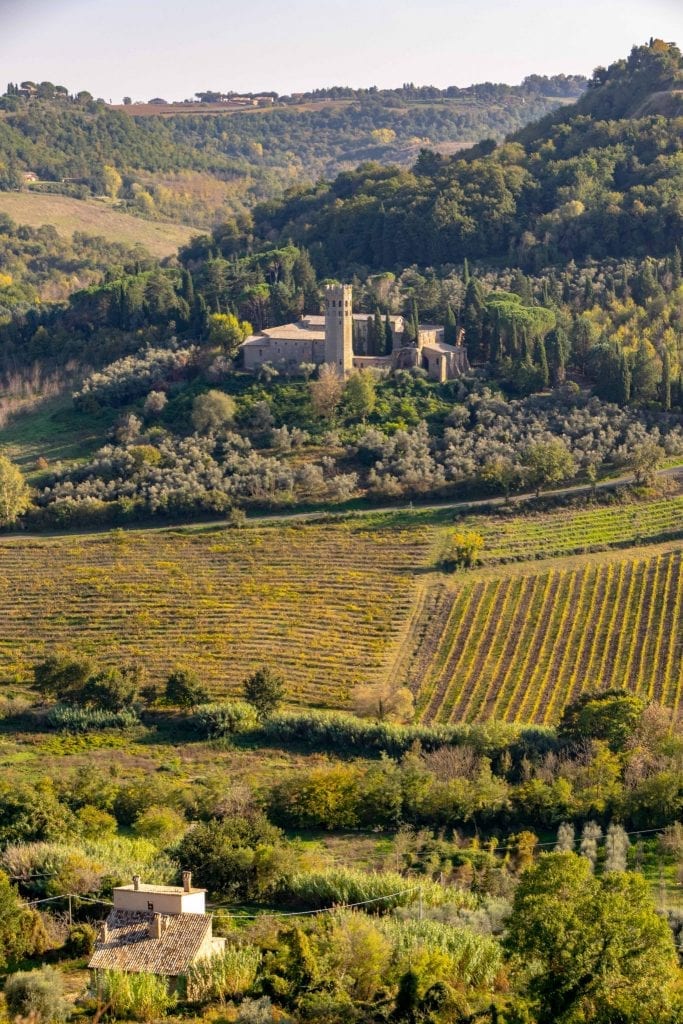
In fact, all 20 regions in Italy are distinct.
Italy was only unified in 1861 (and that date is a bit fluid), and the regional differences are still incredibly stark.
Italy didn’t gain its current borders until after WWI!
Vittorio Emanuele II was the first King of Italy.
This is why you’ll see his name just about everywhere!
Examples you might recognize are the Galleria Vittorio Emanuele II in Milan and the Vittorio Emanuele II Monument (aka Altare della Patria/Altar of the Fatherland) in Rome.
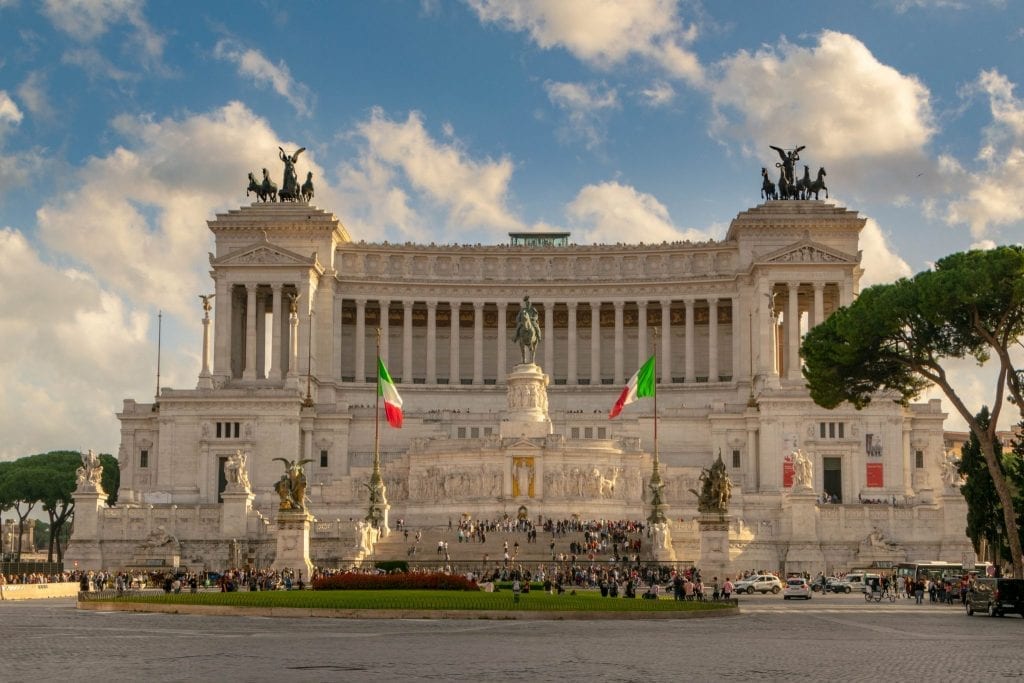
Dialects definitely still exist.
You won’t hear a lot of it as a tourist, especially without seeking it out, but Sicilian dialect, Napoli dialect, Roman dialect… all of these languages (and more!) still exist and are spoken in the small towns of Italy.
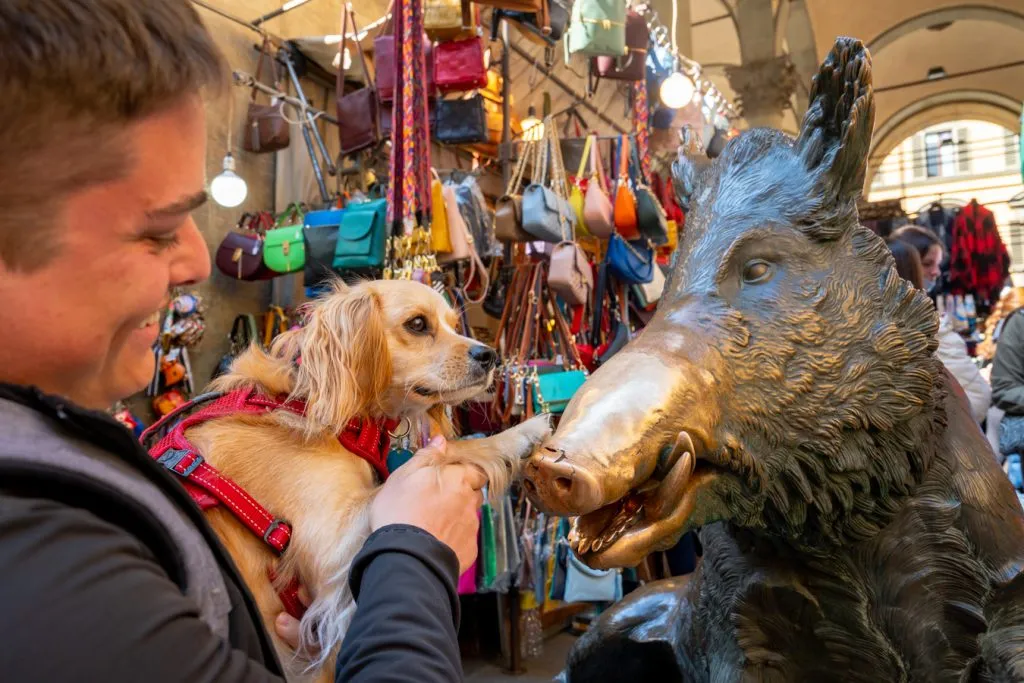
Italy has some of the best dog-watching around.
… Especially if you’re into tiny, fluffy dogs.
We’ll end this Italy travel tips post on a light note: if you’re a dog fan like us, be prepared for all kinds of cuteness in Italy!
[convertkit form=828904]
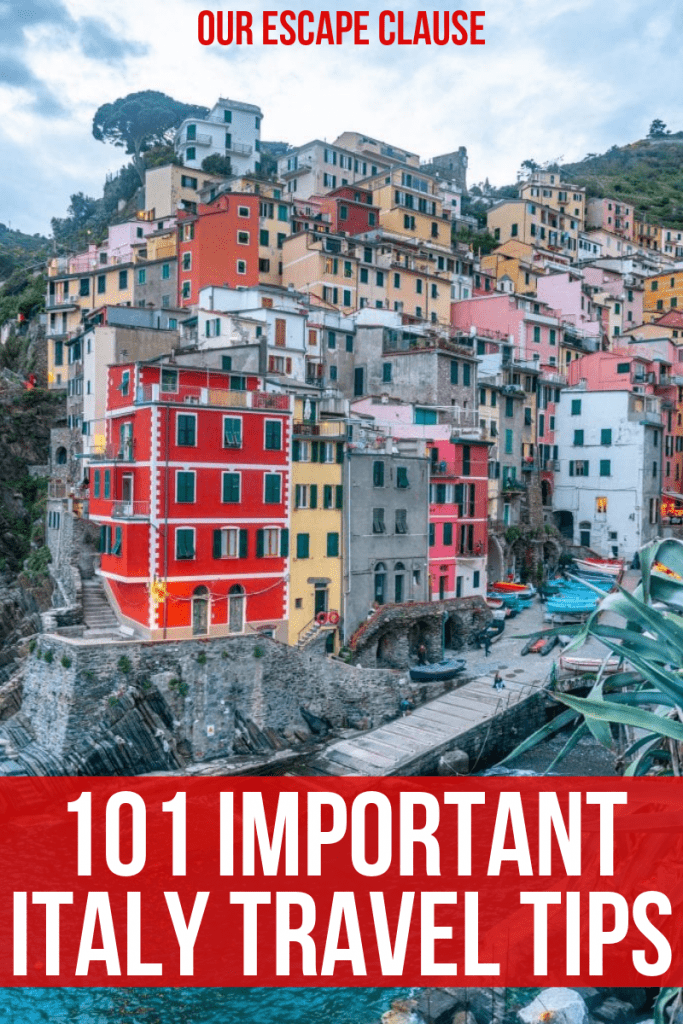
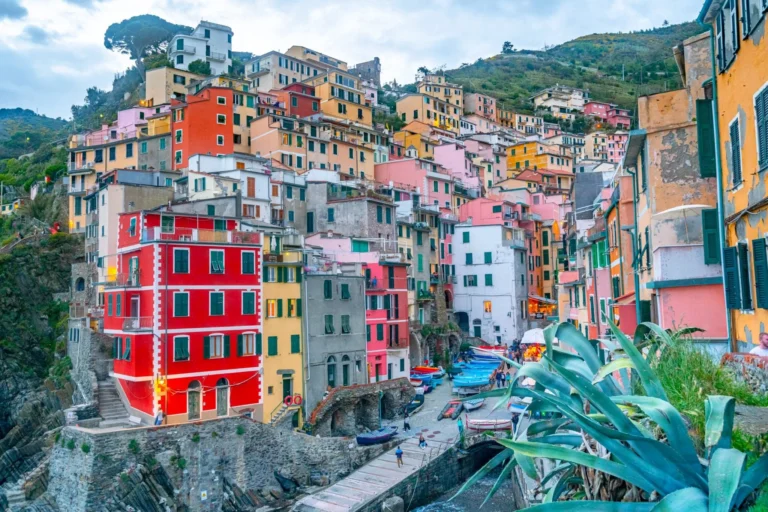
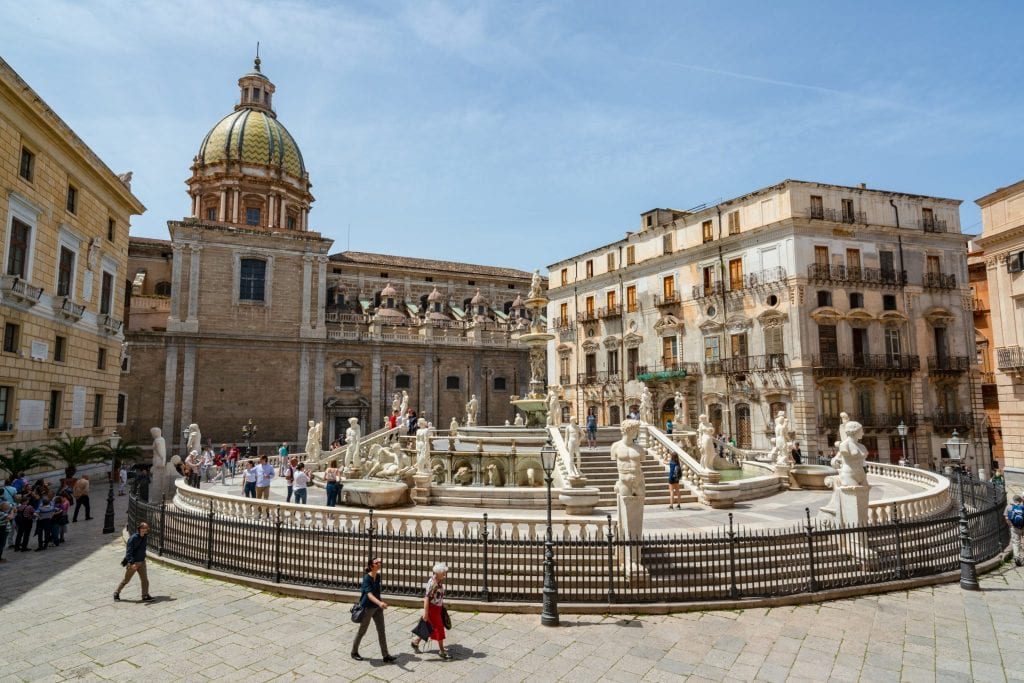
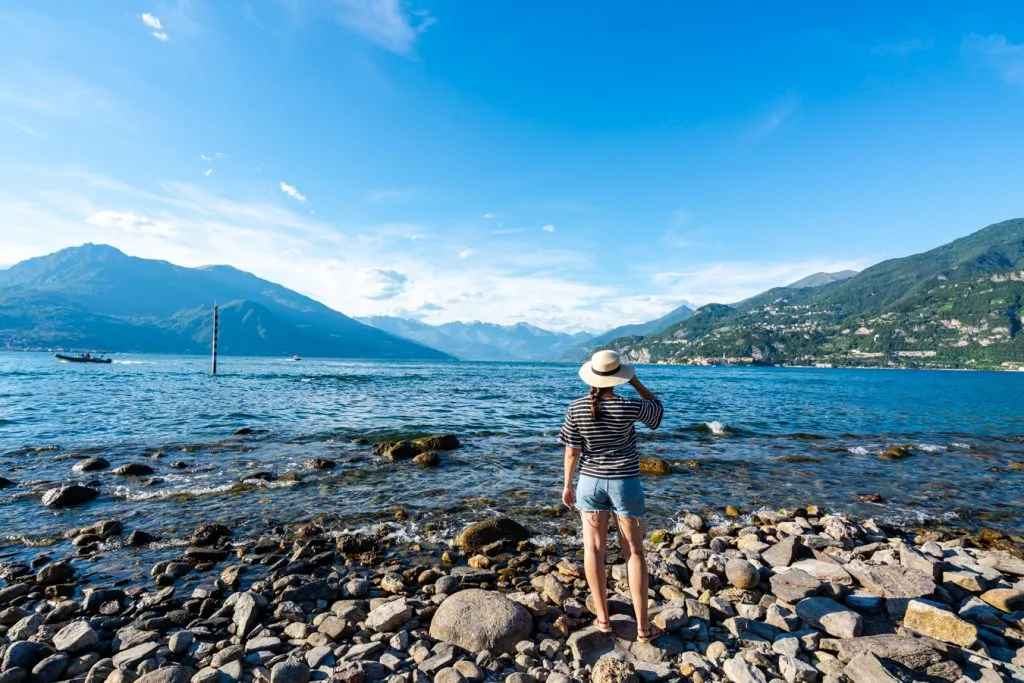
Love this!! Leaving the end of September for our first trip to Italy. I have 2 questions… 1) if you’re there only 10 days is Pisa or San Marino worth a look? 2) we were trying to drive from Venice to the French Riviera to Barcelona but proving to be too difficult. Thoughts?
Hi Suzanne!
On your first question, not sure if you’re asking either/or or whether both are worth it… personally on a first Italy trip, I wouldn’t recommend either Pisa or San Marino unless you REALLY want to see them and happen to be close. Of the two, I vastly prefer San Marino! It’s absolutely worth seeing, but I wouldn’t go out of your way for it on your first trip.
That road trip does sound quite intense! If you’re not planning on seeing anything in particular in between Venice and the Riviera, I’d look at flights or trains to Nice instead. You’ll also likely incur some additional charges to cross borders in your rental car, and large fees for dropping it off in a different country (I’m assuming you’re not planning on driving back to Venice).
If it were my trip, I’d only rent a car in France, and use planes/trains/buses to get there from Venice and to reach Spain from southern France, but that’s not to say you’re wrong to drive (and I don’t know how long you have or what stops, if any, you plan to make in between). Road trips can be fun, but definitely add a layer of complexity in this situation.
Thanks for such an informative blog! We head to Florence, Cinque Terre, Nice and Aix-en-Provence at the end of September. I am jealous that you have been able to explore the world, though I’m sure it takes a lot of work! Inspires me to keep booking trips!
Thank you so much, Liz! That sounds like an absolutely sublime trip–hope you have an incredible time! 🙂
Hi Kate, Thank you so much for all this information. I have been to Italy before and love it. I’m going with a couple of girlfriends that have not been before in October. We have only 8 days in Italy. Can’t wait. We are starting in Rome, then Florence and on to Venice. My Favorite is Venice! We are only in Florence 1 full day and have 2 tour options we would like to do, however maybe only have time for 1. The tour of Tuscany, includes Siena, San Gimignano and Pisa with a Wine and lunch or tour the Italian Rivera (which looks sooo awesome). I think we should do the Italian Rivera by train on our own though if we choose that one. Which would you suggest?
Both places are amazing, of course! I’d personally probably opt for the Siena/San Gimignano/Pisa/Wine option, just because you’ll be in Tuscany anyway and it’s a shame to go all the way there and not see the countryside. Plus, the Tuscan countryside is fantastic in October, while the Riviera is winding down and more or less in the offseason by then.
As for the Riviera independently, it depends on where exactly you want to go–Cinque Terre, for example, is a logistically complicated and LONG day trip from Florence by train. Not impossible, but not nearly as relaxing as sipping wine when overlooking a vineyard!
Ciao Kate!
My name is Elena, I am italian (from Veneto, near Venice) and I found casually this guide on the internet.
I found super interesting to read how a lot of this that are normal for me are actually strange for foreigners. I just want to tell you and your readers that all you’ve written is really true. The differences in our regions are truly important, so everyone who wants to discover Italy needs to visit all of them.
My favourites are Venice, Rome, Siena, Trieste, Padova, Turin and Assisi! Have you been there?
I hope to discover the USA one day!
Thanks so much, Elena! So glad this guide reads as accurate to Italian eyes. <3 We adore Rome (probably our favorite city on the planet!), Venice, and Siena, honestly didn't fall in love with Trieste (though we're willing to give it a second chance--Miramare Castle was amazing), and haven't been to the others... yet! Hoping to explore most of Italy eventually.
Hope you and your loved ones are holding up okay during these very strange times we are living in!
This is a wonderful resource! My husband and I are thinking about visiting the Lake Como area in July, assuming it is open for travelers. What are your thoughts on that area at that time of year? We haven’t booked anything yet – just investigating our options.
Hi Sandy! Unfortunately, Lake Como is one of the biggest travel oversights in Italy so we haven’t been ourselves yet (can’t wait to fix that!), but from what we hear from friends, it’ll be beautiful and crowded in a normal year. Definitely don’t expect a bargain, but the hikes and boat rides will be at their best!
Hi Kate! I am going to Italy and will be taking my teenage daughter. We will be all over – Milan, Venice, Florence, Rome. Do you know of any tourist friendly night clubs/dance halls that we could go to? I get all the day trips and great stuff to see, but what can we do at night?
Hi Lauren! No, that’s not our area of expertise, but I’m sure you’ll be able to find some (except possibly in Venice–it’s very, very quiet at night there). Hope you guys have a great time!
Kate what a great resource you are..Thanks for sharing your insight. We are planning a two week trips to Tuscany the first two weeks of ..September… . what would be appropriate attire and what type of shoes would you suggest?
Thanks so much, Beth!
September is a wonderful time to be in Tuscany, but it will probably still be quite warm. You’ll probably want comfortable sneakers/closed-toed shoes, but probably not boots. Maybe a light jacket for the evenings, but even that is a maybe.
Definitely check the weather as your trip gets closer, though, you never know what will happen!
Kate thanks for the quick response….I appreciate your advice….starting to get excited… we are staying at a villa in Cortona with 3 other couples and we are starting to plan day trip… any suggestions on what not to miss would be awesome !
Thanks
Beth
Oh goodness, so many options! You guys will have a wonderful time.
I’d look at Montepulciano, Pienza, Perugia, and Assisi for possible day trips, but that’s just scratching the surface!
Thank you so much for the many tips on Italy, I particularly enjoyed the coffee guide. My wife and I will be there for the first time for 10 days in August, focusing on the big three of Rome, Venice, and Florence. We have most of our travel and tours booked, but we don’t really have much planned for the evenings. Do you have any recommendations? Perhaps some “must dine” restaurants?
-Thad
Thanks so much, Thad! I had lot of fun writing that coffee guide. 🙂
If you have room in your schedule, you may consider swapping one of your big tours (Colosseum, Vatican, etc) for a night tour if you haven’t already, as August is such a hot and crowded month. It’s a fun way to break up a day–we just did a Colosseum night tour last month and I reviewed it here: https://www.ourescapeclause.com/colosseum-at-night-tour/
We also love doing food tours at night! Take Walks has some incredible ones, we especially enjoyed their Florence tour.
Other than that, we do have night guides to all 3 of those cities with some more ideas on what to do with your evenings! Here’s our Rome guide: https://www.ourescapeclause.com/what-to-do-in-rome-at-night/
Hope you guys have a fantastic trip! We count each of those cities among our absolute favorites, you’re going to have a blast. 🙂
hello,
My main question is how to stay in Italy, I have heard so many differnt ways, I will be moving like crazy too try and see it all. I will be there 22 days and was wondering should I do hotels, B&B, or Airbnb? any advise on this.
Thank you
also I download the Italy version of uber, but any other apps I should get? for trains, tours etc…
Thank you.
Hi Andy!
First step: take a deep breath and don’t try to see it all! I know, it’s cliche, but seriously–your trip will be better for it.
A mix of hotels, bed and breakfasts, and apartments/Airbnbs is completely fine, we use them all. No one option is best, they all have pros and cons. Whatever looks like the best option in any destination is what we go with.
We don’t use a lot of apps beyond FreeNow when traveling in Italy ourselves, but you may look at Trenitalia for checking train schedules, etc. The app is a bit wonky with non-Italian cards, and you can’t save your information without an Italian tax number, though, so you can’t access all the features.
Hope you have an incredible trip!
Hi Kate,
Thank you for all the helpful info! I am going with my mother in two weeks and we will be renting a car and going all around the country. I have traveled to multiple countries, but I’m very concerned about the pick pocket scenario in the larger cities of Italy. For someone who is naturally very aware of her surroundings, what sort of bag would you recommend? I am not comfortable with the backpack as I cannot see it, and I’m thinking more of a cross body and keeping my arm and hand over it. Also do I need to be worried about my smart watch being taken? Would you recommend wearing it or not?
Any and all help with what bag to use is appreciated.
Hi Brittany,
Pacsafe (the brand that makes our backpack) also has some cross-body bags. Some of my best friends use those and swear by them!
As far as your smartwatch, it’s up to you–it’s not zero-risk to keep it on, of course, but Jeremy does wear his watch in Italy.
Pickpocketing is definitely a concern, but outside a few very specific places (like the Circumvesuviana train in Naples), the risk is pretty similar to any other dense, highly touristed European city.
Regarding ATM’s. I have dollars to bring over is it easier to cash American curreny at a bank or just bring a debit card and withdraw euros? Will establishments accept American currency?
Bringing a debit card and withdrawing Euros directly is always our preferred method!
I imagine banks will change USD for you, but I’m not sure how competitive the exchange rate will be.
I’ve never heard of anywhere in Italy taking USD! You’ll definitely want to stock up on Euros. 🙂
Very helpful I formation.Going to Toscany for a week on 20th September.. Regards Anna
Hi Kate
I am a Native Italian, but lived in the USA and I would like to have the option to go back and forth, but do not know how to do so. I had forgotten many things and of course found that many cities have changed a lot. I agree with all you said, especially to be sure where to drive (I got a ticket in the States). Each cities is divided in weird zones and if you do not have the right car you can’t get in. I also have bought a portable router with 200GB so I can connect wherever I go. Turning light switches, keys, and opening doors is still challenging at times, which makes you feel dummy. In most coffee places (bars) nobody will show up unless you ask for to pay. My favorite cities are definitely Turin (no need for car), the first Italian capital, with tons of museums and beautiful buildings and walks. There is one Synagogue close to the main station. From there I loved to go to Lake Maggiore (Bellaggio, Isola Bella, Ticino). About 1 and half hour by train from Milan. It is much cheaper than Milan. They are famous for the Americana (Happy Hour), where for a max of $20 you get a full buffet. It takes more than 1 day to see it all. The Mole Antonelliana is now a Museum of Cinema (movies), the Museum of the Shroud is amazing. I one does not mind the very cold winter, they have impressive lights. Naples has a magnificent historic center, which contains an old Giudecca with Synagogue still active, close to both the Harbor and the shopping center. Capodimonte Museum and the view are magnificent. There are two levels to the city so there are several “funiculari” (trains that go up and down). Pizza is a must. The view of Vesuvius in amazing. There is always something going on so check ahead of time. Nearby Pozzuoli has underground caves, just like Turin with its underground. From Naples one could easily reach the Islands of Capri or Ischia or go to Sorrento and take the bus to visit the Amalfi Coast (scary thought to drive there, but more freedom to explore) and pause in Salerno to visit its historic center also very vivacious 24/7 with Mexican, Venezuelan, Chinese, Indian, Irish and so on food places all stuck together. Lots of little interesting artisan shops. The railroad is quite important and there are many buses so you can pretty much go everywhere. Make sure to maker reservations in advance, for Salerno is very popular and can be expensive all year long due to its temperate weather. In December they are famous for their street lights.
I am from Milan, but lived also in the cities I mentioned, which is why I gave those tips, but would like to know from you if Trani residents (and Bari) seem to be open minded. Also, since I am hoping to find other expats, what do you think about some main coastal Cities on the Adriatic? Bari, Ancona, Pescara, Pesaro? I was in Trieste but don’t remember much. Have you been in Croatia or Albania? Thank you
Hi Eva,
We very much want to go to Turin/Torino soon! We actually had planned to visit for a few days this fall, but ended up spending our time in the Langhe region instead (which was also amazing, of course).
Naples is a delight, we’ve visited twice and plan to visit many more times. 🙂 Unfortunately, we did not luck out with the weather when visiting Sorrento/Capri/the Amalfi Coast, so we owe those several more visits as well!
We’ve spent a lot of time in Croatia and love it! Haven’t made it to Albania yet, but hopefully one of these days. 🙂
Thank you for all of the incredible information! I have been given the opportunity to sing at the Vatican next summer! I of course have to raise the funds first, but your blog helped me in so many ways to plan! I do have a question. I know that I will want to bring wine back. Any suggestions? I live in FL. Thank you so very much! Grazie!
Hi Jill,
Congratulations, that sounds incredible!
If you’re only talking about a couple of bottles or so, you can bring those back yourself in your checked luggage.
If you’re thinking more bottles, consider shipping! It’s a bit of a splurge–think in the neighborhood of 75-100 Euros for a case of 6 bottles–but most wineries and enotecas are more than happy to do so, and it makes for a great memory.
Hi Kate, amazing blog ,my wife is doing an art course with Art Toscano near Barga in Lucca on May & we would like to spend some time on the coast adjacent to Florence… I’ve looked around LaSpezia & Livorno , any other interesting coastal areas we could visit on a budget. We’ll be in Italy for 3months, travelling from Australia
Hi Ivan,
Are you looking for day trips? If so, you may look into places like Portovenere and Camogli. Cinque Terre won’t be at its peak crowds and prices yet, but it’ll definitely be more expensive than other options.
If you’re looking for a longer coastal getaway, 3-4 days or more, though, you can even look beyond the closest spots. The Adriatic Coast has some incredible spots that can be bargains by comparison, including Sirolo in Le Marche. You could also consider taking the ferry out to Elba to experience Tuscany’s most famous island!
We’re very partial to Puglia for affordable Italian beach towns, but unless you have several days to work with it likely won’t be worth the train ride.
Hello Kate, thank you so much for these useful tips. I will be staying in Rome from May to July and this will be my first time in Europe. I hope to travel to other cities in Italy and other European countries and was wondering for what advice you may have for travel during this time within Italy and outside. I hope to go to Florence, Cinque Terre, and Venice. I also hope to visit Paris, Switzerland, and London. Do you have recommendations on how to travel to these places from Rome? Thank you!
Hi Mary,
How exciting! You’re going to have a wonderful summer.
Florence, Cinque Terre, and Venice are easy enough to do by train, which is what we’d recommend.
Paris and London you’ll definitely want to fly to!
As for Switzerland, it depends on where in Switzerland you’re going and at what time. If you’re combining a trip to Switzerland with Milan or Venice, for example, train works. Otherwise, it may make sense to fly.
Traveling by train is definitely our preference in Europe whenever it makes sense to do so! We have a whole guide with tips to do so here: https://www.ourescapeclause.com/travel-europe-by-train/
Hi Kate and thank you so much for sharing such wonderful tips! We are going to Italy for about 10 days in July ’23 and planned to split our time between Florence and Rome but also thought we may hit a beach (maybe near Rome?) . Wondered what you thought about this and any suggestions you have would be very much welcomed. Thanks!
Hi Judy,
You are so welcome, glad we can be helpful!
I’m not sure if you’re looking for a day trip or to spend a couple of nights at a beach, but either way, you have options. 🙂
The closest/easiest beach to Rome is generally considered Ostia. If you go, the ruins of Ostia Antica are well worth a visit as well. Ostia is more of a “local” beach but visitors do go there!
Sperlonga is a bit further from Rome and often considered one of the prettiest beach towns near the capital.
Near Florence, Viareggio (more local, but lots of beaches) and Forte dei Marmi are options, and of course, Cinque Terre isn’t too far (here’s our advice if you’re considering a day trip there: https://www.ourescapeclause.com/florence-to-cinque-terre/).
One quirk of Italian beach towns (especially in July!) is that the lidos, or beach clubs, often take up much of the beach and you have to pay to access them. You can typically find free swimming areas everywhere if that’s what you’re looking for, but depending on the place, it may mean throwing a towel down on some rocks!
The lidos are a fun experience, but it’s just something to be aware of since Italy is different than the US in that way. 🙂
Thank you so much!
My pleasure! 🙂
Hi Kate: this is my first trip to Italy and also first-time written questions about a trip online. We are traveling last week of march, and I am reading the south cities are best to visit in March? We are a group of 9, including kids and adults. What are you recommending for March month?
Hi Mare,
In March, you’ll want to be prepared for cold, gray weather in many cities. You’ll probably see some early signs of spring, especially in Rome and further south, but think of it more like a winter trip than a spring one!
With that caveat, though, any of Italy’s major cities are wonderful to visit in March, and while you’ll likely find yourselves wearing coats, you’ll also benefit from lower prices and decreased crowds than you would visiting in more popular months.
I wouldn’t have any qualms about visiting Florence, Venice, Milan, etc, during March!
Hi Kate,
Thank you so much for taking the time to share beautiful insights of your love & passion for Italy.
We (myself, my husband & 10 year old daughter) are Aussies & will be travelling over for a wedding in August 2023. We fly into Rome on the 17/8 & are heading to Genzano Di Luciano (close to Napoli) for the wedding on the 21/8 & will stay there until around the 25/8. We fly out from Milan rather than Rome on the 18/9 to go to Singapore for a week before returning to Australia.
If you were us, What would be your rough itinerary of must see places & for how long would you stop at each for the timeframe we have? We prefer not to hire a car & use trains where possible.
We had come up with a bucket list, but after reading your blog we realise that we have picked all of the tourist hotspots, still great to see, but perhaps not the best to stay at or stay long so we’re a bit lost & back to square one.
Also, do you have any accommodation recommendations? Did you notice if the accommodation was cheaper to book once in Italy rather than from home in the US?
Thank you so much again for all of the info you have shared already – it’s a huge help.
Hi Jo,
With that much time to work with (I’m counting about 3.5 weeks after the wedding, not including the time before that I assume you plan to spend seeing Rome?), the sky really is the limit with where you want to go–there are endless options!
For places beyond the usual top-10 destinations, a couple of our favorites that you might want to look into include:
Emilia-Romagna: an incredible food scene, wonderful architecture, and a beautiful landscape. You can also take a side trip to San Marino, one of Europe’s microstates! Here’s a guide to it: https://www.ourescapeclause.com/7-day-itinerary-emilia-romagna-italy/
Piedmont: a wonderfully refined food scene well off the usual beaten path. Home to the Langhe-Roero and Monferrato wine regions, which are absolutely stunning and a UNESCO World Heritage Site. Turin, the region’s capital city, is also overlooked but worth a peak.
Puglia: rising in popularity but a MUCH more laid-back Italian coastal experience than hotspots like the Amalfi Coast! Absolutely beautiful with unique architecture (trulli in particular), incredibly fresh food, and lots of whitewashed towns to explore in between beach days. Here’s one of our guides: https://www.ourescapeclause.com/puglia-road-trip-itinerary/
That is not remotely exhaustive, but hopefully it gives you a couple of ideas! Other places you might consider include but aren’t limited to the Dolomites (we like the Bolzano area), lesser-visited but easily accessed cities like Padua or Perugia, or hopping over to Sicily or Sardinia.
We’ve never noticed any price benefit to booking lodging in Italy versus the US, but I can’t say I’ve been on the lookout for it, either. I’d definitely recommend booking, at a minimum, all of your lodging in August (especially anything in the mountains or at the beach) well in advance. September will be a bit more relaxed, but still quite busy!
Hi there,
I lived in Italy for a couple of years (Veneto) and now send students there for study abroad. I’ve been working on a short workshop with travel and cultural tips for them. Your list covers pretty much everything I had in mind, and then some! Some things I had forgotten, like wearing a glove for produce at the supermarket. Great post, thanks for sharing!
Kim
Thanks so much, Kim! Hope your students have a blast in Italy! 🙂
Hello! Thank you so much for this very helpful information. We are taking our first trip to Italy in September 2024 and now have a 5 day reservation and an AirBnB for five nights in Testaverde Roma. Our plan is to then rent a car to drive to Tuscany for another rental in the countryside for 4 nights, drop our luggage and spend some time in Florence plus drinking up the area of Tuscany, then driving to Venice to drop off our car OR take a train to Florence, rent the car and at the end of four day stay, drop it off and take a train to Venice. Then a train to Paris for a few days and then to London by train. England is also a first. After doing our thing in London, we want to rent a car and visit all the charming areas in the countryside, staying at a couple of different rentals and then back to London and car drop off. We’d fly into Rome and out of London or? I’d love your thoughts. Thanks!
Hi Sheryl,
Your second plan with the car is likely going to be much easier! There’s no need to drive between Rome and Florence or Florence and Venice unless you’re planning to sightsee along the way, and by picking up and dropping off the car in the same place you’ll avoid the (often pricey) one-way drop off fee.
Flying into Rome and out of London can definitely work, no reason not to do that as long as the prices work out.
If for some reason it’s dramatically more expensive than a round-trip ticket and you’re not on a tight timetable, you could also check the prices for flying from London back to Rome to go home. Thanks to the many budget airlines, hopping between cities in Europe by plane can often be extremely affordable.
Have a wonderful trip!
Ciao, sono italiano e vivo in Italia da sempre. Sono stato negli USA tantissime volte e c’è una cosa che mi ha sempre colpito degli americani quando parlano dell’Italia e dei viaggi da fare in questo splendido Paese: sembra che per gli americani esista solo la Toscana o poco più. Vi posso invece assicurare che la Toscana è solo una parte (bella, per carità) dell’Italia e a parte Firenze, nel resto d’Italia c’è sicuramente di meglio della campagna toscana. Trovo assurdo ad esempio perdere delle giornate intere nella campagna Toscana e non prendere in considerazioni luoghi e città come Napoli (la città più “italiana” di tutte), Lecce, la Puglia, la Costiera Amalfitana e, soprattutto, la Sicilia! Non so se questo derivi dalla pubblicità delle agenzie di viaggio, ma da vero italiano trovo assurdo leggere che, ad esempio, si parta dagli USA per visitare Milano e non Napoli, Palermo, Taormina, la meravigliosa Capri ecc.
Hi Marco,
My Italian is sadly not good enough to type out a long response in your language (maybe one day), but thanks for sharing your thoughts! You’ll notice that all of the destinations you’ve listed are mentioned or highlighted somewhere on our website–we’ve been to them all and many more! 🙂
The reality is that most Americans are dealing with very limited time when visiting Italy–a 2 week trip is even on the generous side–so first-time visitors tend to prioritize the places that they are most familiar with and have been dreaming of for years. The Amalfi Coast is definitely one of those places, though!
Those who are lucky enough to return to Italy more than once tend to start branching out more, and we’re thrilled to sometimes be a small part of helping them do so.
Ti ringrazio per i complimenti all’Italia, ma ti posso assicurare che qualsiasi italiano resta meravigliato del fatto che una persona possa venire dalla lontana America e vedere solo la Toscana, senza ad esempio andare anche a Roma che è distante al massimo un’ora e mezza. Io credo che un viaggiatore dovrebbe seguire questo ordine di importanza (e bellezza): 1) Roma; 2) Venezia; 3) Firenze; 4) Costiera Amalfitana e Napoli (sono vicinissime); 5)Sicilia; 6) Sardegna; 7) Lecce e il mare del Salento; 8) un luogo a scelta tra la campagna Toscana, quella dell’Umbria e il fantastico insieme di paesi e montagne di una regione sconosciuta a tutti che si chiama Abruzzo, con città veramente deliziose come L’Aquila, Sulmona e Chieti. Un caro saluto.
Hi Kate
We are so excited to be going to Italy the last week in April for a cruise. We are flying into Rome, and have a timeshare in selvatelle. What is the best way to get from the Rome airport to Selvatelle? And conversely when we leave we need to get from selvatelle to the cruise dock in chivitavecchia. We are nervous to drive. Thank you for pointers!
Hi Michelle,
Sounds like an exciting trip!
Selvatelle (and the Hilton Borgo alle Vigne, where I suspect you may be staying?) is quite rural! In your case, a car will make your life much, much easier–I would argue it’s even a requirement to get the most out of your trip, given where you’re staying.
Selvatelle doesn’t have a train station, and while there are buses, they can be a bit of a pain to navigate depending on where you’re trying to go. If you were staying in a place like Rome, Florence, or even Lucca, I would be giving the opposite advice, but in your case, you’ll see much more of Tuscany with a car.
The good news is that driving in Tuscany is very doable. We have quite a few tips on what to expect toward the end of this post: https://www.ourescapeclause.com/tuscany-road-trip-itinerary/
You can definitely take a train from Rome to Florence and then pick up a car there to cut down on driving time. Same with the way home–if you return the car in Florence, you can take a train to Civitavecchia in order to catch your boat (you’ll need to make a change in Rome).
I have a note of caution about using Omnio to book group train tickets. In my case, we booked 5 tickets and then one of our group wanted to take a train that left the next day. I thought, no problem, we will just change that one ticket. The Omnio policy is that we could not make that one individual change without canceling all five tickets, paying a fee, and starting all over again with booking. I find this ridiculous since typically buying tickets to almost anything else – planes, concerts, even trains (on other websites) – are sold as a group but treated individually for changes. Not so with Omnio! Be aware.
I’m sorry to hear that, Paul! We’ve never run into that issue, but thanks for sharing your experience. I’ll ask them about it.
Hi Kate,
This is treasure trove of useful information. I do have a couple of questions about a trip I’m planning for April 2024.
The plan is 4 days in Milan, 3 days in Parma, and 3 days in Venice. The first question is how many days is really necessary in Milan? I’ve read that 2 can be enough or 3 is enough. I want to do a day trip to Lake Como (found one that also includes Lugano, Switzerland).
Would 3 days be enough to cover Milan? Also would a day trip from Milan to Florence be worth it or should I just wait until we return to Italy and make Florence part of a Florence, Rome, and Naples trip?
Second question is 3 days in Parma will include a day trip to Modena to visit a vinegar farm and see the sights of Modena (Ferrari Museum, etc). Is 2 days in Parma too much?
Finally, what are your absolute “must dos” in Venice? Is there a local restaurant that truly stands out? A coffee shop that we just can’t miss? A museum that is incredible but no one really knows about?
Thanks in Advance,
Rick
Happy to help, Rick!
I don’t think there’s truly a right answer on 2 versus 3 days in Milan, it’s a matter of personal preference. For us, 2 days (one spent fully in Milan and one on a day trip to Lake Como) would be ideal in your situation, but you’ll find plenty of people who disagree with us! Our one day Milan itinerary is a good overview of what you can expect to see in a day there–it’s up to you whether that’s enough: https://www.ourescapeclause.com/one-day-in-milan-itinerary/
A day trip to Florence is definitely doable from Milan and could easily account for your third day. I suspect it’ll have the effect of making you even more excited for the next trip, LOL, but you can certainly see enough to make it worth it! Just be sure to book the fastest train routes in advance, as the distance can vary dramatically depending on the route.
I wouldn’t say 2 days in Parma is too much (one for the city, one for a parmigiano-reggiano and parma ham factory tour), but you could also spend that third day in Bologna and have a wonderful time.
As far as Venice, this post covers a lot of our must-dos: https://www.ourescapeclause.com/one-day-in-venice-in-a-day/ Bar Ducale is a traditional coffee shop we enjoy there. 🙂 But the most important part of visiting Venice in our opinion is meandering far enough from the crowds that you can be alone amongst the canals–which is surprisingly easy to do! We have a post on hidden gems as well that you might want to check out–we cover several lesser-visited museums in there.
Have a wonderful trip!
Hi Rick,
I was born and I live in Milan, so I can try to answer your questions.
2 days in Milan can be enough to see main attractions.You can spend your first day visiting the city center and nearby district.You can see “Piazza del Duomo”, “Galleria Vittorio Emanuele” and “Piazza san Babila”, if you like museums, beside The Duomo there is “Museo del ‘900”. A tour on the rooftop of the Duomo, IMHO, is a must have if the day is clear.From Piazza del Duomo, walking for about 10 Minutes along “Via dei mercanti” and then “Via Dante”, you can reach “Castello Sforzesco” and “Parco Sempione”. Castello Sforzesco is a castle that was a residence of the Sforza family, the rulers of Milan, and Parco sempione is the garden behind the castle. You can also visit some museums inside the castle and there is an aquarium inside the garden (honestly not so big but the entrance is free). Not so far from the eastern part of the garden there is “Pinacoteca di brera” , another art museum.Not so far from the city center there is also “Museo Leonardo da Vinci” a science and technology museum but, IMHO, not worth it if compared to the same museum type that I saw and you have, in the U.S.
When you reach 6/7 P.M. you have to move from the city center. Keep in mind that the nightlife in Milan is not at all in the center but spread around the city. In the center restaurants and shops close early in the evening and the only places that you can find open are the night clubs. Don’t forget that night clubs in Italy are not “dancing clubs”, we call it discoteca, but are strip clubs :).
If you are not so tired you may have a nice walk to “navigli” via “colonne di san lorenzo” and then “Darsena”, Google maps will be your friend 🙂 you can find these places. The Navigli are artificial water canals designed by Leonardo Da Vinci and there are many pubs on their sides. In these pubs you can have “Aperitivo”. Usually we have aperitivo before dinner, you pay for drinks and you have a buffet included. A Milanese cocktail is the “Negroni sbagliato” (literally wrong Negroni) but it is quite alcoholic, you can also have a Spritz or a glass of wine or whatever you want :). If you are satisfied with the buffet you can spend the rest of the night walking beside “navigli” and having a pub tour (remember that last call is at 2:00 A.M.), if you like to have dinner in a restaurant and you’re on a budget my advice is to avoid restaurants beside Navigli. Aperitivo will be cheap, dinner at a restaurant probably not. You can find cheap but amazing restaurants far away from the center or Navigli, I live in the south part of the city and usually I can have lunch for 10/15€ and dinner for 20/30€ per person (wine included).
For your second day you can try to plan a visit to “Basilica di Sant’Ambrogio” and “Santa maria delle grazie”, 2 churches and also to a fairly unknown place: “la vigna di Leonardo” https://vignadileonardo.com/en. If you like modern arts you have to visit “Fondazione Prada” a gallery of modern art run by Prada fashion company.
A one day trip from Milan to Como’s lake is definitely doable, IMHO, including Lugano’s lake is too much, you risk spending a lot of your day traveling. Both are amazing places (honestly I was at Lugano’s lake just a couple of times, I know Como’s lake better). My advice is to choose one place or spend a night near Como and have your visit to Lugano the day after. Keep in mind that to reach Como or Lecco (the city on the eastern branch of the lake) from Milan by train is easy, the problem is to move from Como to another beautiful lake place, you have to consider renting a car. IMHO in one day you have to visit “Bellagio” a wonderful town in the middle of the two lake’s branches. You can walk along the lakeside, visit a castle, spend time on the beach and there is also a wonderful botanic garden. If you have a car you absolutely have lunch near “Piano Rancio” a small town in the mountain over Bellagio, there is a wonderful view of the Lake and an amazing Alpine refuge where you can have a typical launch: https://www.rifugiomartina.com/. They do not have an English version but under “contatti” you can find a google map route. Not sure about the English of the waiter :)I suggest you try “Pizzoccheri alla Valtellinese” , one of my favourite dishes.
Last advice, if you plan to reach the lake by car, absolutely avoid Sunday. On spring Sundays, half the citizens of Milan go to Como’s Lake, the other half to the sea in Liguria. Traffic jams are a certainty 😉 . If you have Car and enough remaininng time, both Como and Lecco are nice cities to visit and where to have Aperitivo or Dinner (cheaper than Milan). If you have a car make sure to have a designated sober driver :). Police blocks are not so common inside the cities but on roads that connect cities are.
2 days in Parma? Honestly I don’t know what to do 🙂 I think that Modena is better. Is a small town but the center is amazing and almost all things to visit are in the center or near the center. You have to consider spending a day visiting Modena and the other day visiting “Ferrari Museum” (It’s big enough). Keep in mind that there are 2 Ferrari Museums, one in Modena and the other one in Maranello (A town near Modena). I suggest you visit the museum in Maranello, the hometown of Enzo Ferrari and the Ferrari company too. In Maranello you can visit the factory and track where they test the cars. (Remember reservation).If you are very passionate you can visit both ;). If you plan to move from Modena to Maranello by public transport check before, they are not as frequent as Milan and the towns around Milan.
Lastly, Venice is a wonderful city, you have to visit “San Marco” and “Murano” during the day. Avoid restaurants for lunch, try to find a small bar with the tables outside, they usually serve drinks and something like spanish tapas, very good and cheap. For dinner my advice is absolutely to go to “la Giudecca” (another Venice’s island) , which is the Island where almost all the locals live. You can find very good and cheap restaurants. You can also see how Venice’s people live.
Thanks for reading, enjoy your trip in Italy and sorry for my english ;).
Hi Kate,
Thank you so much for this information- it has been so helpful!
I have been to Central/South Italy before in the summer, but this fall, we will be in Italy for a few days as a part of a larger road trip during our honeymoon. We are planning to spend a few days in Turin, but it will be late October/early November (Oct. 29-Nov. 2). I am sure that fall weather in northern Italy will be so different than my summer experience, and I am so excited for it. I am wondering if you have any insight into what to pack and what weather to expect!
Most of my research has shown that the weather in October tends to be beautiful, like you mentioned, but November weather isn’t so great. We are from Texas, so we are definitely used to heat and I’m not sure what types of clothes will be best! Any thoughts you have would be much appreciated.
Hi Allison,
You’re right, the late October to early November time is when the weather often starts shifting into being colder and (much) wetter–add in that you’re going to be in Piedmont, and I’d definitely recommend planning to bring sweaters, tights, scarves, a peacoat, etc. The good news is that Turin isn’t as rainy of a city as some, so with a bit of luck you should stay mostly dry.
That being said, it’s all a gamble, and as always you’ll want to play it by ear. I wouldn’t expect to be wearing sundresses in Turin then, though! You may luck out with some sunny days, but the nights will be chilly.
Hope you guys have a fantastic time (Piedmont is phenomenal–the food and wine may just be among the best in Italy), and congratulations on your marriage!
Just found you folks and your site is great! I’m 73, returning to Italy for the first time in 50 years, SOLO!
I’ll be based in Salerno from mid-Oct. to mid-Nov. and plan to take day trips into Palermo, Vesuvius, Amalfi, Paestum and maybe a shorter trip up to Campobasso to visit relatives! My biggest question now is: How far in advance should a reserve my tickets for a fast train (Rossa) to Salerno? I’ve been checking schedules and am willing to spend the 50 Euros for a fare that can be changed if necessary…It’s now almost July, and I’m getting nervous about waiting longer…at the same time I’m nervous about the plane getting to Rome …I have booked a hotel in Rome near Termini, so I will be going the day after I arrive in Rome. HOPEFULLY, that will give me some breathing room…
Hi Gloria,
In October, you shouldn’t have much of an issue booking closer, but there’s no harm in booking earlier if you like. If it’s making you anxious and you’re sure your plans won’t change, go ahead and book now.
As far as your day trips… I’m thinking you maybe mis-typed Palermo and meant a different city, but if you *did* mean Palermo, that’s way too far away for a day trip! Since you’re going to be in town for a month, though, it could make a fun little side trip for a few days if that’s what you’re looking for. 🙂
Hope you have a fantastic time and love your return to Italy!